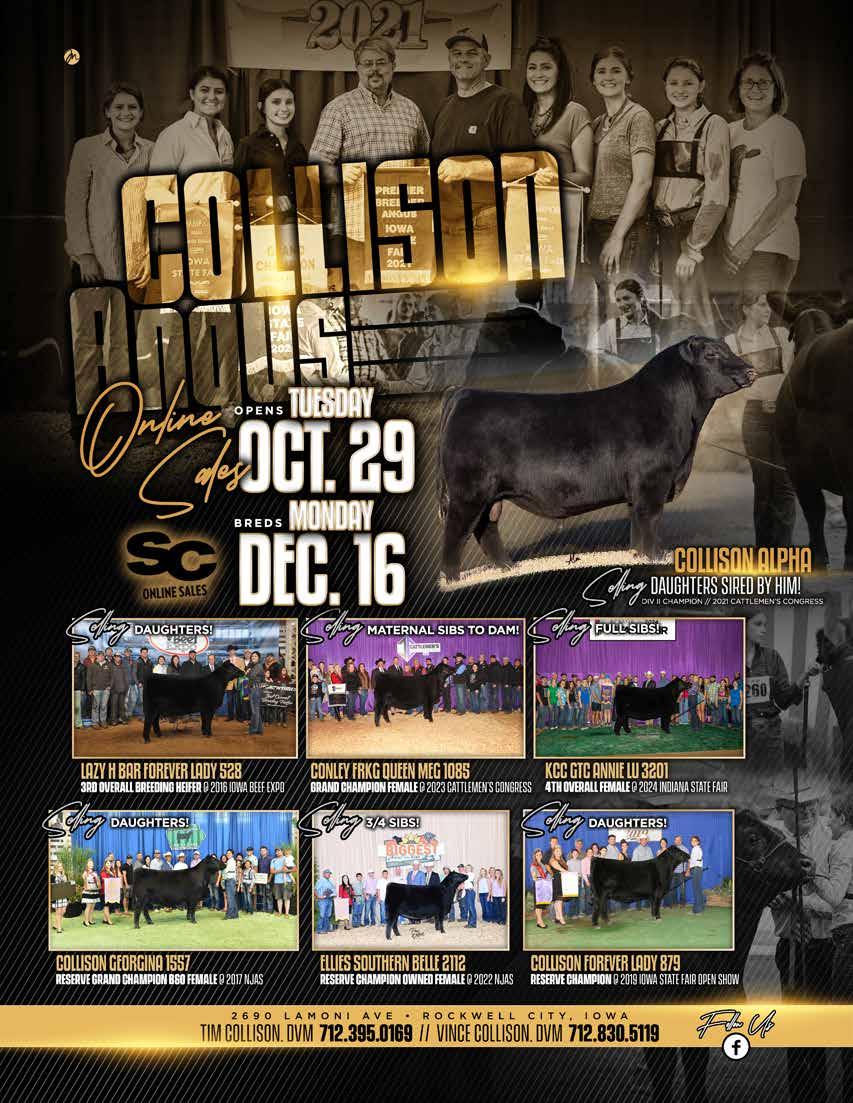










































































Thanks for joining us! We are a free, premier livestock publication featuring and serving seedstock and commercial beef producers nationwide. Raising cattle is so much more than a hobby; it is our livelihood and our passion. We understand that, and in every issue want you to see not only incredible cattle, but also relatable, entertaining, and informative editorial features for the producer with 5 or 500 head.
To us, you are more than reader or advertiser; you are a beef producer. We are committed to doing our best for you, every day. Please feel free to communicate with us, your input is appreciated. The Stockman (ISSN 2694-1740), Vol. 6, No. 8,
BILL SCHERMER, Owner/Herd Consultant
641.425.2641 |
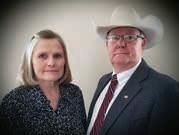
Bill and his wife, Nancy, have made their living in the cattle industry. He has provided marketing services for purebred and commercial breeders since 1970. Schermer Angus Cattle continues to be active in the NJAA and raises quality cattle near Clarion, IA. As owner of The Stockman, Bill leads by example providing producers with the highest level of customer service.
CHERYL KEPES, Assistant Editor
417.766.0990
cheryl@stockmanmag.com

Working for The Stockman is the perfect combination of two of Cheryl’s favorite things: writing and cattle. Cheryl has decades of experience as a professional writer. She finds great joy in sharing stories about people in the agricultural industry. Cheryl’s family raises registered Angus, Red Angus, and Simmental cattle in Fair Grove, MO.
KIM BANKS, Graphics
507.530.0914
kkbanks@frontiernet.net


Makayla serves as editor, graphic designer, and manager of The Stockman. Her focus and passion continues to provide high quality service and original promotional materials to cattlemen. She and her husband, Jared, raise their four kids, and together they run their family operation, JMF Herefords and SimAngus, near Morris in west central MN.
SARAH HILL, Editorial Writer
307.274.0419
sarahhill1007@yahoo.com

Cheryl Kepes
Sarah Hill
Justin Fruechte
Dr. Vince Collison Kirk Lynch
Kim is a graphic designer with many years of design experience. Producing creative marketing materials to help others look their best is what she loves doing the most. She and her husband, Kevin, along with their son, raise grain and have a small commercial cow/calf and feeder operation on the family farm near Lynd, MN.

Sarah lives on a small hobby farm near Arlington, SD, with her husband, Braeton, and their three daughters: Harper, 8, Vayentha, 5, and Aurora, 1. She grew up on a Missouri dairy farm and has an Agricultural Journalism degree from the University of Missouri. Sarah enjoys baking, reading, and gardening.
MARIA OPHEIM, Social Media Manager
507-828-1374
riawbr@gmail.com

to Makayla Flower, 1530 10th St. NW Holloway, MN 56249.
Maria, her husband Cade, and daughter Tawnee, of Mound City, S.D. currently reside on their fifth generation commercial & Limousin cattle and grain operation. Maria also works as a R.N. She is excited to promote producers through The Stockman’s social media platforms!
TY BAYER
715.573.0153
tcreds@gmail.com

Ty works alongside his family in their purebred operations, Country Lane Farm and TC Reds near Ringle, WI. An advocate for youth programs and dedicated cow/calf man, he is excited to help producers merchandise their cattle.
RON HINRICHSEN
785.770.0222
rlangus@bluevalley.net

For the past 30 years, Ron, his wife, Lynne, and their two children have owned and operated Hinrichsen Ranch, a registered Angus ranch in Westmoreland, KS. He has an extensive background in the agricultural industry and is excited to put it to work for each of his customers.
BRIGHAM AND MEGAN STEWART
785.747.8028
megancollisondvm@gmail.com

Brigham works alongside his parents at Mid Continent Farms, their large, multi-breed cow/calf operation in Kansas. Megan graduated from ISU as a DVM in the spring of 2021 and is a big part of her family’s Angus herd and Veterinary Clinic in Iowa.
STEVE WOLFF
701.710.1574
swolff318@yahoo.com

Steve is a third generation Hereford breeder - his family has been raising Herefords since 1951. He offers bulls by private treaty every year and has a heifer sale every fall. Steve also enjoys traveling to sales and shows whenever possible and likes camping as well.
BRANDON CREAMER
970.596.4965
creamer b 150@hotmail.com

Brandon owns Lazy JB Angus with his parents and sister in Montrose, CO. Raised in the cattle industry, he has a true passion for it and loves marketing quality cattle throughout the US.
JAN FORD
800.693.8048
jford17879@aol.com

With her passion for agriculture, Jan brings over 35+ years of advertising sales experience in the beef industry. She and her late husband Norm had a commercial Angus cow herd and grain operation near Tipton, IA, which her sons still manage today.
LORA HUTCHINS
615.293.3695
loralea1172@gmail.com

Lora owns and operates Destiny Angus Farm with husband Brian and daughter Morgan in Charleston, IL. They have raised and shown cattle successfully on the national level for several years. They also have owned a production herd with as many as 200 registered cows.
MARK SULLIVAN
816.304.0050
marksullivancattle@gmail.com

Mark Sullivan is a familiar face to many having worked for Sullivan Supply for many years. Mark brings many years of experience to The Stockman. Mark and his wife, Linda, and two children, Erin and Leo, live in Woodbine, Iowa, and have a small herd of Charolais cattle.
BARRETT SIMON
316.452.1792
barrett.simon8@gmail.com

Barrett comes with deep roots in both the Angus and Red Angus breeds with a growing base of customers marketing Continental based cattle as well. As an auctioneer, he represents many seedstock producers throughout the central plains. His direct ties to the commercial cattle industry are sure to be a benefit to customers of The Stockman.
CARTER WARD
carterward79@gmail.com
816.261.0891

Carter resides in Plattsburg, MO, with his girlfriend, Mandi, where they help run Ward Brothers Livestock with Carter’s family - their primary focus is Angus show cattle. Carter is also a partner in Campbell/Ward show cattle that specializes in the Hereford breed.




Lacy’s
Pembrook
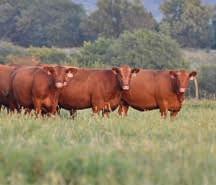
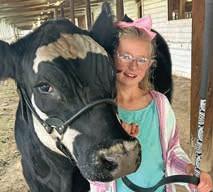
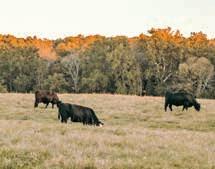
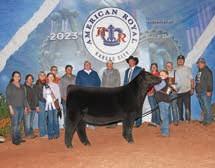

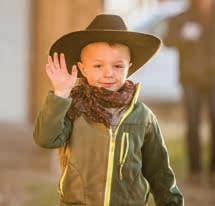

Our family has made some pretty big changes lately, and that is because we have decided to homeschool our kids! I never, ever in my wildest dreams had even considered homeschooling. It’s something that I knew nothing about and truthfully, I looked forward to a short “break” while the kids were in school. Even though our kids attended a great school, the atmosphere was not working for them - and for different reasons for each kiddo. It took my husband and I almost two years - or maybe I should say me, because Jared has loved the idea from the beginning - to muster up enough courage to seal the deal, pull the kids out of school, and set up shop at home.
We got our feet wet with curriculum over the summer because we wanted to ease into things, so we are still adjusting to our new way of life, but my goodness has this change been a blessing to our family. A lot of work for Mom? Heck yeah. I’ve heard other homeschool moms say they survive off a lot of coffee and even more prayers. But I know that I will never regret spending more time with my kids. What has surprised me the most is realizing how much my relationship has grown with each child - there’s just a different connection that grows and develops when we are always home together with teaching and learning in mind. Life is now a group effort to cook, clean, put away laundry, and of course everyone can help with cow work at any given time and we still find time for everyone to play.
We feel free - no one else’s schedule but our own. But it’s a type of freedom that can only be found by creating it. So my hope is that I might encourage one reader who is on the fence about homeschooling to take the leap of faith and jump in without looking back. My only regret at this point is I wish we would have started sooner. Our family has benefited greatly already, and I am thrilled to watch all the good things multiply in the years ahead.
In this October issue you’ll find inspiring stories from reputable producers such as Lacy’s Red Angus and Pembrook Cattle. Also, don’t miss the article promoting the benefits of kids showing cattle and being involved on the farm. We need more farm kids to strengthen our next generation! Enjoy, and I hope everyone has a safe and bountiful harvest.
November 1, 2024
December 1, 2024
January 1, 2025
February 1, 2025
March 1, 2025
April 1, 2025
May 1, 2025
August 1, 2025
September 1, 2025
October 1, 2025
October 10
November 10
December 1
January 10
February 10
March 10
April 10
July 10
August 10
September 10




half page $450
third page $350 reference card $80
double card $300
ring service call for a quote

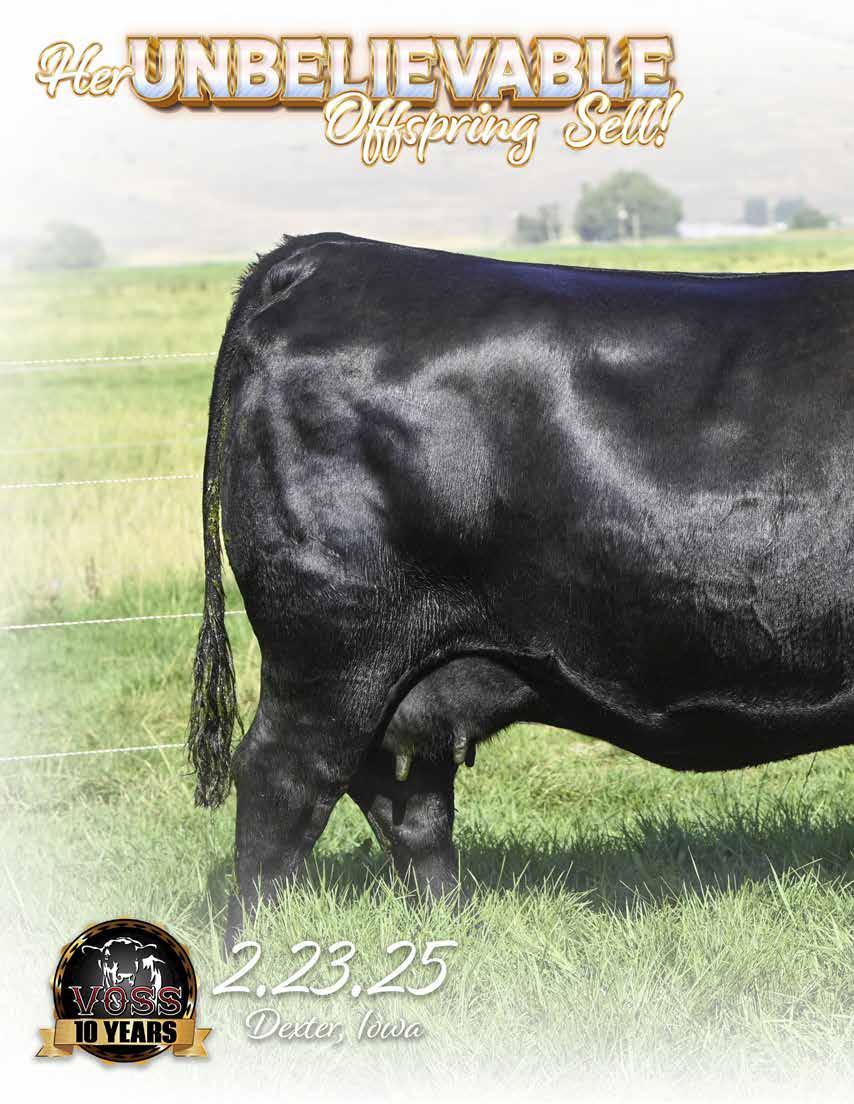
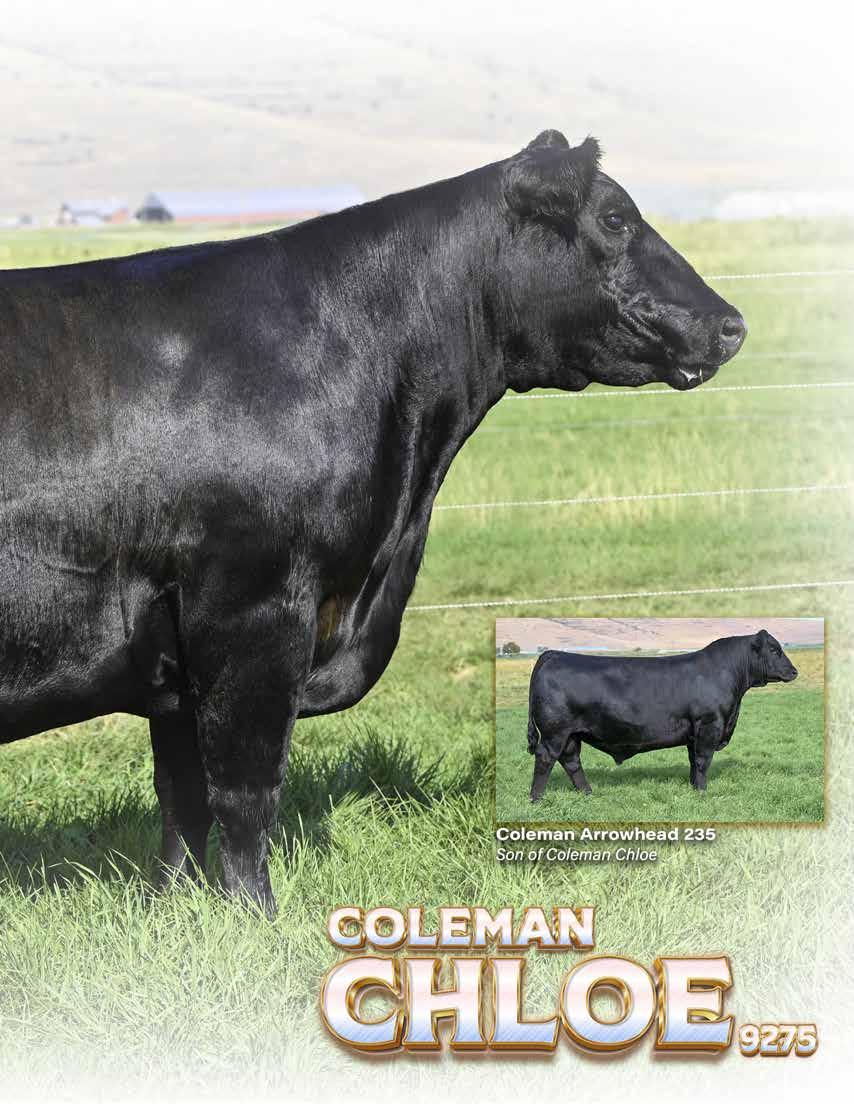






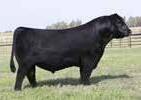
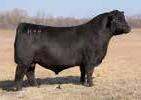



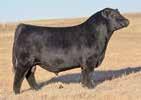
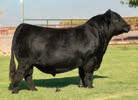

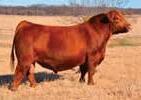
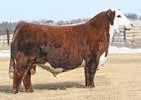


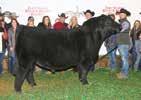


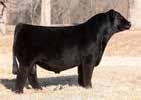

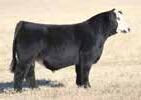
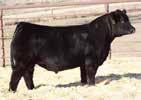
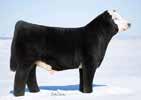
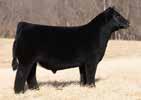






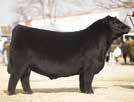


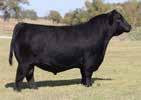




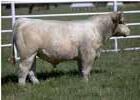





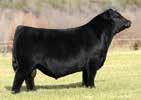
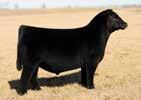

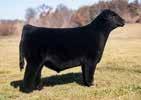

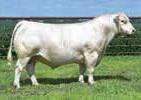


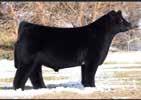

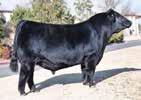
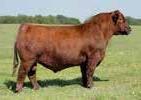
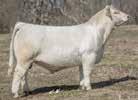
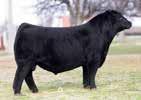

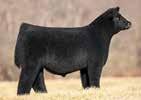
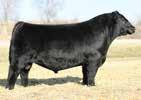
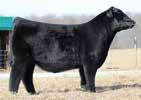
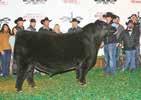

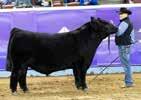

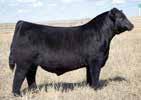
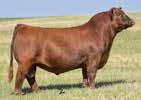
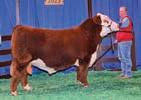
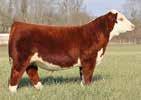

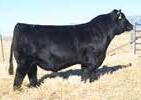
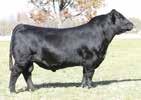

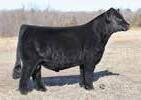


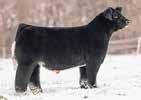
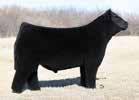

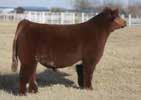
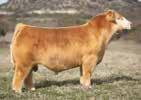





























































































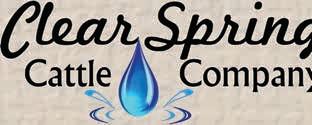












PROTECT YOUR BOTTOM LINE AGAINST REDUCED APPETITE AND WEIGHT LOSS.

Stress happens every time cattle are handled, transported or commingled. Cortisol levels increase from stress impacting appetite, health and weight gain. Studies demonstrate FerAppease® reduces the impact of stress on calves treated:*
• Reduced cortisol levels
• Improved appetite
• Increased weight gain

• Improved immunocompetence
• Improved health response, better recovery
• Decreased mortality
*Conducted by Dr. Reinaldo F. Cooke, Texas A&M University
HEALTHIER & HEAVIER CALVES = MORE PROFIT
CONTACT YOUR VETERINARIAN OR ANIMAL HEALTH PROVIDER TODAY.


By Sarah Hill
Lacy’s Red Angus, Drexel, Mo., has worked for decades in the quest to breed the “perfect cow.”
Red-hided cattle don’t get enough credit in the beef industry. These cattle feed millions each and every day, and yet they’re often overlooked in favor of black-hided animals. However, that’s not the case at Lacy’s Red Angus, Drexel, Mo. The Lacy family has been committed to raising high-quality, red-hided cattle for 70 years.
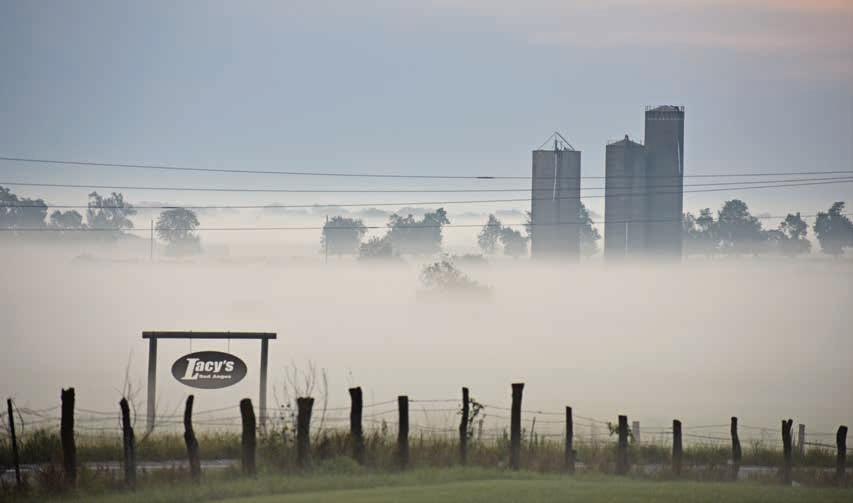
Dale and Kay Lacy got into the seedstock business in 1955, but the family has lived in West Central Missouri, since 1869. The family purchased registered Polled Herefords, which is the breed that current operation owner Dan Lacy grew up with. The family currently owns 1,200 acres of pastureland and rents another 320 acres.
“In the 1960s, Dad was utilizing artificial insemination and began experimenting with Simmentals,” Dan Lacy said. “The first calves were so impressive that the decision was made to breed all of our Herefords to Simmentals.”
As time went on, Dale experimented with other breeds, including Gelbvieh, Red Poll, and Red Angus but always remained committed to the Polled Herefords. Dale was diagnosed with cancer in 1990, and the Polled Hereford herd was dispersed in 1991.
“At the time, it was considered a very successful sale,” Dan said. “The timing was right, and we had a lot of Victor Domino bred cows, which were very popular at the time.” When the dust cleared, the only livestock remaining on the ranch was 17 Red Angus cows.
A few years later, Dale seemingly had defeated cancer and added another 40 Red Angus heifers to the herd. Over the next decade, the Red Angus herd grew to nearly 300 mature females. In the meantime, Dan
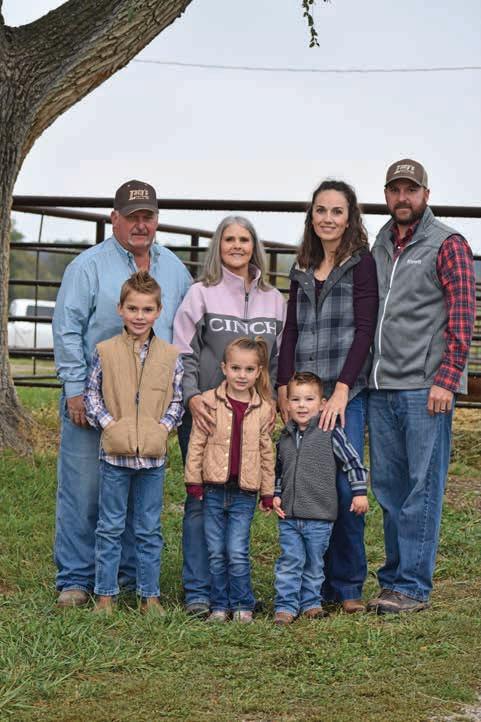
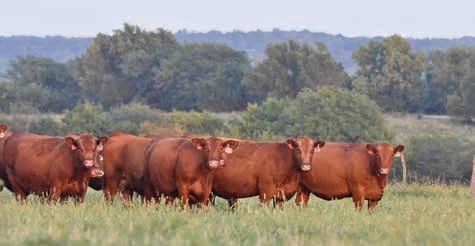
chose welding as an occupation and began a career in the building trades as a millwright, eventually specializing in power generation, performing maintenance inspections on large turbine/generators throughout the United States, first with Westinghouse and later Siemens Energy.
As time went on, Dan wanted to continue the Red Angus operation, but was unable to find a way to financially make it work, but did maintain a handful of his own cows.
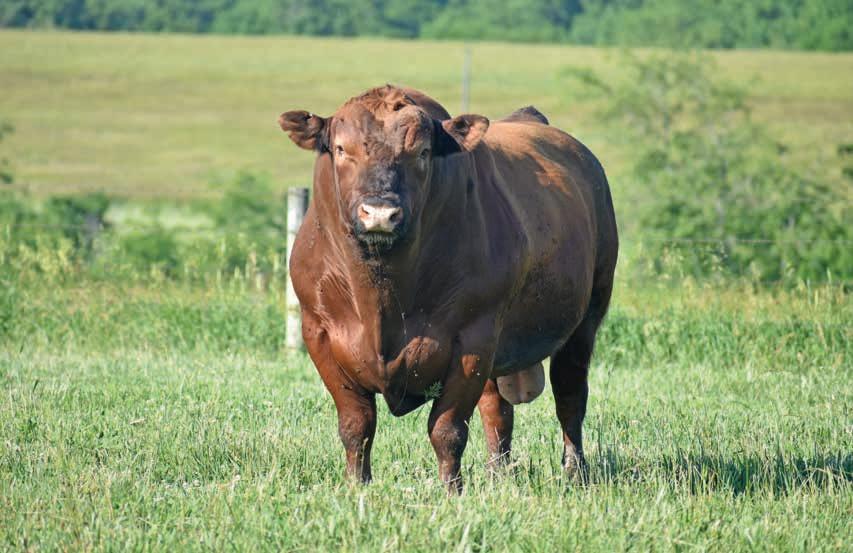
Just prior to Dale’s passing in 2011, he sold his entire Red Angus herd to Jon Marshall of Katy, Texas.
During fall 2013, Dan contacted Marshall about buying back some of the cattle. “Mr. Marshall agreed
to let me pick out 40 head,” Dan explained. “I was out-of-town in the middle of an outage, so I had a good friend make the trip to Texas on my behalf to ensure that the cattle and the deal was sound.”
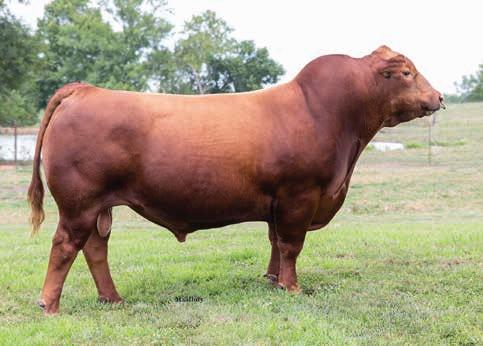
“I picked out about 60 cows based on pedigree, since I knew the most maternal cow lines from my dad were out of CCF Gold Bar 0251 and 5L Signature 5615,” Dan said. “They got here just before Thanksgiving.”
“The cows were thin and all open. We synchronized, AI’d them, and got them all bred with the exception of two or three,” Dan recalled. With that, Lacy’s Red Angus was back in business. Dan left his position at Siemens to focus full time on the cattle herd. “We started saving replacement heifers and growing the herd,” Dan said. “The next thing you know, we went from 50 to 60 cows to over 200.” Bulls and heifers would be developed, and the bulls were sold primarily through private treaty offerings.
He also consigned females in the Missouri Red Angus State Sale as a way to get the word out that Lacy’s Red Angus was back in business.
The Lacy’s utilize embryo transfer on a select few cows, implanting about 30 to 40 embryos each year. Today, the vast majority of the Lacy herd has the LACY prefix going back multiple generations—a fact that Dan is very proud of.
“In the beginning, I was using bulls that Dad had still in the tank, but I always felt like the calves out of our cleanup bulls that we raised ourselves were as good or better than the ones we got from the highly touted AI sires,” Dan said. “My dad was very particular, a bit of a perfectionist when it came to his cattle. He knew what he wanted, and he wasn’t satisfied until he achieved it. I never felt comfortable talking to someone about sires that I wasn’t knowledgeable about. At that point, I decided to utilize LACY bred bulls into our program and did just that moving forward. Eventually, we had to introduce some new genetics and have been doing so over the past couple years. Starting with this year’s sale, customers will start seeing a few new sire groups.”
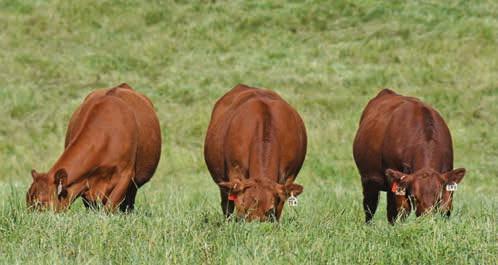
In 2019, Dan and Kelly sold nearly 100 head of registered Red Angus cows to Nick, Callie, and Stetson Curtis with MC Livestock, Archie, Mo. As part of the purchase, Kay leased nearly 500 acres to MC Livestock and Dan agreed to help the young couple with developing and marketing their bulls. In 2019, the Curtis family joined the Lacys for a joint sale.
“We develop and market bulls together, and I’m very happy to partner with the Curtis’,” Dan said.
“They both grew up in the business, have an exceptionally good eye for cattle and an excellent work ethic. Without them, we wouldn’t be having a sale.”
During the Covid-19 pandemic, Dan had the opportunity to buy some Polled Hereford cows whose genetics went back to one of Dale’s original cows purchased from the 1991 dispersal sale. Dan bought 10 pairs from Jim and Linda Reed, Green Ridge, Mo.
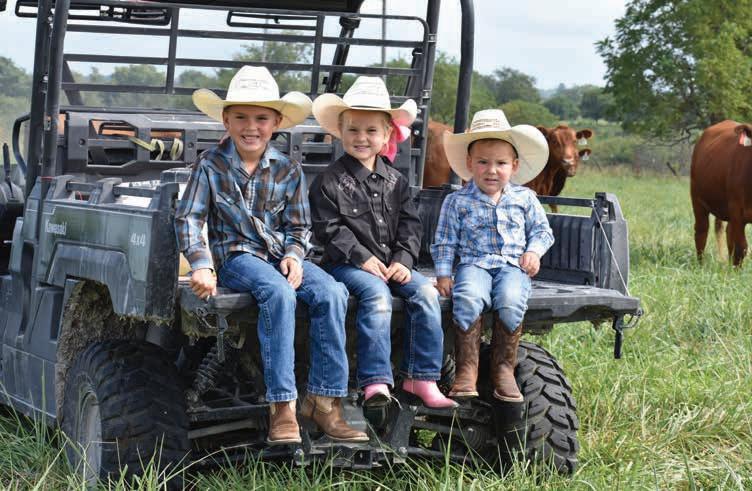
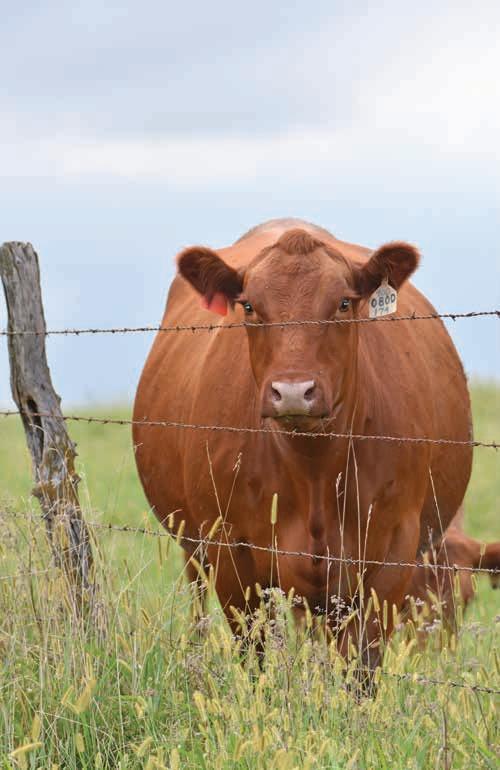
“Perhaps I was a little nostalgic, but I’ve always liked red baldie females,” Dan said. “We use the red baldies as recip cows, and there’s good demand for them. It’s been fun to recapture some of those old genetics, but it also allows us to offer all the tools to produce beautiful red baldie females. If I ever decide to put together a commercial cow herd, they’d be nothing but red baldies.”
Although Dan said the Lacys don’t consider themselves “show” people, the family has exhibited pen cattle at the National Western Stock Show (NWSS) and Cattlemen’s Congress the past few years, exhibiting the Champion Pen of 3 Heifers in 2016 NWSS and Reserve Pen of 3 Heifers in the 2022 Cattlemen’s Congress.
Today, Dan runs the operation
with the help of his wife, Kelly. At 88, Kay is still active on the farm. Dan’s son, Derek, and daughter-inlaw, Amy, are raising their three children on the farm, ages 10, 8, and 6. Dan’s sisters, Debbie Wheeler and Sherri Keegan, are also involved in the operation. Debbie and her son, Steve, focus on the Hereford side of the herd and plan to take over a larger role in the near future.
“My dad was always after the perfect cow,” Dan said. “He always told me that you’ll earn every dime you ever make selling bulls, and he was right.”
Dan focuses on matings focusing on maternal strengths, good udders, teat placement and fertility. Because they live in the fescue belt, Dan prefers cows with fine hair that slick off easily.
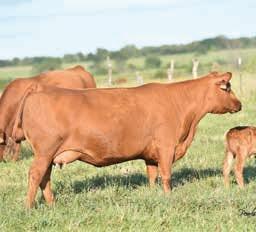
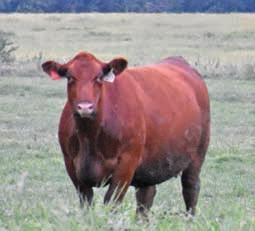
The current herd is split into two calving groups, with one group of 80 cows calving out during the first week of September, and another 45 cows calving around March 1. Typically, the cows are synchronized using a seven-day CIDR protocol and AI’d on standing heats for about four days, turning in the cleanup bulls after that.
The cattle graze year-round and are supplemented with hay that the Lacy family puts up. The cattle are on a good mineral program and are occasionally fed protein tubs. Although their pastures are primarily fescue, Dan tries to maintain a presence of legumes, utilizing red clover as well as lespedeza. Dan said that he tries to feed brome hay to the lactating cows.
Calves are typically weaned in early October and late April for the respective groups. The Lacys develop their own yearling bulls and females, which are also offered during the sale or sold by private treaty in the spring.
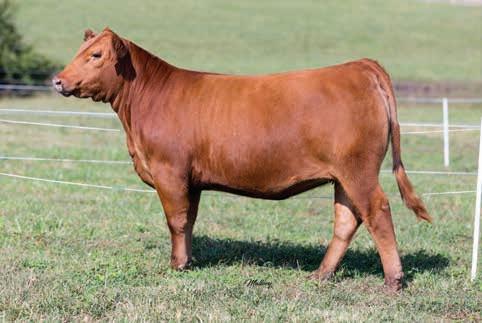
Recent drought conditions have caused Dan to reduce his herd in the past year or so. This year, Dan is offering their entire 2023 heifer crop. “We were heifer strong last year, so we’ve got more than 50 heifers to sell,” he said.
With more manageable cattle numbers, Dan can focus on getting his grandkids involved in the cattle business. All the grandchildren receive a heifer for their 8th birthday.
ANNUAL PRODUCTION SALE: Saturday, October 26, 2024 1:00 pm - Drexel, Mo. learn more lacysredangus.com
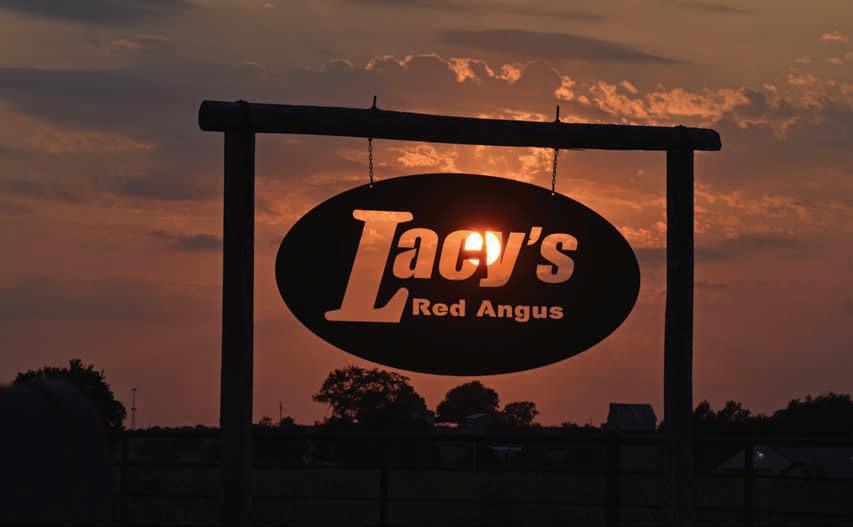


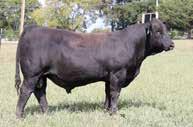
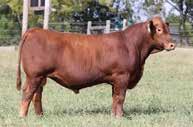




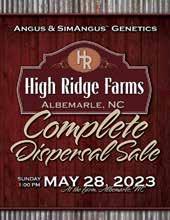



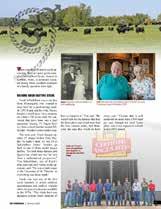
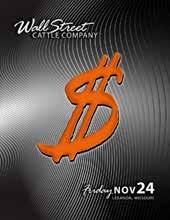





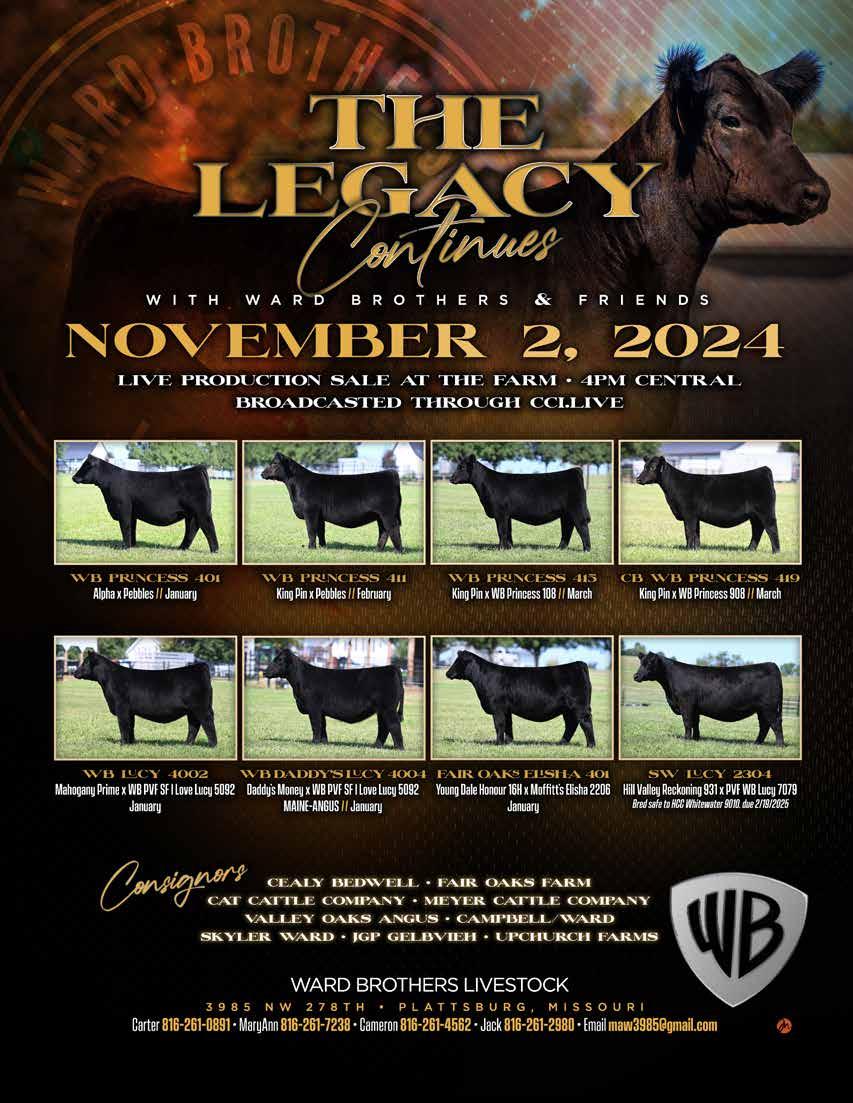


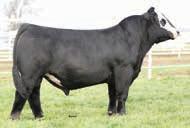
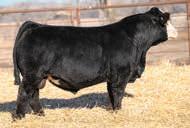
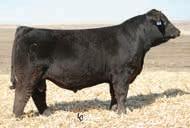
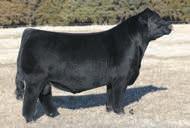

$6,000 in premiums was awarded at the first Missouri Simmental Association VitaFerm Heifer Xtravaganza held at the Missouri State Fair! $1,000 for Champion and $500 for Reserve (Purebred and Percentage Divisions) for exhibitors AND $1,000 for the consignor of the Champion heifer and $500 for the consignor of the Reserve Champion heifer (Purebred and Percentage Divisions). Heifers were consigned and purchased at Missouri Simmental Association Fall Harvest and Spring Sales. Congratulations to Missouri Juniors who purchased these heifers and to consignors who offered quality Simmental females!

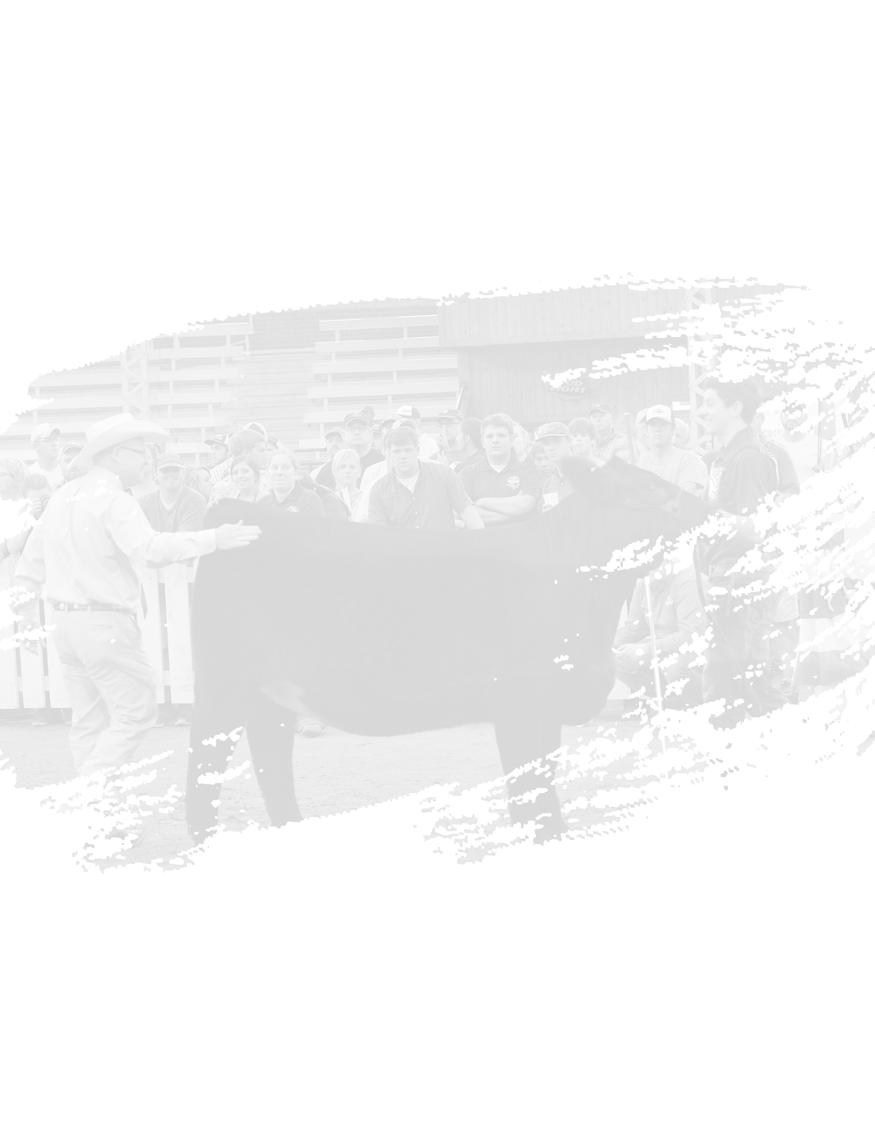
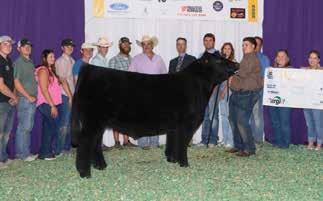
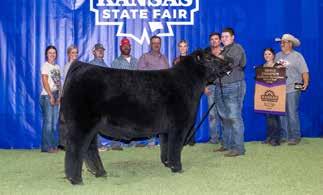
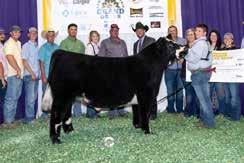
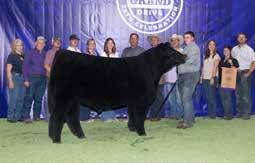
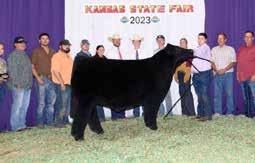
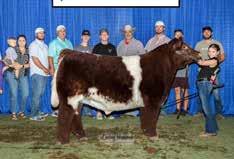
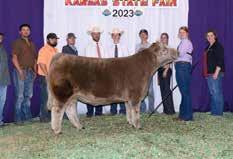
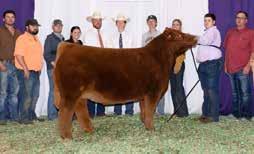


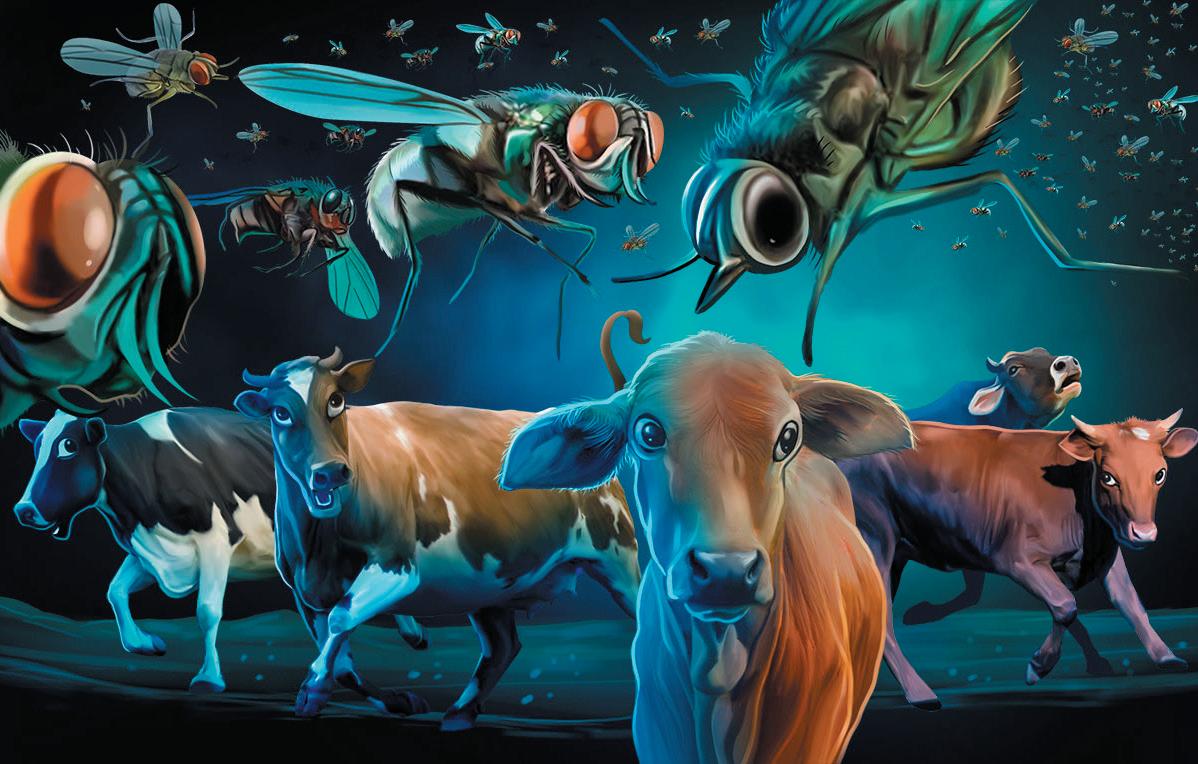
Don’t let resistant flies come back to haunt your cattle next spring.
Put a big dent in resistant fly populations with a fall application of BRUTE® .
Studies show that the best way to stop resistant flies from attacking your cattle next spring is to hit them with an application of BRUTE® Pour-on for Cattle this fall. BRUTE® controls horn flies, face flies and other biting flies, as well as Gulf Coast ticks and lice.
So make sure resistant flies don’t come back to haunt your herd next spring by treating your cattle with BRUTE® this fall.
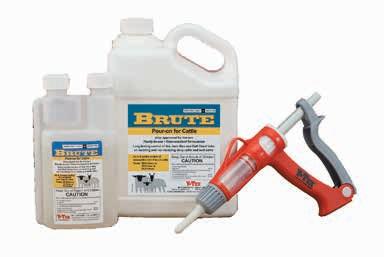
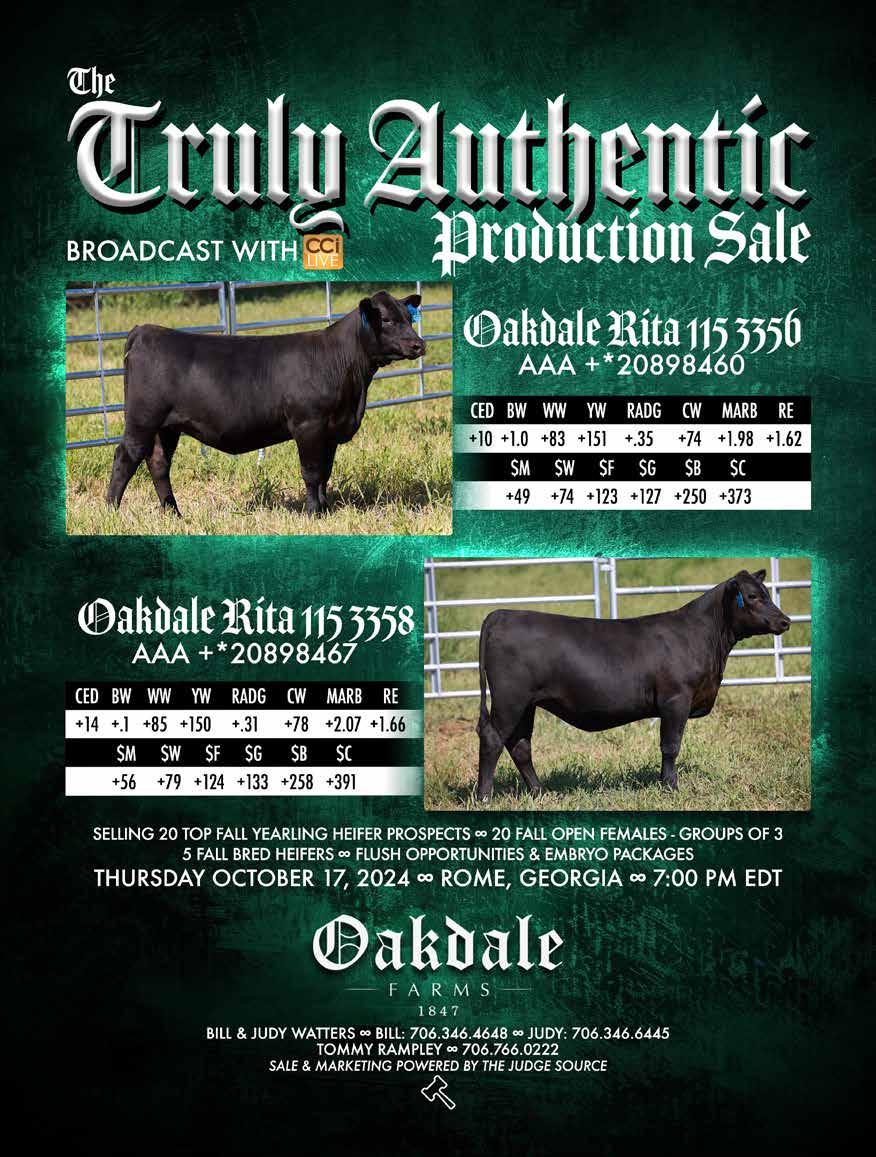
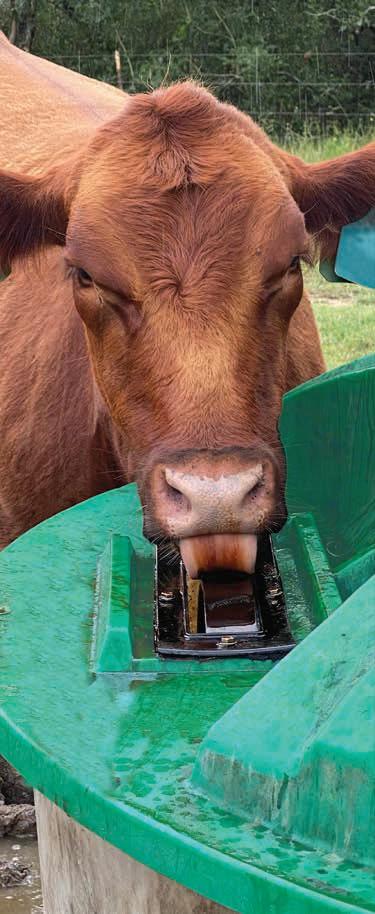

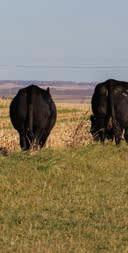
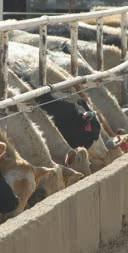

A FULL SERVICE ANGUS & BEEF OUTFIT
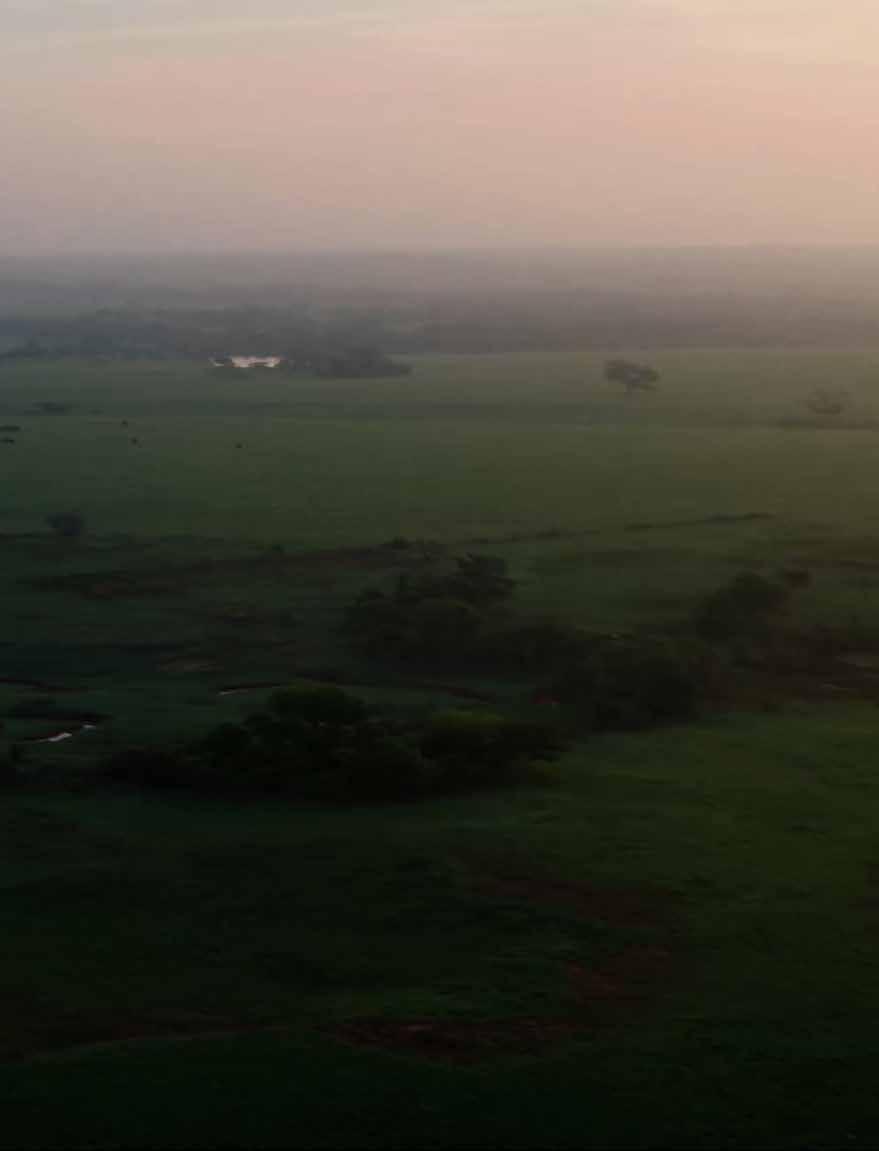
Fred Linz | Owner
Ben Weis | Ranch Manager
Anthony Randall | Cattle Procurement Manager

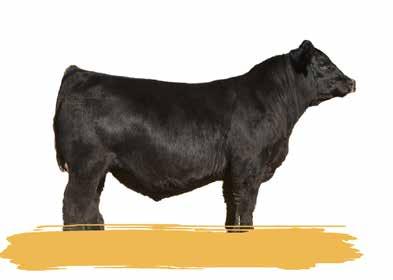

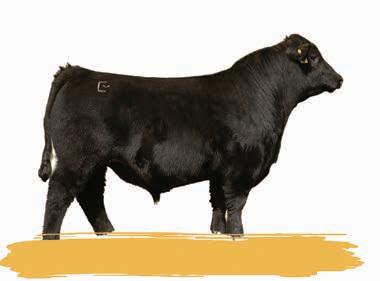



Jessica L. Sperber, Nebraska Extension Feedlot Specialist University of NE - Lincoln, UNL Beef beef.unl.edu
University research you can use.
Adding value at the auction block.
As we near the feedlot fall run and cow/calf producers market their calves at the highest prices received to date, every additional pound of gain has greater profit potential.
Profitability and feasibility vary from operation to operation, and producers should invest in management and nutritional strategies that will work for their specific operation. Developing a marketing plan that evaluates different management decisions, health protocols, and programs is essential to identify what is most profitable for each independent operation.
Merck Animal Health, in conjunction with Superior Livestock Auction and Drs. Tonsor and Renter of Kansas State University, compiled data on 898,500 calves averaging 571 lb at time of sale from January to December 2023, consisting of 7,612 lots with an average US national price received of $2.63/ lb. The Superior Auctions data set explores the impact of genetics, health, and management factors

that impact the price received on 5-weight calves at time of sale.
Steers consistently receive a higher dollar value compared to heifers, with 5-weight steers receiving an additional $26.33/cwt over heifers.
Much of the spread in steer and heifer-calf pricing is driven by the historical reluctance of the feedyard sector to feed heifers, although, with the tightened feeder cattle supply in the US, heifers are currently receiving equal live and dressed pricing as steers in the fat cattle market.
It is evident from pricing data that cattle buyers prefer polled calves that are medium to medium-large in frame. Polled calves/no horns consistently bring a premium in the ring, returning an additional value of $17/head over calves with horns present. Medium to medium-large
frame calves returned $22/head over calves with small frame. Genetic merit impacts cattle buyer willingness to pay. For example, for 5-weight calves marketed through Superior Livestock Auctions, calves that were marketed with the Superior Progressive Genetics Program claim returned $20/head more than calves marketed without the claim. The Superior Progressive Genetics program identifies load lots of calves that are sired by top genetics in the US beef industry. Heterosis offers value in terminal cattle, specifically when crossing British breeds (Angus, Hereford) known for their marbling ability with Continental breeds (Charolais, Limousin, Simmental) known for their growth potential and increased yield.
With reduced beef cow numbers and cattle supply tightening, every additional pound of gain on the calf at time of sale matters. The use of one suckling calf implant administered after 2 months of age results in 23 lb of additional gain at time of sale. Using the 2023 national average price received of $2.63/lb, implanting with one suckling calf implant that costs ~$1.50 per dose, returns $59/head or $10.33/cwt.
If producers forgo the use of a suckling calf implant to enroll in a Non-Hormone Treated Cattle (NHTC) program or Global Animal Partnership (GAP) program, the average return for NHTC and GAP program calves, compared to calves not enrolled in either program, was $37/head for NHTC and $25/head for GAP.
A healthy calf is a profitable calf, and proper nutrition and supplementation are important for calf performance. An additional 30 to 60 pounds can be gained prior to time of sale via creep feeding. There are various types of creep feed systems, including: grain-based high energy, limit-fed high protein, and high-quality forage creep. Producers should calculate their cost of gain when analyzing the profitability of creep feeding, to ensure that the value received for additional pounds of gain overcome the cost of the feed. Producers can utilize https://beef.unl.edu/calculating-value-of-gain to better understand value of gain. With calf prices being exceptionally high for the 2024 fall run, there is a greater likelihood that management strategies, like creep feeding, return a profit.

Value-added health programs influence calf profitability and producers should inquire with their veterinarian about programs available. Pre-conditioned calves consistently top the market and implementing weaning prior to shipping is favored.
As feeder calf prices increase, don’t forget about best management practices– every additional pound gained comes with increased value.
Interviews with the authors of BeefWatch newsletter articles become available throughout the month of publication and are accessible at: www.go.unl.edu/podcast.
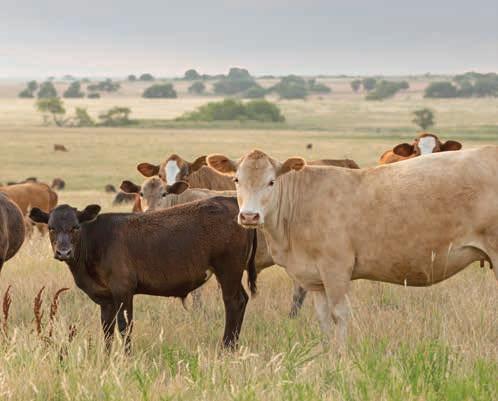



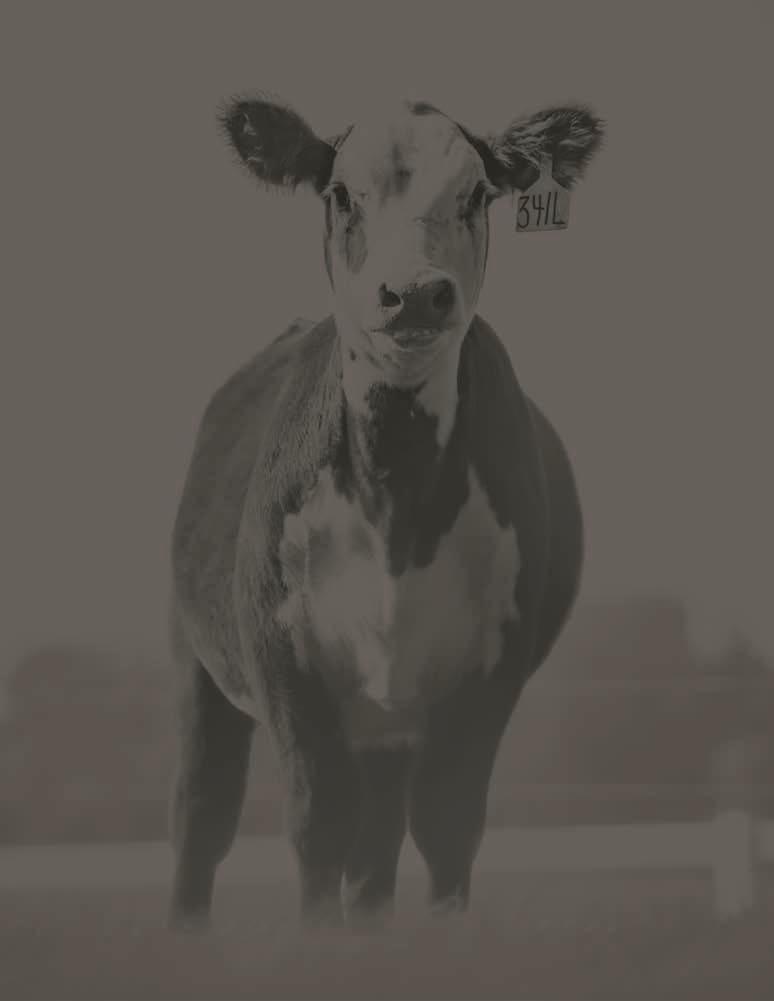
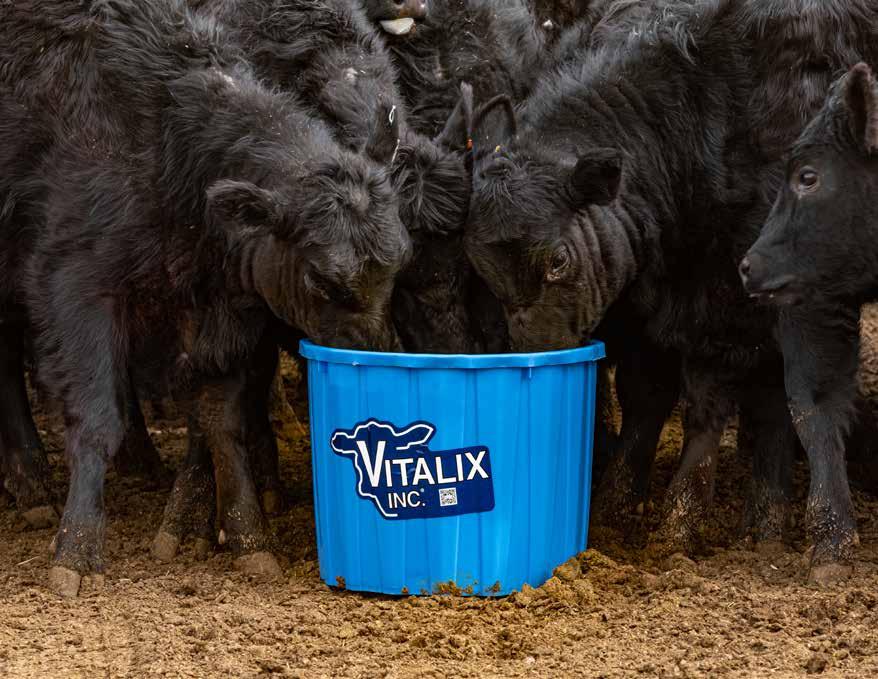
“Vitalix Kickstart Weaning boosts immunity and health when we’re weaning calves. It has worked tremendously. We achieve our goals for health every time.”
- Tyson Narjes, Narjes Cattle Company - Sidney, Nebraska -
Vitalix Kickstart Weaning – which includes NaturSafe® and Zinpro® Availa 4®–is tailor-made for cattle under stressful conditions and formulated specifically to reduce the impact of stress on cattle’s overall wellness and performance. This product is Zinpro® Verified. Learn more from your sales manager today!


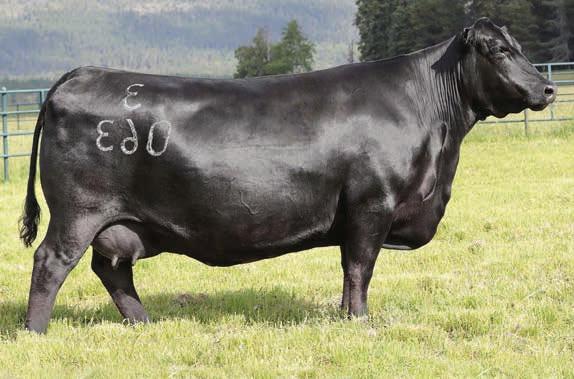


MILL BRAE
JOANIE 3063
Selling half embryo interest in this proven herd bull producer! She is the dam of Mill Brae Benchmark 9016, Montana Judgement 1038, & Montana Killebrew 2049. Also selling 2 daughters by Coleman Glacier.
Selling half interest and possession with the option to double. The dam of ZWT Rendition 3039 as well as several high performing sons and daughters. Also selling a bred heifer by SAV Renovation 6822.
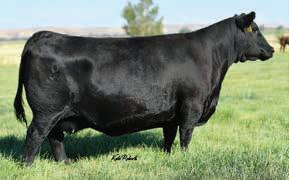
PINE COULEE PATSY A13
Dam of last year’s high-selling female. Offering daughters by Hummel South America, SAV Throttle 2961, & SAV Blueprint 2933. Also selling a flush to the bull of your choice!
80 Registered Angus Females
> 30 Featured Spring Heifer Calves
> 25 Fall Yearling Heifers
> 10 Fall Bred Heifers
> 10 Spring Bred Heifers
> 5 Select Fall Calving Cows
60 Registered Angus Bulls
The Deepest set of Herd Sires ever offered from ZWT
> 25 coming 2 year olds
> 35 Spring 18-20 month old bulls
80-100 Commercial Females
> Including an outstanding set of 50 Black Baldy spring bred heifers!
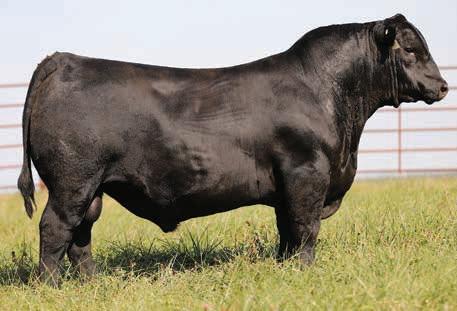
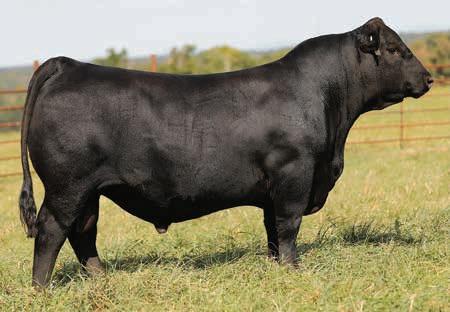
20696520 – Selling 1/2 interest and full possession Without a doubt the MOST POWERFUL herdsire prospect ever offered from ZWT Ranch! He combines muscle shape, power, substance, and bone in an incredibly complete package. We have already AI’d and flushed cows to this High Upside young sire.
20729175 – Selling 1/2 interest and full possession
Might be the best son of Bar E-L Natural Law 52Y walking! Tremendous length of body, yet deep, thick, and sound. His dam is one of the stoutest SAV Resource 1441 daughters you will find.

20696535 – Selling 1/2 interest and full possession
One of the last sons of Rose 918 we will offer! He is as deep, soft, and complete as you can make one. Should carry on the heritage of his illustrious dam. Don’t miss this one!

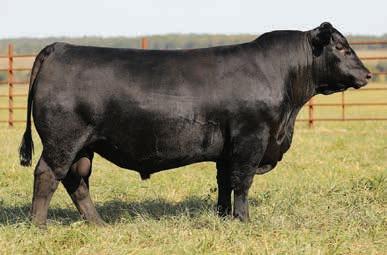
20696541 – Selling 2/3 interest and full possession
This ‘No holes’ Rainfall son has maternal greatness throughout his pedigree. Combines his sire with SAV Prosperity 9131 and SAV Net Worth 4200 on the dam’s side. Should produce some incredible, productive daughters.


By Cheryl Kepes
Sacrifice. Loss. Frustration. Tears. Heartbreak. These words are rarely uttered by parents when describing their child’s experience showing cattle. More often the rhetoric associated with kids raised in agriculture focuses on responsibility, work ethic, and determination.
Though those character traits are
immensely important, some parents point out there are far deeper lessons learned in and out of the show ring. Lessons that shape the core of a child’s character and act as an anchor through life’s most difficult journeys.
There are endless stories, all wonderful and unique, that could
be recounted on this topic. In this article, The Stockman will simply share a glimpse of two families’ experiences. The Reid family and Fawcett family graciously and honestly opened up to The Stockman, candidly sharing the hard truths and life-changing lessons that are molding their kids both now and in the future.
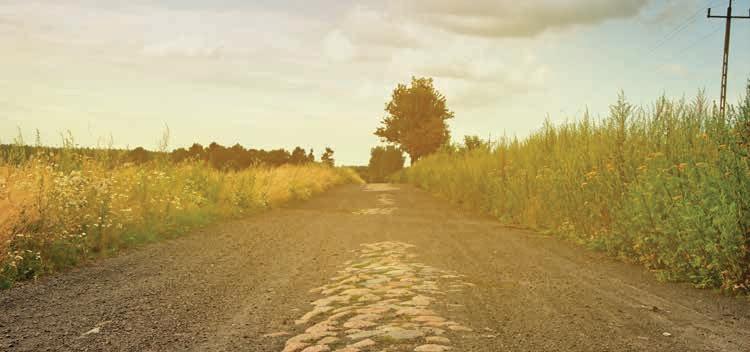
Eight-year-old Brooklynn Reid’s bright eyes, strawberry blonde hair, and infectious smile could melt a person’s heart in an instant. She’s the oldest child of Jared and Megan Reid, owners of Reid Cattle, in Platner, Colo. This past year, Brooklynn worked with and showed her first steer, Duke. Taking on a steer project was her choice, something she wanted to try. From the day the family brought Duke home from Unger Show Cattle, there was a connection.
Though the Reids knew what to expect, they significantly underestimated the impact showing Duke would have on their family. Megan Reid described the family’s experience with Duke this way:
“Brooklynn and Duke had a bond like no other. She adored him and constantly wanted to be in the barn with him. Within a few weeks, Duke became part of our family. We started each morning with his feeds and our morning chats. We ended each day with his feeds and bedtime stories.
Our kids all fell in love with our big guy, Duke. Washing Duke was the highlight of any day. The kids loved giving him a bath, with extra soap, of course, and more Revive than was probably necessary!
Brooklynn worked hard to learn how to feed Duke his mixed ration and was always attentive to remember what she needed to do to keep him growing like he needed to. Duke and Brooklynn walked hundreds of laps around our driveway in their 10 months together. Every once in a while, they would wind up right outside our living room window just so he could peek inside.”
As the months flew by, Brooklynn’s love for Duke swelled. In fact, the whole family was smitten. Throughout the entire process, Jared and Megan seized opportunities
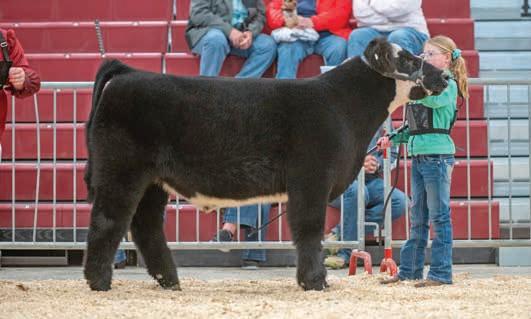
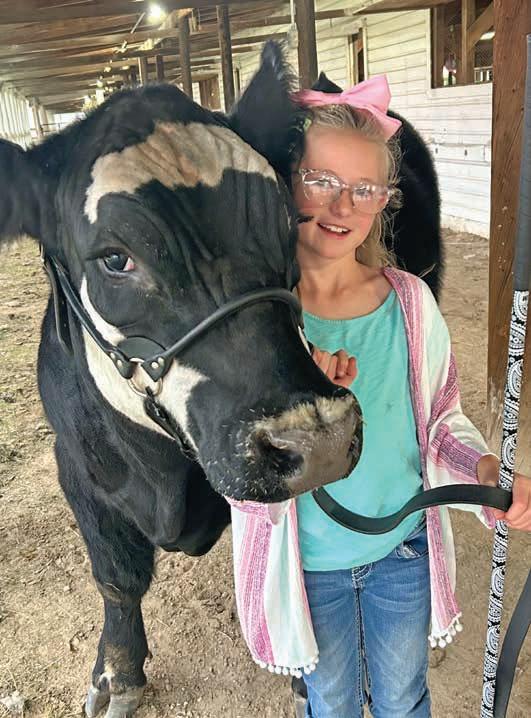
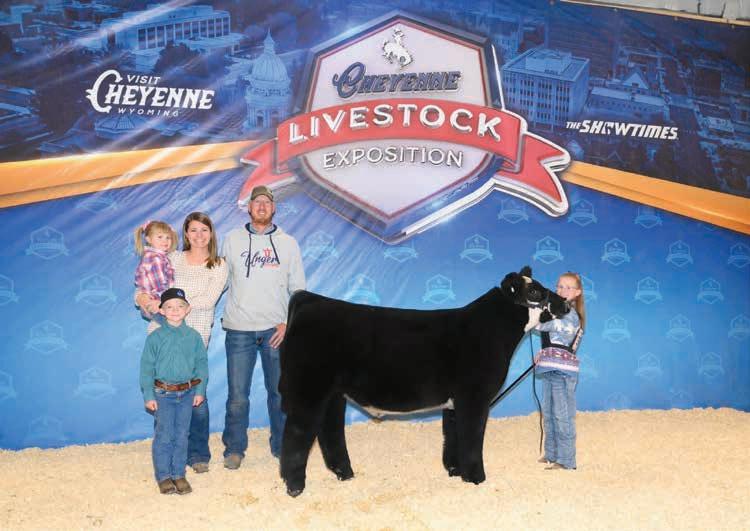
to share with Brooklynn about the logistics and outcome of the county fair steer show and sale. They tried to prepare her. Heck, they tried to ready themselves.
Jared and Megan are their county fair’s beef superintendents and have served in that role for almost a decade. Older kids who show steers frequent their Angus operation and mentor the Reid children. Jared showed steers when he was growing up. So, yes, they knew what was right around the corner for Duke. They are a ranching family; it was no surprise.
But what was a surprise to Jared and Megan was how little, if any, their experiences served to prepare them for their child’s heartbreak. Megan continued sharing their experience:
“Our county fair came way fast-
er than any of us ever imagined. We had the talks about what would happen and the reasons why Duke had to be sold, but that didn’t make the day any easier.
The night Brooklynn walked Duke to the show ring for the sale was the last walk they shared. She talked to him on the walk and made sure he knew she loved him bigger than all the steers in the barn. As we took his halter off that night to say goodbye, we all shed tears. Tears of joy for a wonderful year and the most amazing bond, tears of sadness for the loss we had all just endured.”
Every member of the Reid family cried that night. Even Jared. His tears were for Duke but more for his big-hearted daughter. “That was probably one of the hardest things we have ever done as parents, to watch her sit there and cry
and know that we couldn’t make it better,” Megan explained. “We did everything we could for her. We bought her a stuffed animal that looks like him, we had a special tag made for him that she got to keep, we kept his halter. We tried to do things like that to make it feel better.”
Even minutes before the steer sale, the Reids seriously contemplated buying Duke back. But the ranching parents knew in their heart the value of Brooklynn walking through adversity and healing from heartbreak. So, they let Duke go. They chose to allow their daughter to walk a difficult path, one that would give her the opportunity to build strength, resilience, and confidence.
“Our kiddos have been very blessed in their life to not have to have ever really suffered a ton of loss personally of someone super close to them. So, having this be something she has experienced does set her up to handle what life is going to throw at her, from loss to hardships,” Megan shared.
Working with Duke opened additional avenues for Brooklynn. She forged new friendships, and the Reid family connected with other show families. Jared and Brooklynn’s father-daughter bond strengthened during the hours they spent working sideby-side in the show barn. The daily discipline required to care for Duke made Brooklynn more
responsible and self-confident. If the Reids had to do it all over again, they would and so would Brooklynn. “She stepped into the barn for the first time a few days ago. That also has been hard because she hasn’t wanted to go down there and so you worry. Should we do this again? Can she handle it? She finally went back in two days ago and said, ‘We need to get this cleaned up because we are going to bring a new steer in here.’” Megan said. “The life lesson that she learned there is so much of what life is about. Life is about doing things and sometimes having to face these harder things that have to happen, but it was worth it,” Megan added.
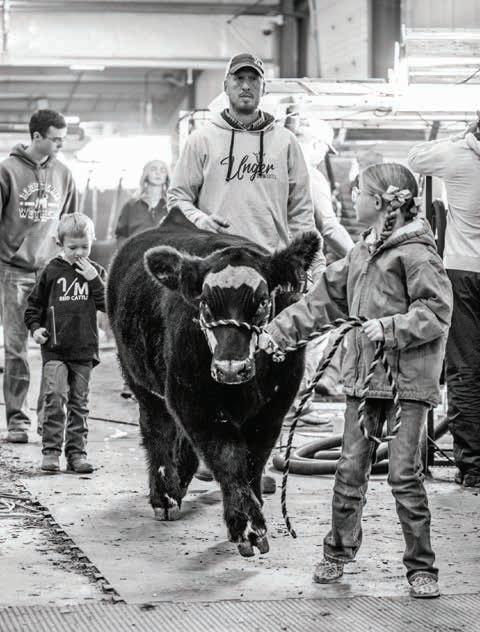
A statement many parents implore to encourage their children is the declaration - hard work pays off. It pays off in purple banners, goals scored, or top grades earned. But what many kids aren’t told or don’t learn is sometimes hard work doesn’t pay off in the way they might want or expect.
All the effort and preparation in the world still may not get them grand champion ribbons, all-state sports honors, or class valedictorian. It’s a harsh reality. But many show parents believe if their kids learn the right perspective about hard work, it’s a lesson that will position them for even greater success in the future.
Danny and Kyla Fawcett are owners with extended family in Fawcett Elm Creek Ranch, located in Ree Heights, S.D. They appreciate the important life lessons their children, Hollis (14) and Ivy (12), learn from working with show cattle. Danny Fawcett explained it like this:
“Our family shows cattle to win, but winning is rare. It’s about the connection between hard work and the rewards. Sometimes the reward is a top prize and sometimes the reward is the pride from looking at your project and thinking how far it has come with all the hard work that has been put into it after being placed in the middle of your class.
It’s about learning hard work, spending time as a family, networking with other like-minded youth, and a level of responsibility that sets these stock show kids up to excel compared to their contemporaries at school as they enter adulthood.
Expect to win? Not in our show barn. But just like any sports coach we demand the best from our kids while doing the daily things in preparation, so that if they are lucky enough to be in the hunt for a top prize, they know they have done everything they could have to be ready.”
The work ethic of show kids is unmatched. They invest countless hours caring for their animals before and after school, many times extra early or late because of conflicts with sports practices. Show kids’ “pre-season training” lasts for months and then it really ramps up. In the 90 days prior to show season, many kids spend long stints in the show barn, morning and night with no days off. A year of work, even longer in some cases, for the chance to compete at several shows. All the while missing out on opportunities to hang out with friends or go camping or to the lake.
So, just imagine the frustration and disappointment if all the time, work, sweat, and sacrifice seemingly failed to pay off. It happened to Ivy this summer at the Junior
National Hereford Expo. Danny shared what happened that day:
“My daughter, Ivy, exhibited her heifer at junior nationals and it was a learning experience for her as she has been accustomed to success at a high level, earning a couple national banners over the last few years. But at the show she was 10th in class. A blow to her ego. A grounding that was needed for growth as a person.
In a time of watching kids throw fits with no respect for their coaches and no sense of how those fits reflect on their families, I was proud of how she handled herself. I could see the disappointment on her face as she exited the ring, but there was no throwing her show stick or throwing a tantrum.
We walked back to the stalls with few words spoken and we discussed the situation one-on-one. She was
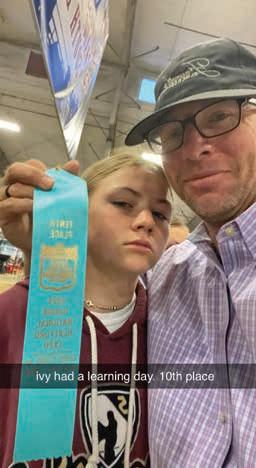
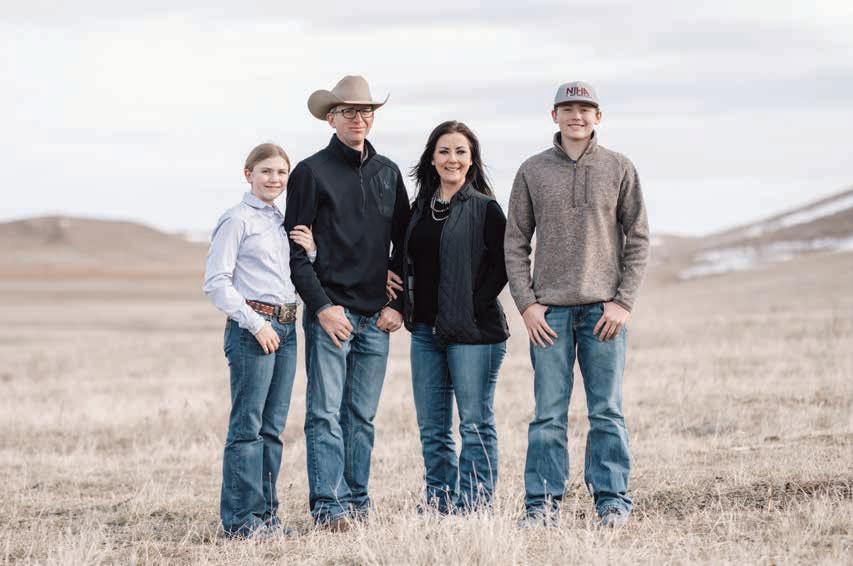
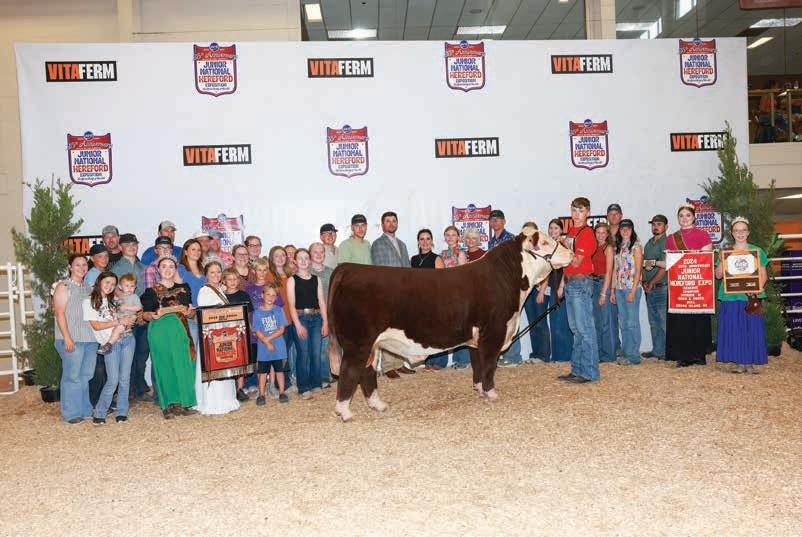
able to contain her emotions until we were alone. She was extremely disappointed after so much work spent on her project which at this point wasn’t just a project, it was a friend. She cried. I tried to make the most of this moment and the importance of not just basing her project year on winning a banner, as the real reasons for the project were unfolding in front of her eyes even though she couldn’t see it - This is a learning day.”
The Fawcetts want their kids to learn perspective about the genuine value of hard work. “What these kids gain from these projects is hard to explain. But there is no better way for them to gain an advantage over their contemporaries as they enter the workforce than the extreme highs and lows, the intense work and dedication, and the ability to see the connection between
“Expect to win? Not in our show barn. But just like any sports coach we demand the best from our kids while doing the daily things in preparation.”
-
hard work and reward that livestock projects offer when in a high expectation setting,” Danny said.
Experiences like Brooklynn’s and outcomes like Ivy’s, serve to form youth into steadfast adults. They gain understanding far beyond their years. They learn on the other side of grief waits resilience and healing. They learn facing adversity builds confidence and character. They learn the blessing
of hard work is less about the end prize and more about the reward of self-discipline that comes from showing up every day even when its hard.
Do kids who show livestock endure sacrifice, loss, frustration, tears, and heartbreak? Absolutely. But do they learn invaluable life lessons along the way that will guide them as they get older? Without a doubt.

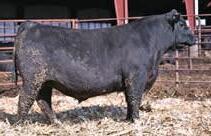

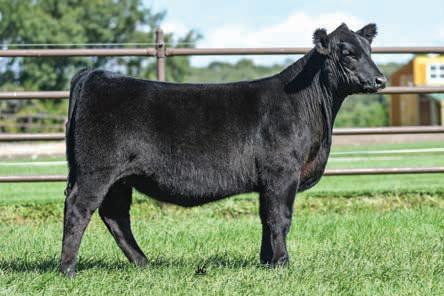

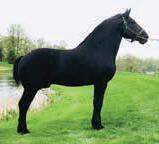
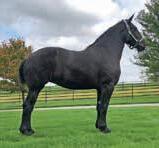

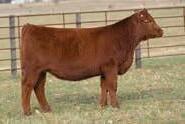



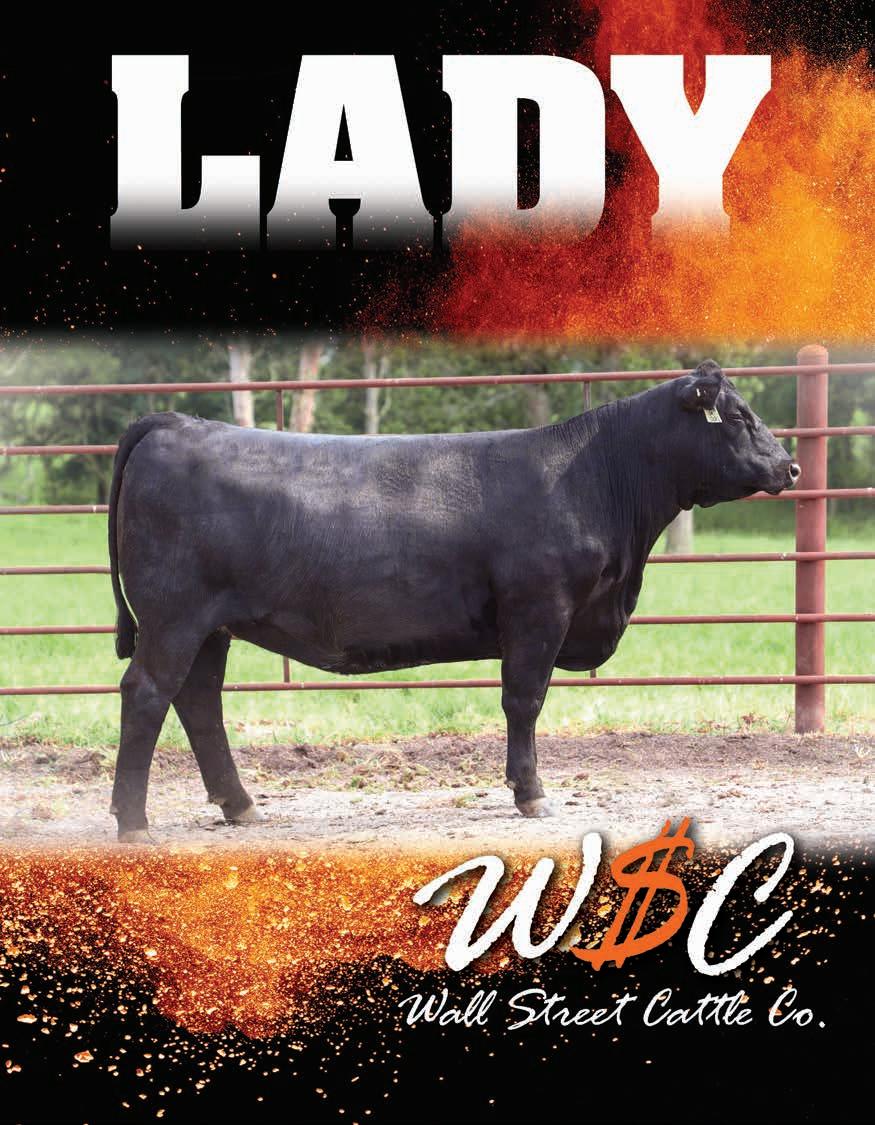
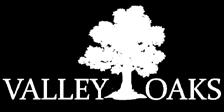
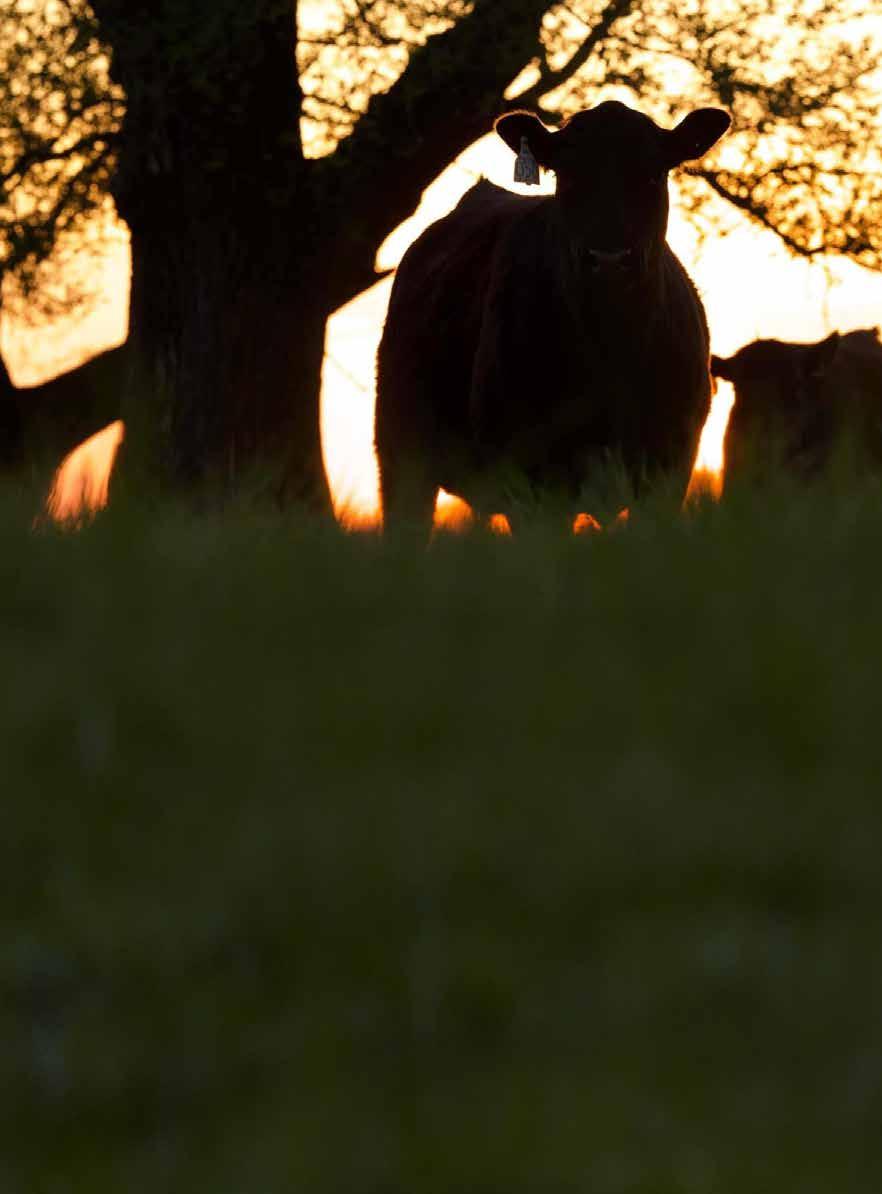
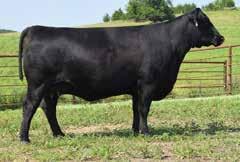
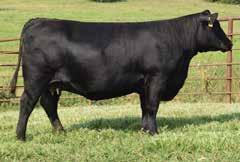
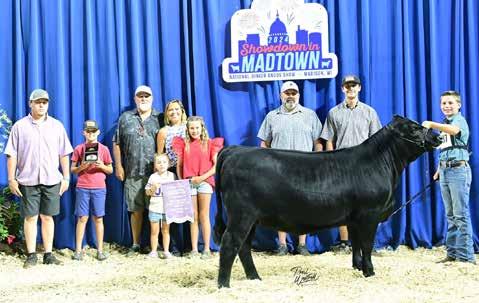
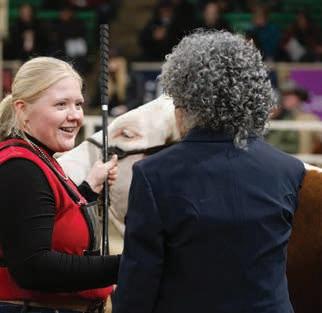
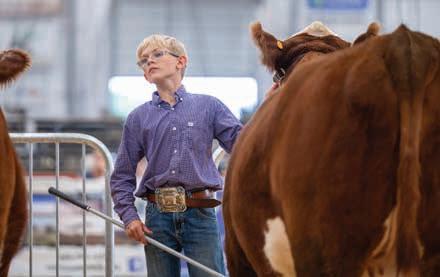

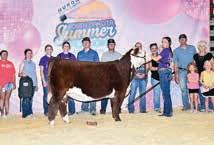



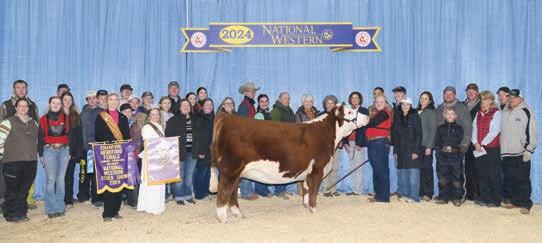
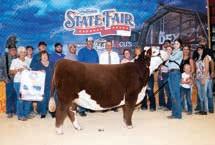

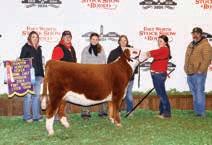



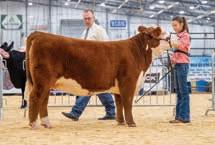
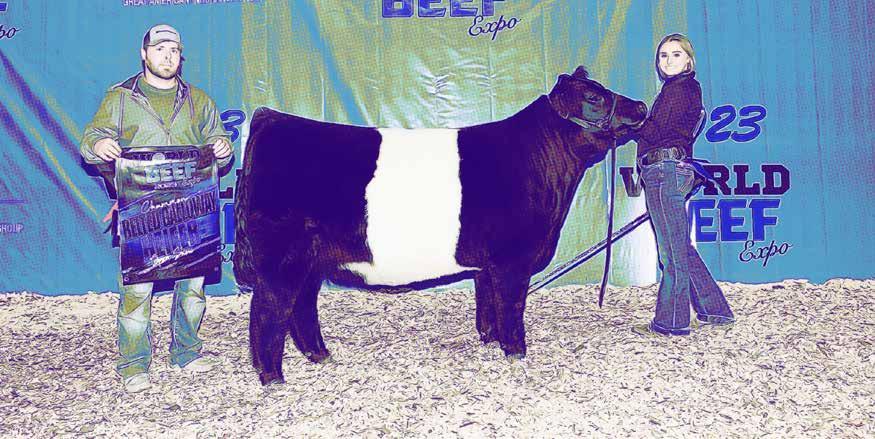

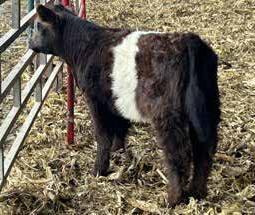
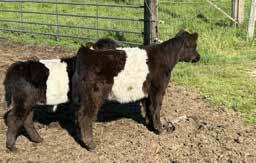
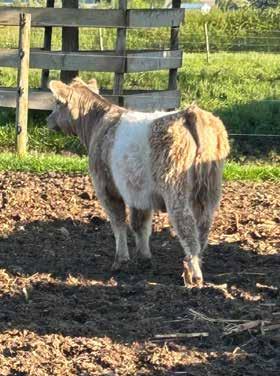
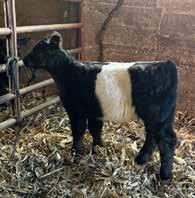
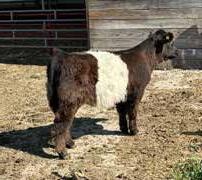



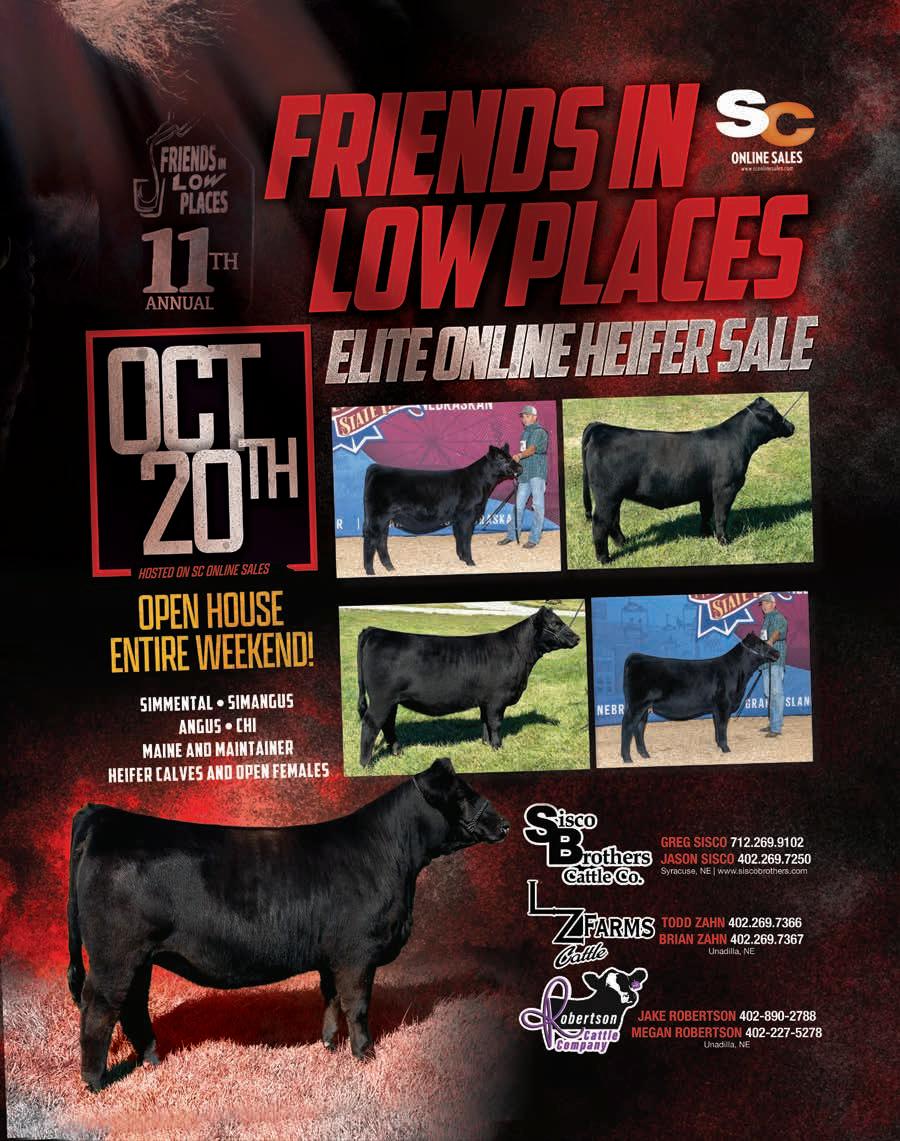
SIMANGUS BY PERSEVERANCE






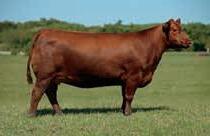

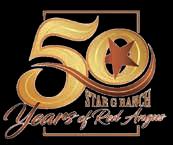
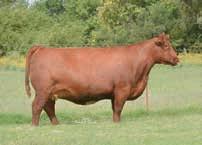


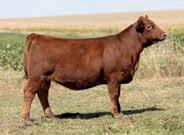


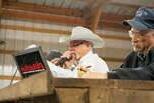

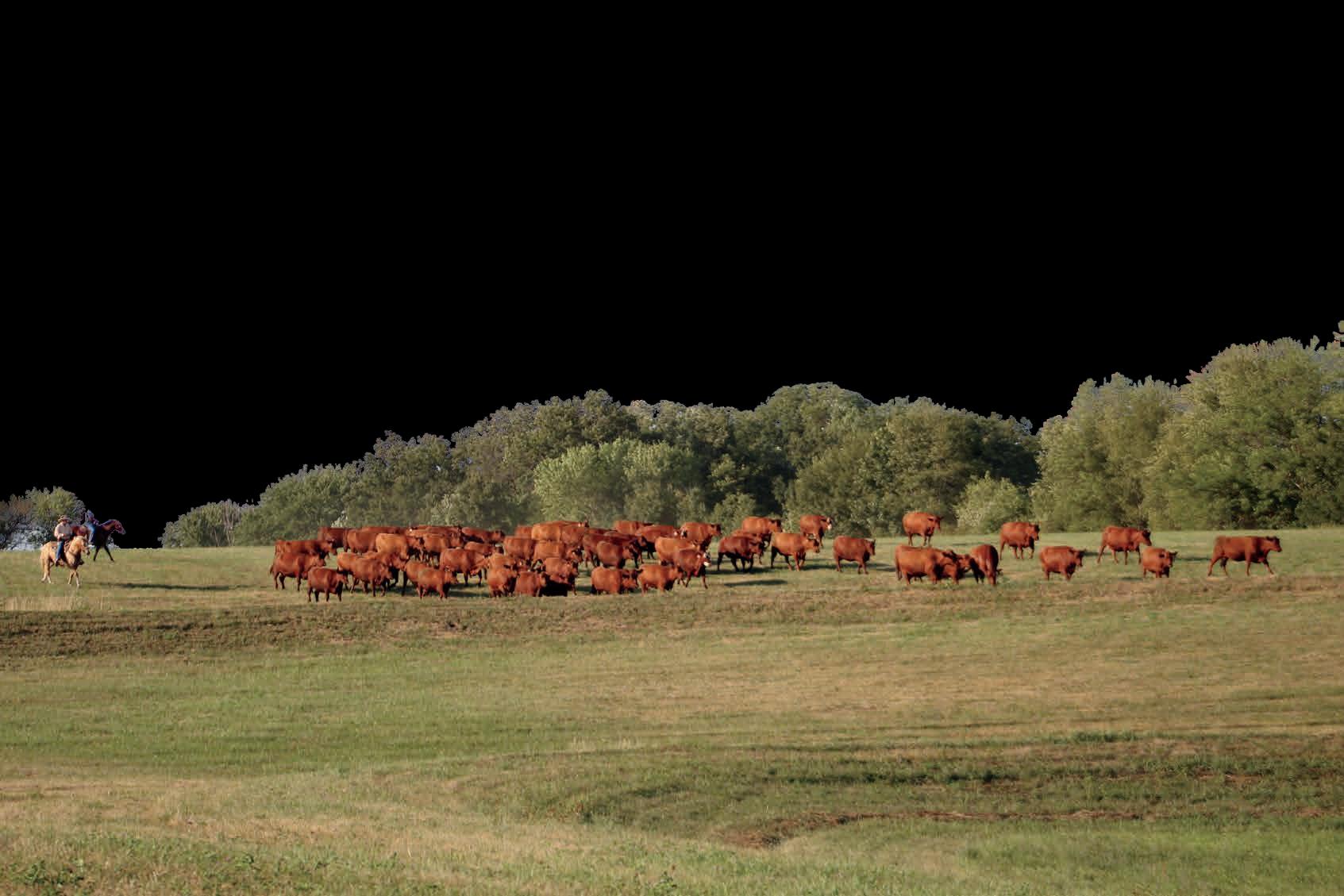

Functional forage and pasture.
contributed article by Justin Fruechte, Product Expert - Ag Renovo Seed, Brookings, S.D. renovoseed.com
wo of my favorite times of the year are getting pairs on pasture in the spring and turning cows on corn stalks in the fall. As cattlemen, the seasons dictate our actions, and these turnouts feel like representations of changing seasons. I love the sense of gratification and contentment on both the cow’s part, and my part, when the first corn cob is rolled around in their mouth. Without question, grazing stalks is the most popular fall and winter feed strategy, but I want to highlight a few other, less popular ideas.
Fall rains in much of the Midwest have boosted new growth and regrowth on forage fields. Optimizing lush growth and minimizing potential risk of regrowth is important. We’re good at managing our herd, but we also need to manage the plants the herd is consuming.
If you planted a cover crop blend including species like turnips, radishes, rapeseed, and cereal grains, you have a highly digestible high protein diet for your cattle to consume. Cattle will gain weight while grazing these fields, so be mindful of how you prioritize the class of livestock grazing it. Thinner, firstcalf heifers thrive in these areas. Or, if fences allow for it, keep your

weaned calves here and let them gain well while grazing.
The important management pointer here is to maintain adequate dry matter intake. Brassicas and lush new grass growth have little fiber and are nearing 80 percent moisture levels. Offering access to corn stalks or hauling out a hay wagon of grass hay will allow your cattle to buffer their ration with dry forage.
Another fall grazing opportunity can come from warm season annuals including forage sorghum, sorghum-Sudangrass, and millets. If planted early, these were likely harvested once and now the millets and Sudangrass hybrids are regrowing. The two common concerns with grazing warm season annuals are nitrate poisoning and prussic acid poisoning.
Millets are prone to high nitrates, but not prussic acid. If a plant is stressed from drought, hail, or extremely fast growth, it can’t properly photosynthesize to convert the nitrogen it is taking in from the soil. Prussic acid is common in forage sorghum and sorghum-Sudangrass. This is most seen when damage is done to the plant, typically after a frost. Cell walls in the plants burst, causing prussic acid to build up in the plant. When this is consumed by cattle it results in cyanide poisoning.
So, for management pointers, don’t graze regrowth until it is over 24 inches in height and wait 10 to 14 days after a frost to graze. Prussic acid is a gas and does dissipate from the plant, so when that 10 to 14 day waiting period has lapsed, don’t be afraid to graze. Testing for both nitrates and prussic acid is available to give you an accurate look at levels.
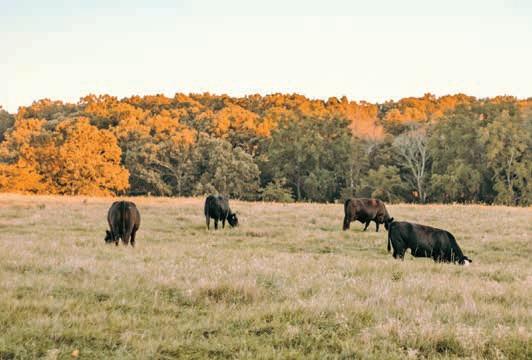
Obviously, we all want to graze as long as possible to minimize winter feed costs. Strategize placing the correct class of livestock with their forage needs to be efficient with grazing utilization. Taking the time in the fall to manage plants will always payback with less feeding days in the winter.
Photos courtesy Renovo Seed learn more renovoseed.com
Renovo Seed, Brookings, S.D.
The team of folks at Renovo Seed have roots that run deep in farming, agriculture, and in the overall respect for the landscape. They opened their doors in 1987 and continue to walk alongside farmers, ranchers, and landowners across thousands of acres throughout the Midwest.




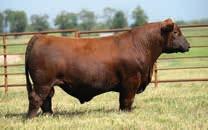
LACY RED LABEL 003L
Reg: 4822351 | Sire: SHAG RED LABEL 120
DS: LACY FREIGHT TRAIN 459 101F
003L is a son of the $80,000 SHAG Red Label 120 that is backed by a daughter of Lacy Freight Train 459 101F. He ranks top 1% CW, 3% ADG, 4% ProS, 7% GM, 7% YW, 11% STAY, 16% WW, and 17% HB.
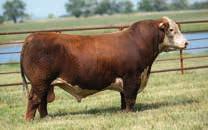
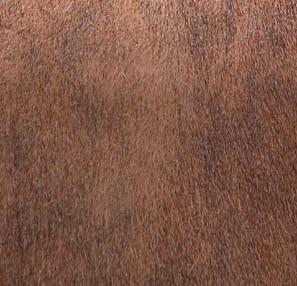
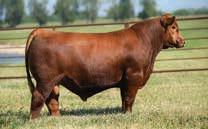
LACY BASELINE 120L
Reg: 4894022 | Sire: PIE CAPTAIN 057
DS: LSF SAGA 1040Y
Lacy Baseline 120L is one of several powerful sons sired by the $150,000 PIE Captain 057 that will be featured on sale day! He is a trait leader for growth, carcass merit, and maternal traits of economic importance. 120L recorded an impressive WWR at 110!
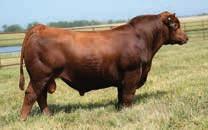
DL 632D PILGRIM 52Y 47K
Reg: P44460802 | Sire: CHURCHILL PILGRIM 632D ET
DS: PW VICTOR BOOMER P606
A tremendous set of age advantage Polled Hereford bulls will also sell on October 26th! 47K is a dark red hided, stout featured, thick made bull that is a true performance standout. He is backed by a tremendous daughter of the iconic PW Victor Boomer P606!

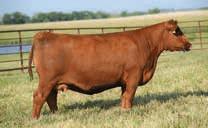
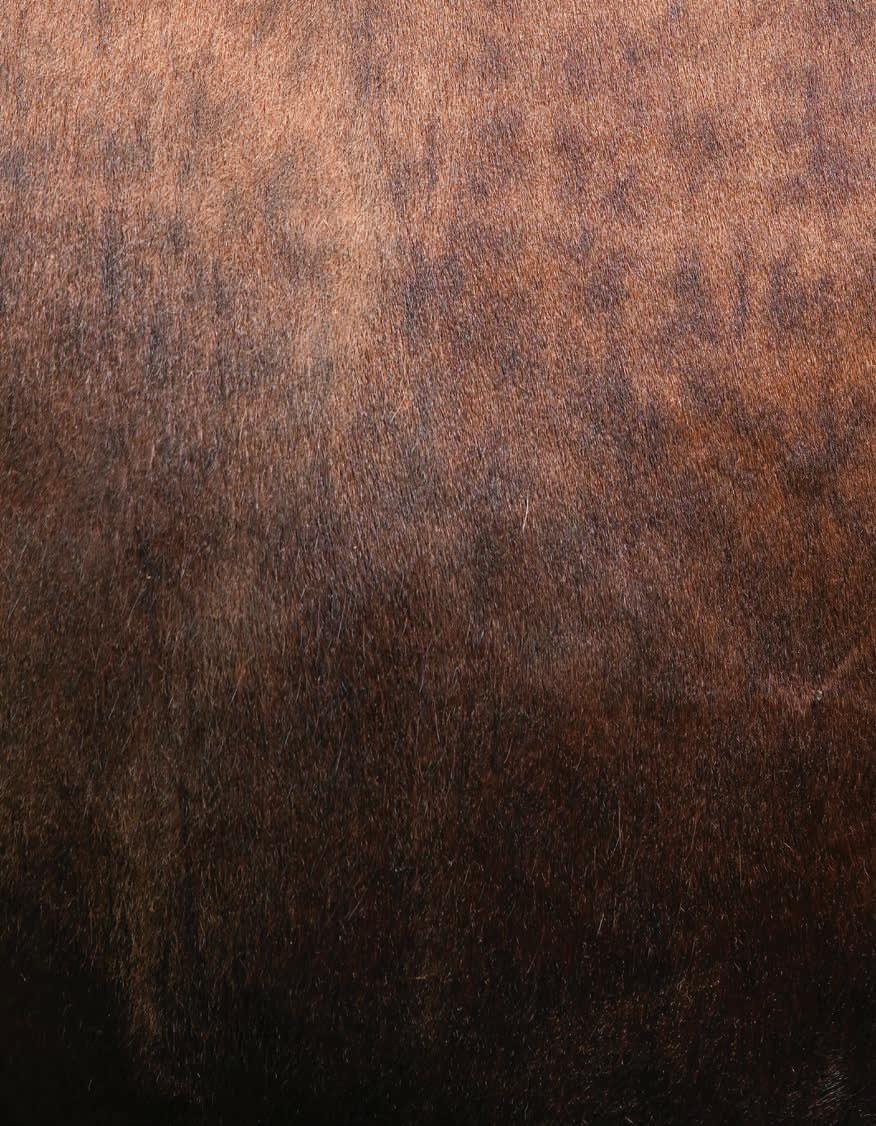

LACY BULLION 076L
Reg: 4893940 | Sire: CCF GOLD BAR 0251
DS: TR JULIAN LT142
Lacy Bull-ion 076L is supported by a time-tested and proven pedigree that is unrivaled in terms of longevity! He is a good looking, smooth made, and well balanced herd sire prospect that is certain to be a “cow maker”!
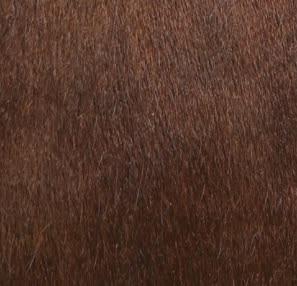
MCL POWER PLAY 3018
Reg: 4816839 | Sire: SC HARD DRIVE H508
DS: LACY LEGACY 6097 417
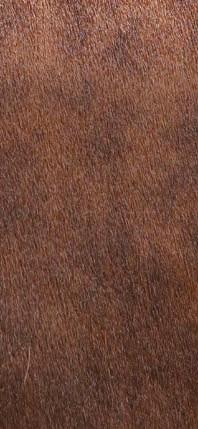
Undeniably the best herd sire prospect EVER produced in the MC Livestock breeding program! MCL Power Play 3018 is a son of SC Hard Drive H508 that is backed by a productive female sired by Lacy Legacy 6097 417. An extremely balanced herd bull candidate that checks all of the boxes!
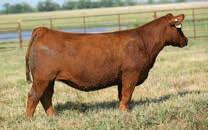
LACY LAKOTA 8105 002H
Reg: 4297055 | Sire: ROJAS RIOJA 6052
DS: CCF GOLD BAR 0251
An elite donor prospect that is a direct daughter of the legendary Lacy Lakota 8105 matron! 002H was a member of the 2022 Cattlemen’s Congress Reserve Grand Champion Pen of Three!

MCL LORETTA 495 3004
Reg: 4816821 | Sire: SC HARD DRIVE H508
DS: LACY FHG LEGACY 6097
3004 is one of the most eye appealing females in the entire sale! Her captivating presence is further solidi ed by her royal pedigree!
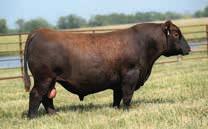
MCL NIGHT MOVES 3015
Reg: 4816835 | Sire: BIEBER CL ENERGIZE F121
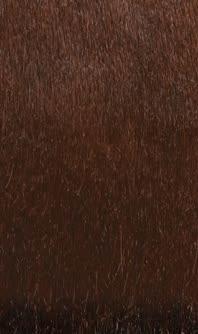
DS: LACY 1776 002D
MCL Night Moves 3015 is the dark cherry red hided herd sire prospect that is a phenotype standout! He ranks among the elite 3% of the breed for ProS, top 3% Milk, 4% HB, 6% CW, 11% YW, 11% ADG, 12% MARB, and 13% WW. He recorded a BWR at 97, WWR at 112, and YWR at 110!


LACY LAKOTA 8105 112L
Reg: 4893946 | Sire: LACY MOV’N ON 417 063G
DS: CCF GOLD BAR 0251
One of ve ET ushmate sisters from the highest dollar generating female at Lacy’s Red Angus! O ering the ENTIRE 2023 fall calf crop on October 26th!

Sale Management by:




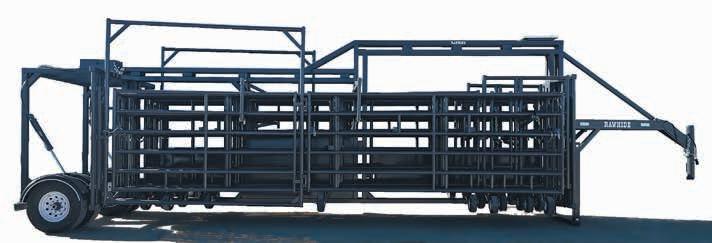
This Patent Pending design (pictured above) is the largest portable corral on wheels ever built. 22’ long panels, 6’ tall. 600-800 head capacity, all of which has a total weight under 15,000lbs. With multiple gates, spring latches, multiple pen capabilities for sorting.

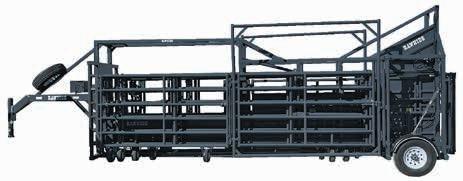
Our most popular corral (pictured above with built in Loading Chute option), Hydraulic Adjustable Alley is now standard equipment. Head gate and size options available. Three sizes available; multiple pen options.
Othermodeloffered:
The Corral that started it all. Multiple pens, bumper or gooseneck models. Head gate option, 20’ long panels, 6’ tall. Sheeted temporary alley.
Bottom line: Strongest, largest and most portable corral ever built. Always made with animal and human safety in mind! Constantly making our product better and taking care of our customers is the goal.
#1 Warranty Available: As long as you own our corral, we will take care of you period. Call us to learn more.
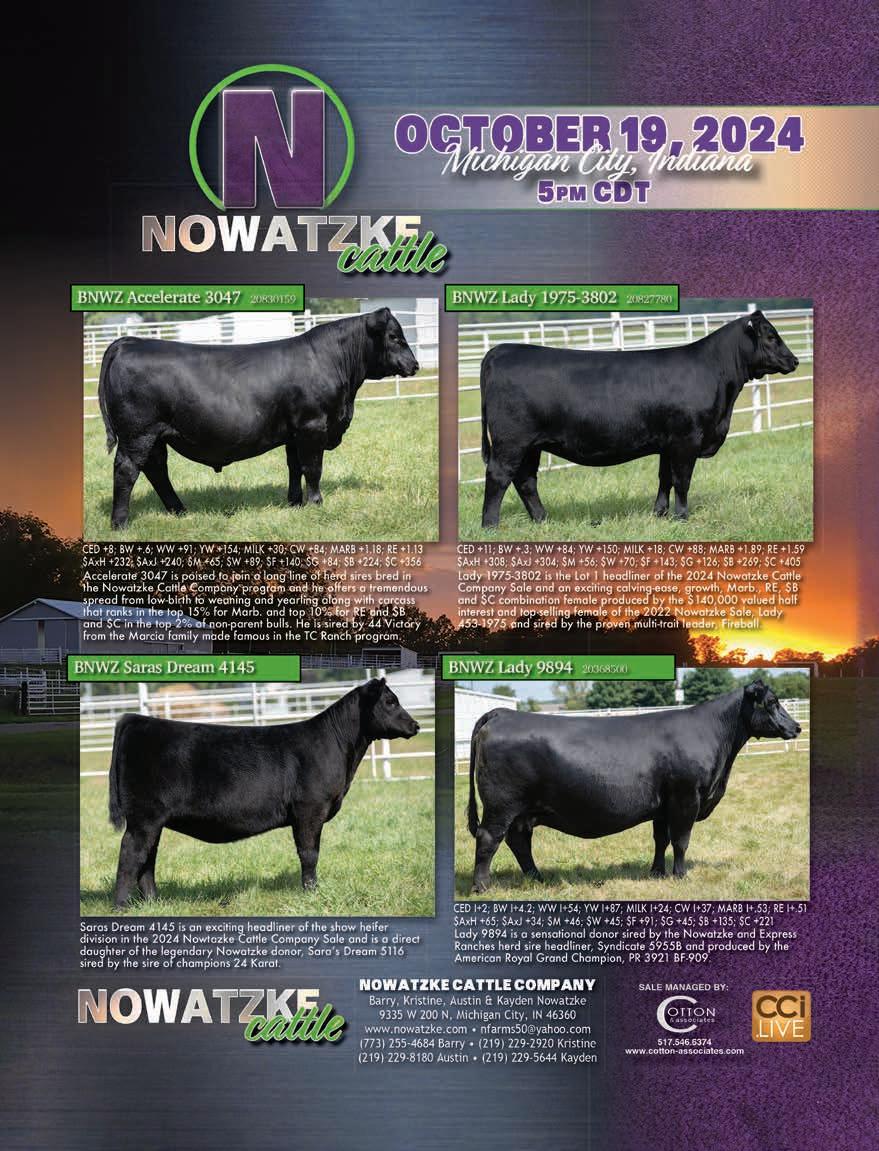
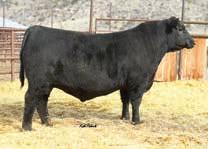

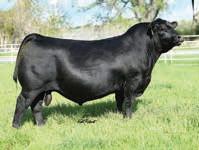
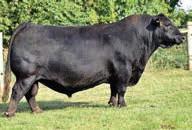
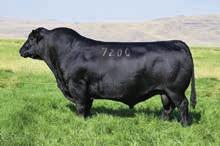
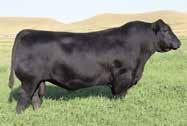




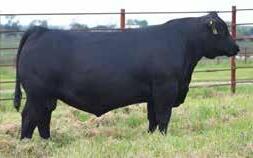
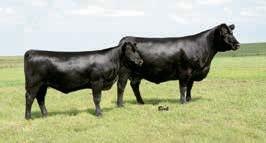
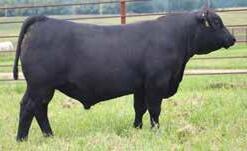
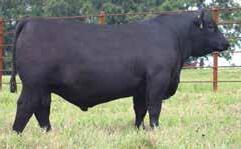
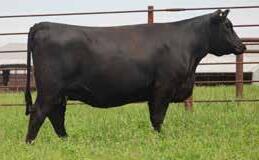
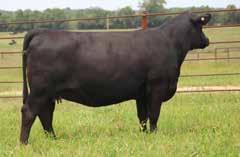
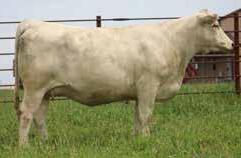
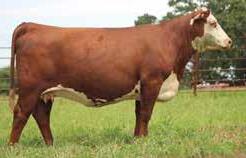



•
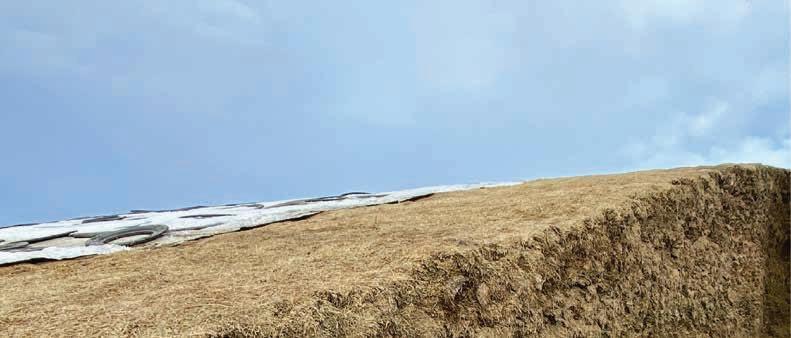



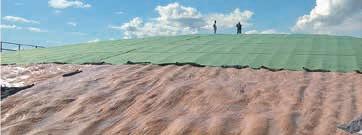

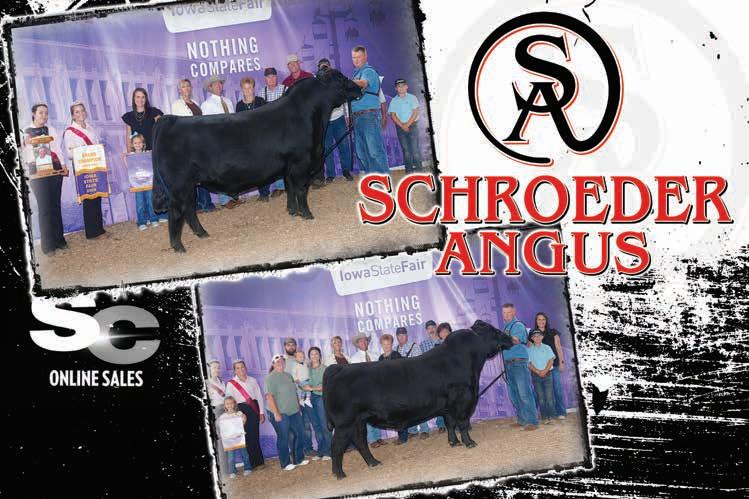


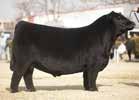





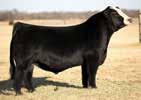
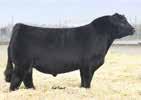



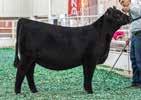
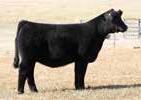
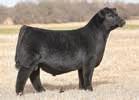
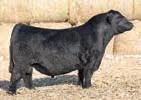


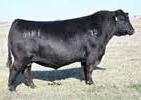


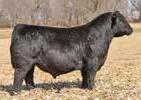
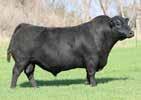

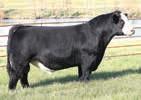
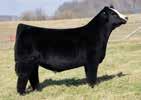


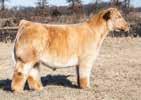

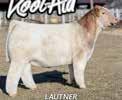

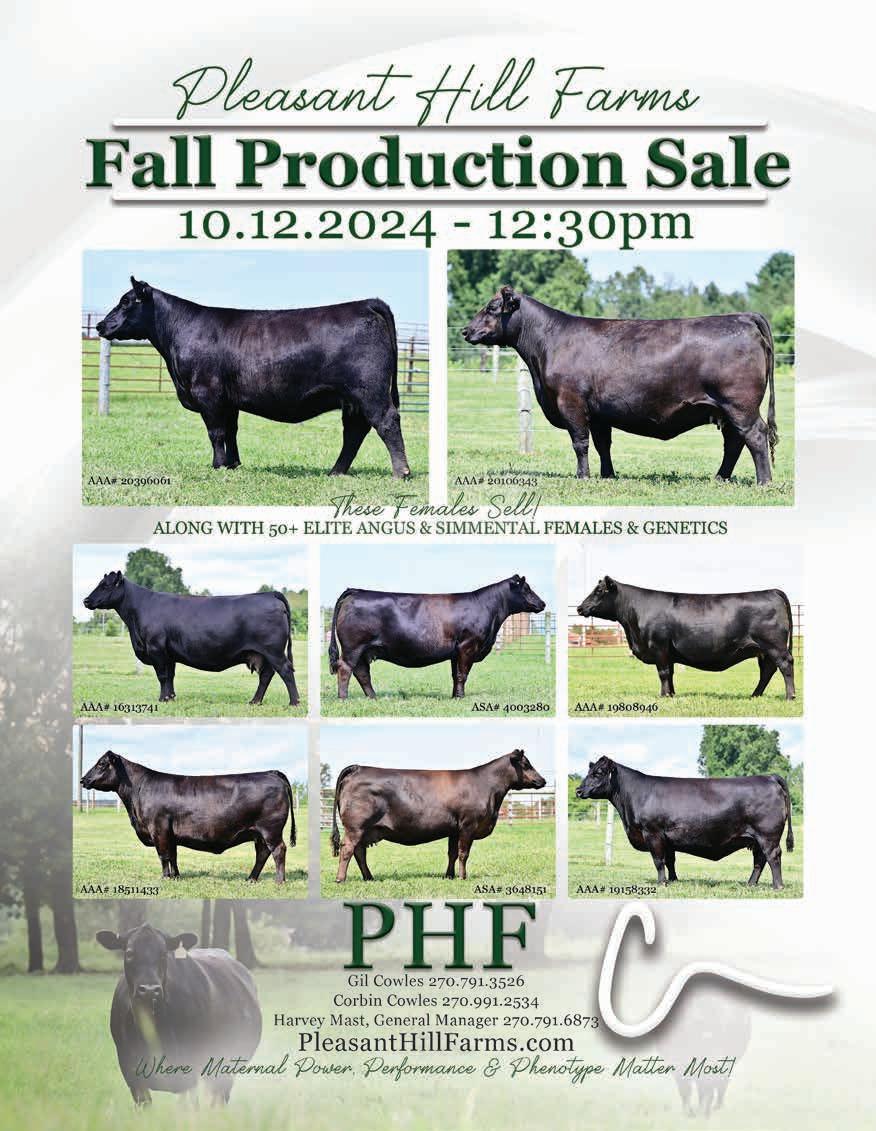
By Cheryl Kepes
Pembrook Cattle Company is dedicated to creating a lineage of champions in and out of the show ring.
The line of national champion show heifers bred or raised by Pembrook Cattle Company stretches through generations of cow families and covers more than half a dozen breeds. Behind the purple
banners at many cattle shows across the country is someone positively impacted by Travis and Beth Pembrook’s expertise in selecting, fitting, and showing champions.
Travis and Beth have owned and
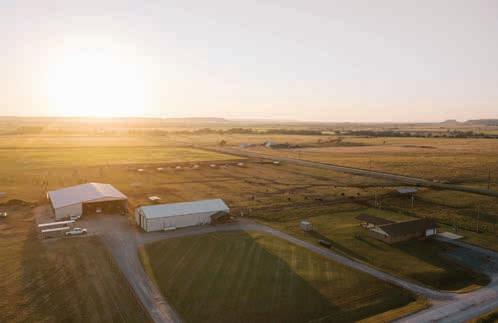

managed Pembrook Cattle Company (PCC), located in Fairview, Oklahoma, for almost 30 years. The family run enterprise consists of a multi-breed show heifer business and an Angus seedstock operation. The Pembrooks focus on raising national champions for the show ring and high-performance herd bulls for commercial customers. But the Pembrooks gauge their success on far more than the number of wins or lots sold, their heart and soul centers on building strong relationships with customers and mentoring the next generation of cattle producers.
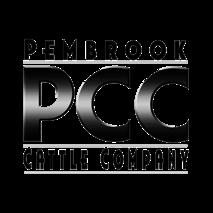
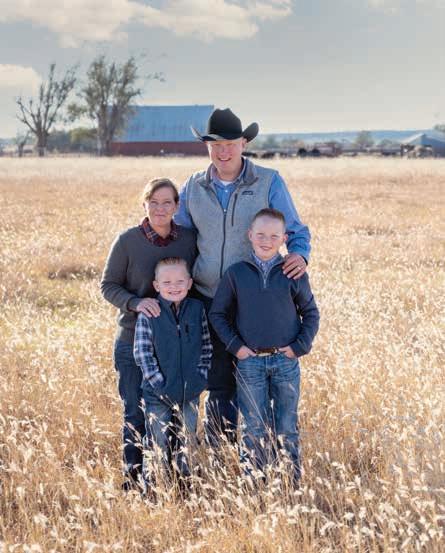
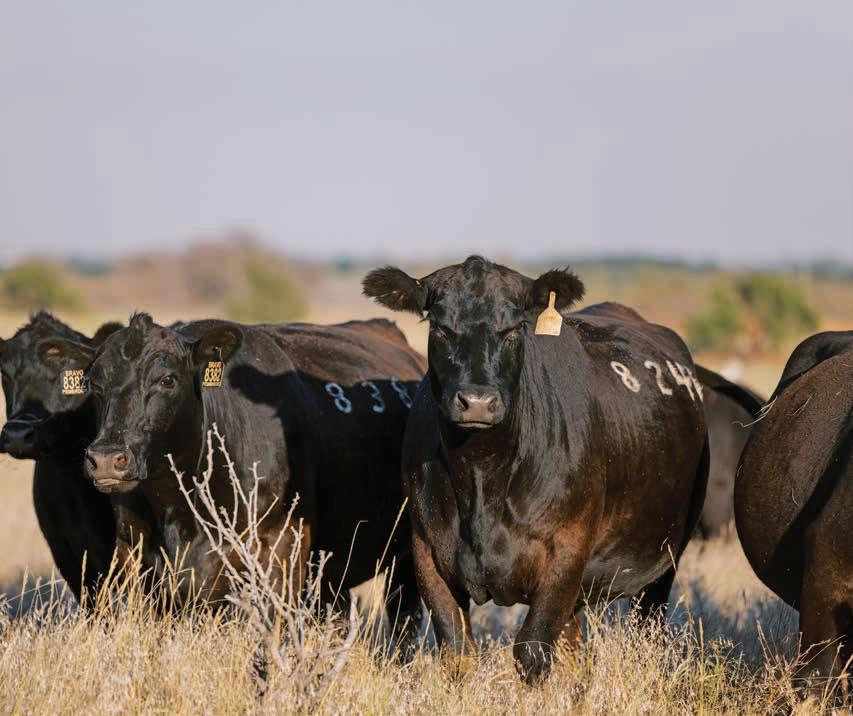

The Pembrooks run their operation on a vast generational property located in the Gloss Mountains of Oklahoma. “Beth and I had the opportunity, it was a blessing, my great-grandparents who homesteaded in this area, they actually sold us their original home place when we moved back here from Kentucky in 1996,” Travis Pembrook explained.
Travis’s great-grandfather one was the first in the family to show cattle, then future generations followed in his footsteps. Beth’s grandfather also enjoyed showing cattle and his passion continued with his children and grandchildren. Beth grew up on her family’s registered Limousin seedstock operation near Lexington, Kentucky. Travis and Beth’s background and knowledge combine to form a dynamic cattle couple that’s taken PCC to new heights.
In the early years of their marriage and cattle operation, the couple offered a custom fitting service. For a decade, the Pembrooks exhibited cattle for big ranches, taking show strings to competitions all over the country. Those experiences gave
Travis and Beth the opportunity to hone their skills under the mentorship of some of the best in the business including the late Bill Couch, former general manager of Express Ranches, and Jim Williams, owner of V8 Ranch.
The mentorship Travis and Beth received from their family and from legends in the cattle industry shaped the future of their operation.
“The whole time you are seeing some of the guys you are doing this for, and you are like, ‘Please help us to be able to do this sometime.’ And be careful what you pray for because it will happen. Now this has just went crazy for us,” Travis shared.
The Pembrooks’ business grew like wildfire. Shortly after starting their operation in Oklahoma, they expanded into a variety of breeds.
“We had so many people asking us, ‘Do you have this, and do you have that?’ And so, we saw the need to diversify where we could offer some different breeds,” Travis said.
PCC sells show heifers from breeds including Angus, Simmental, SimAngus, Chianina, Limousin, LimFlex, Shorthorn, Shorthorn Plus, Maine Anjou, Maintainer, and Red Angus. Many of the show calves are the result of PCC’s robust IVF and embryo program rooted in elite donor females and national champion sires.
What the Pembrooks don’t breed themselves, they find by visiting herds across the country. They are always working to have industry leading genetics that will give their customers a competitive edge. “A lot of that for the show ring is based on trends and what you see is doing well now. So, you are always trying to make that great one or find that great one. Either make her or find her every year,” Travis explained.
When visitors walk through the PCC show barn this time of year, they will find as many as 80 future sale heifers in the making. When the current show calves being tended to for upcoming competitions are included, the PCC show barn head count pushes 100.
The heifers that make the final
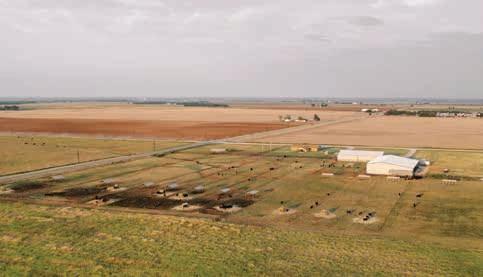
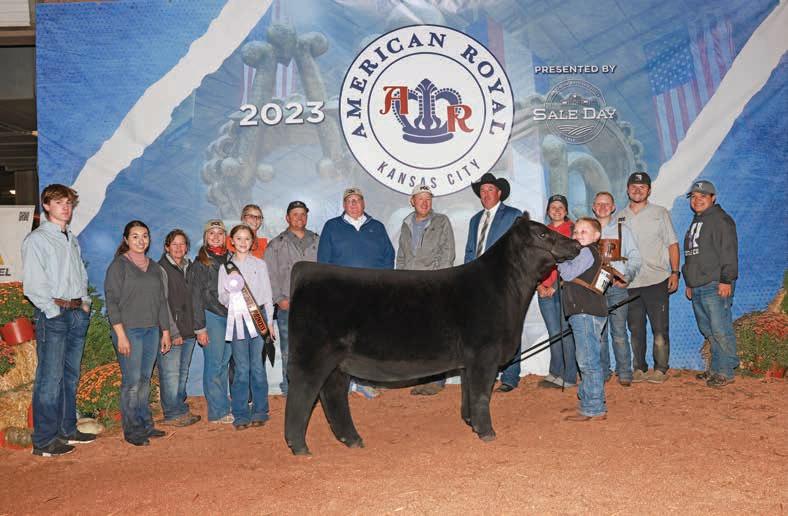
cut for PCC’s production sale have proved themselves to be the cream of the crop. “On these show cattle, if we end up with an 80 head sale, we may start with 120 or 150. As we get them in, wean them, and get rolling towards the sale we start trying to take the risk out for people,” Travis stated. That means animals with a poor disposition or subpar structural soundness are automatically culled from the sale group. It takes quite a few helping hands to keep things running at PCC. Derrick Wood serves as PCC’s herdsman. “Derrick is incredible and a huge part or our operation,” Travis said. Derrick’s fiancée, Rilee Hall, also plays an important role in the operations at PCC. The Pembrooks appreciate Derrick and Rilee’s contribution to the cattle business.
And most every day the Pembrooks’ sons, Bret (15), and Bryson (10), are pitching in wherever needed. “They are involved with everything we do. They live this with us, and they are a part of it. We appreciate their help,” Travis shared. “Bret has as many customer names in his phone as we do,” Travis added with a chuckle.
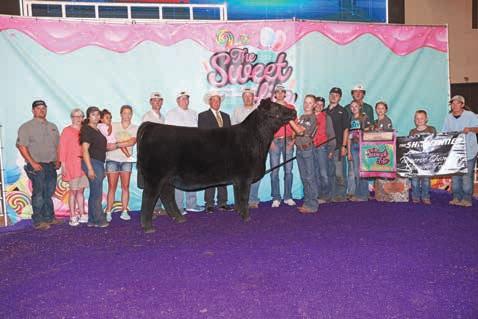
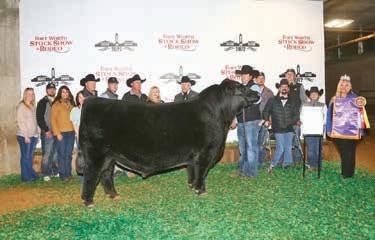
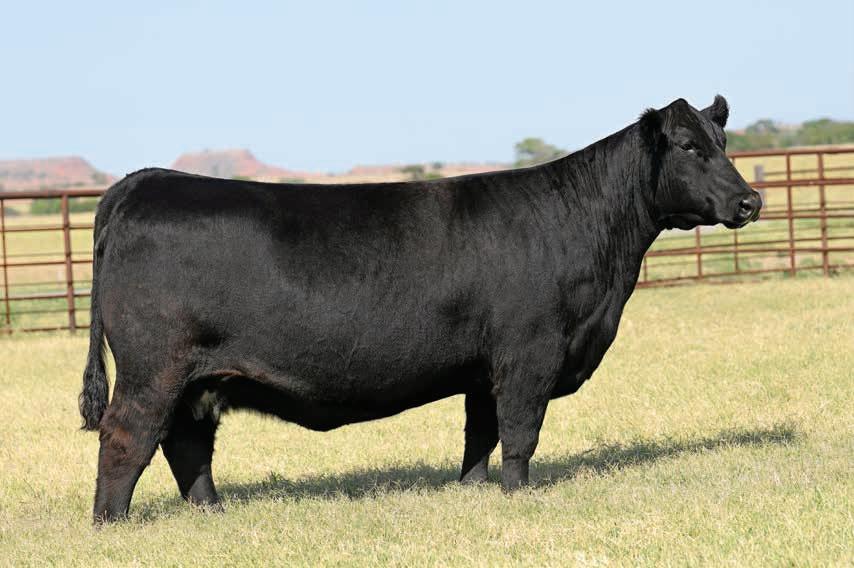
The Pembrooks operate a registered Angus seedstock operation with about 250 momma cows. Most of the cows in the herd have Montana-based breeding. “The cows are really hardy, easy-fleshing type cows. They just go out and work and do what they are supposed to. If something isn’t working for us, it is like the show cattle, they are out of here, they get culled from the program pretty quick,” Travis stated.
PCC utilizes some ET and a lot of AI work to develop the genetics of the registered Angus herd. The herd sires turned in as cleanup bulls are AI sires that could be found on the pages of genetic services publications.
The primary focus of the registered Angus operation is to produce herd bulls for PCC’s commercial cattle customers. The bulls are
raised in large, open pastures where they have space to move. They are developed on a forage plan that utilizes alfalfa and grass in the summer months. The Pembrooks aim to raise bulls that will hold their condition when turned out to work. The bulls are sold via private treaty at 18-months to 2-years of age.
One of the Pembrooks’ greatest passions is mentoring youth. Much of their desire to serve others stems from their own experiences. “Our entire life we have been blessed to have great people around us who have mentored us and brought us along whether it was a family member or people in the industry, we always had great people around us that taught us well,” Travis said. Several years ago, PCC started
offering summer show cattle camps because they recognized the need for additional training opportunities for young people. The Pembrooks provide several sessions tailored to different skill levels. Youth from all over the country attend the camps to learn about cattle selection, nutrition, breeding, care, showmanship and more.
Travis and Beth never miss an opportunity to share what they have learned with others in the industry. “Whether it is people who buy cattle from us or whether it is the college age kids who work for us, we like teaching them and like training them. We hope someday they are better than we are at things. We want to see people do well,” Travis said.
Travis has served as judge for many state and national cattle shows. Recently, Travis and Beth have had the opportunity to judge shows together.
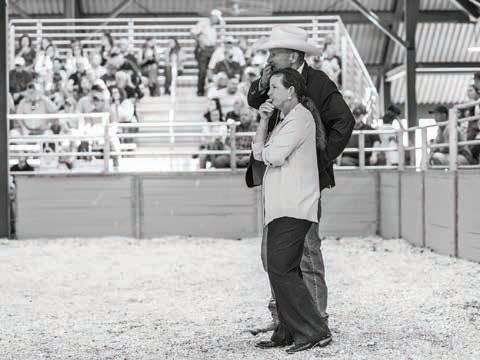
The slogan at PCC is – It’s all about the people. “That is just huge for us. Everything we do is about the people,” Travis said. From youth to customers to neighbors, the Pembrooks seek to live out a philosophy that honors others.
“We try to work and develop an honest relationship with our customers where we can evaluate or know their needs. We are always trying to figure out their needs. What can we do better here?” Travis explained. “We want to go the extra mile to help. Whether that is
being at a show to help get someone’s animal ready or if someone is local it is going to help them work a set of calves or move cows from one place to another. Or simply answering our phone and just being there to help,” Travis added.
Their faith in God and heart to be good stewards of their land and cattle operation are central motivators in the Pembrooks’ lives. Travis and Beth are preparing now to make sure their operation is ready for their children to take over in the future if they would like to.
There’s never a dull moment at PCC, with so many different facets to balance and manage. “We are always ready to move with the times in terms of handling the future, and you are always wondering what could be next within the future, how can we better ourselves or things for our customers too,” Travis said. And one can bet, no matter the challenge the Pembrooks will consistently be up for the task.
learn more pembrookcattle.com
ANNUAL FALL PRODUCTION SALE: Saturday, October 12, 2024 1:00 pm - Fairview, Okla.

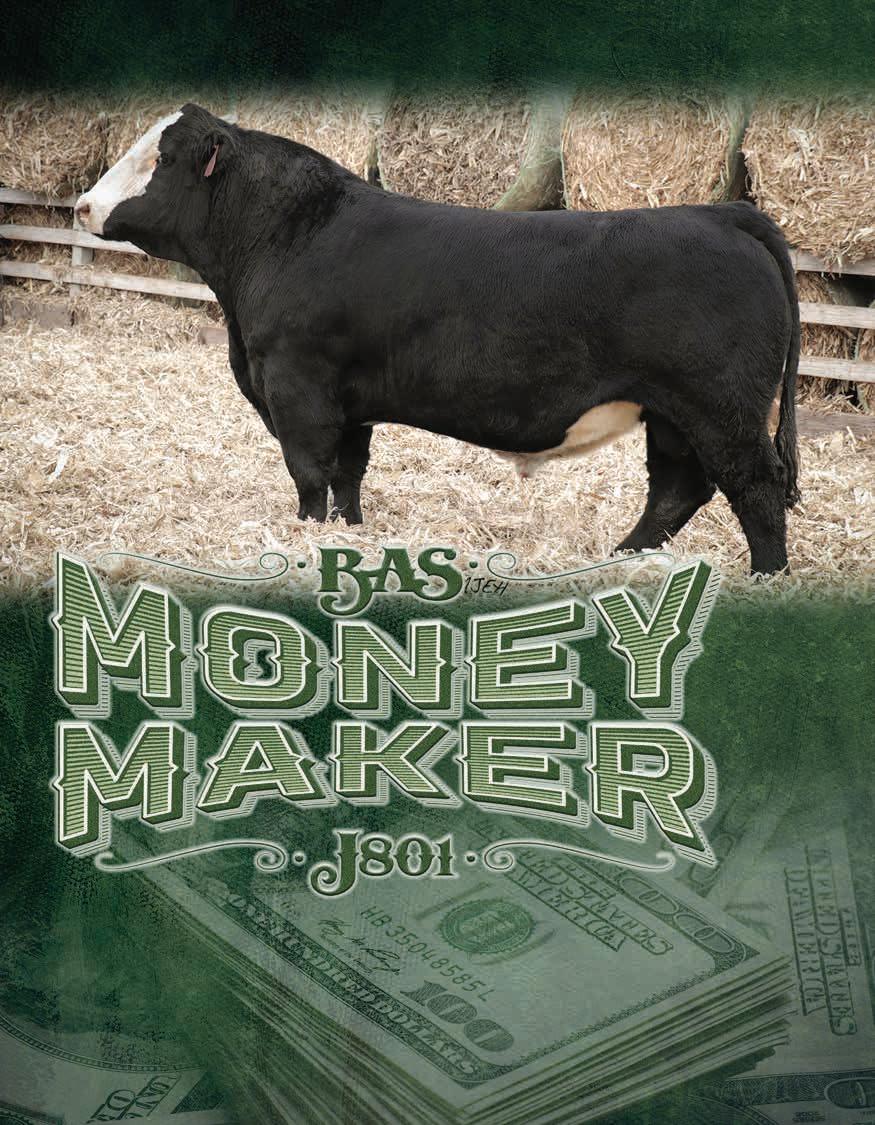


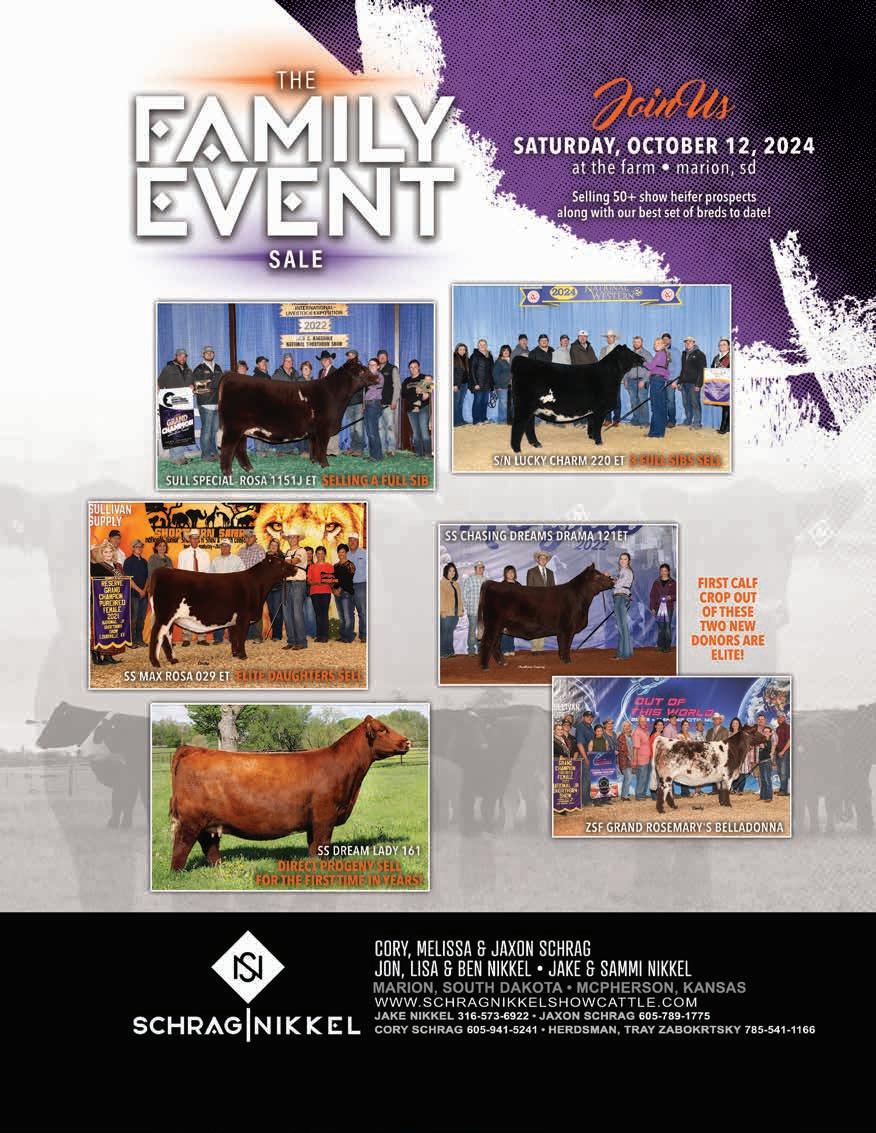
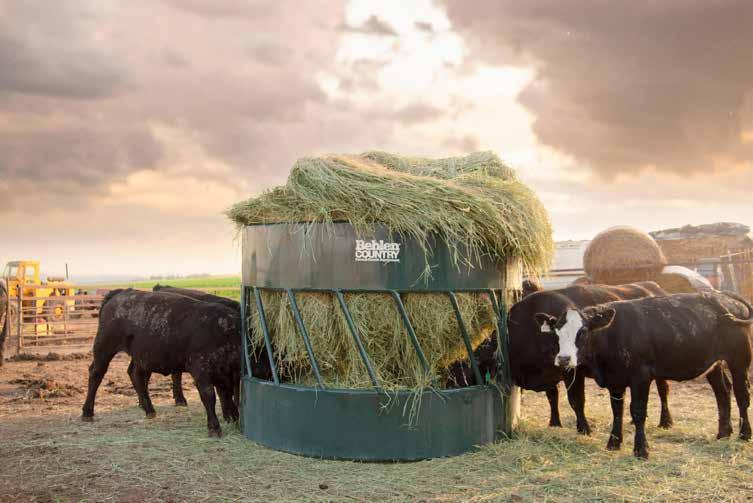


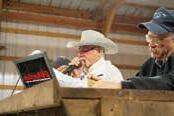




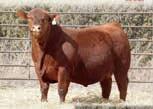


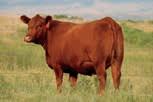


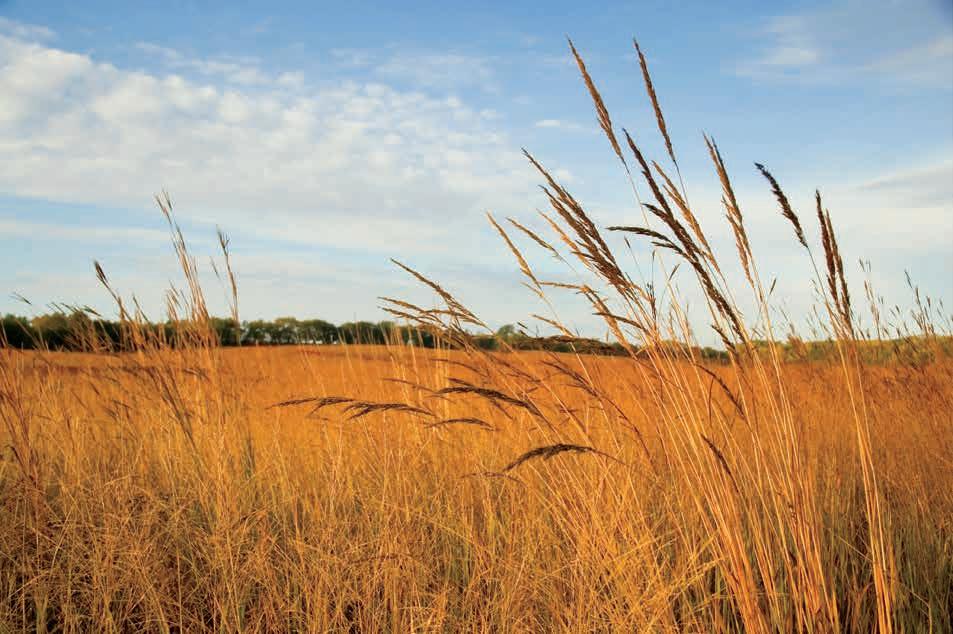
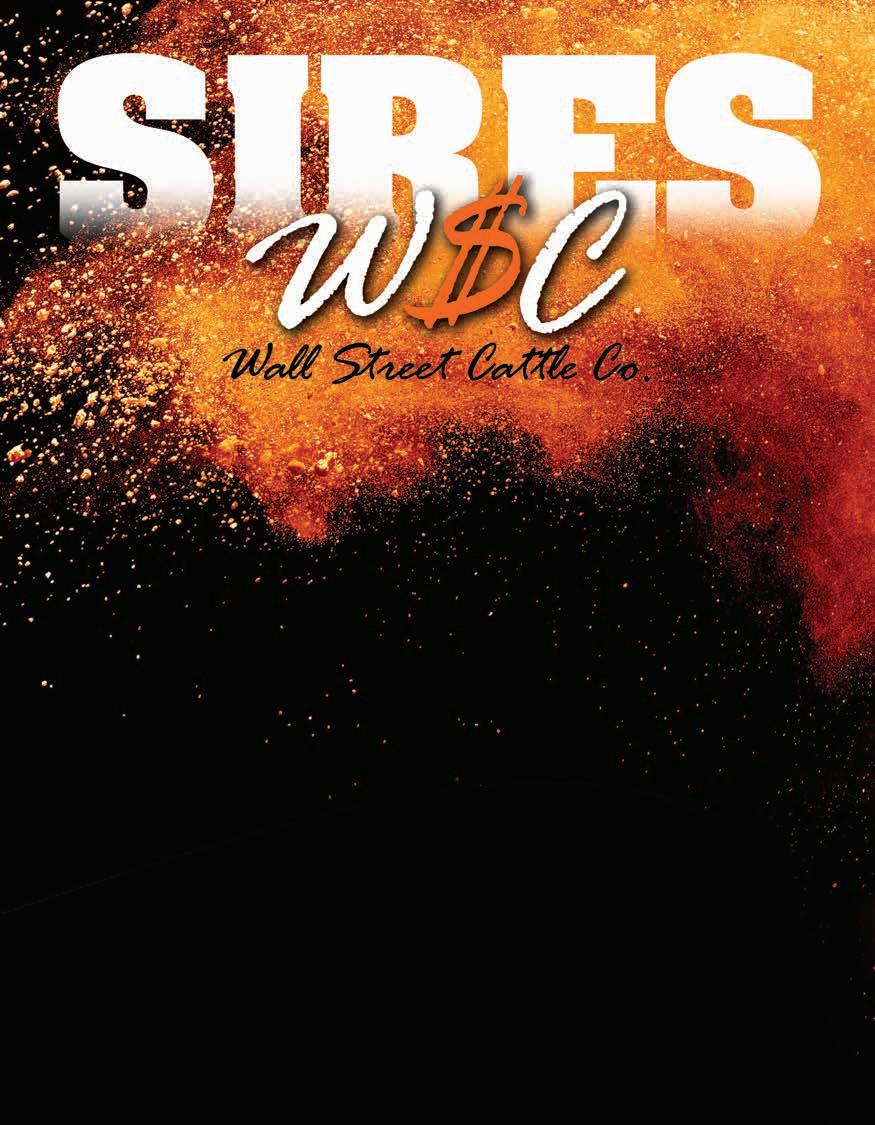
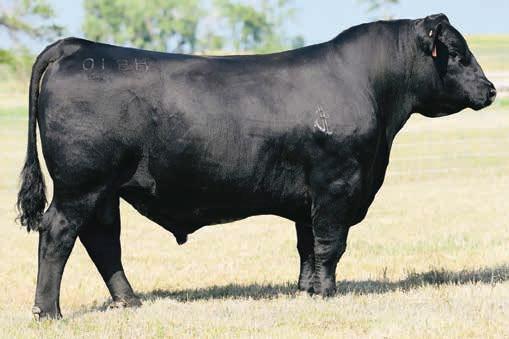
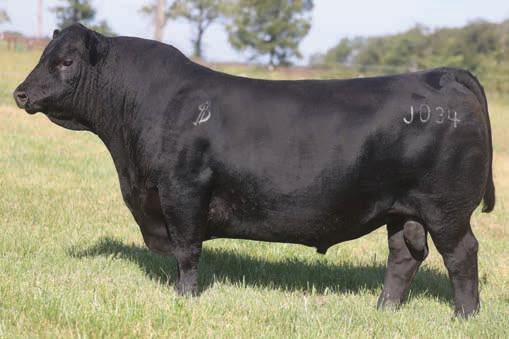
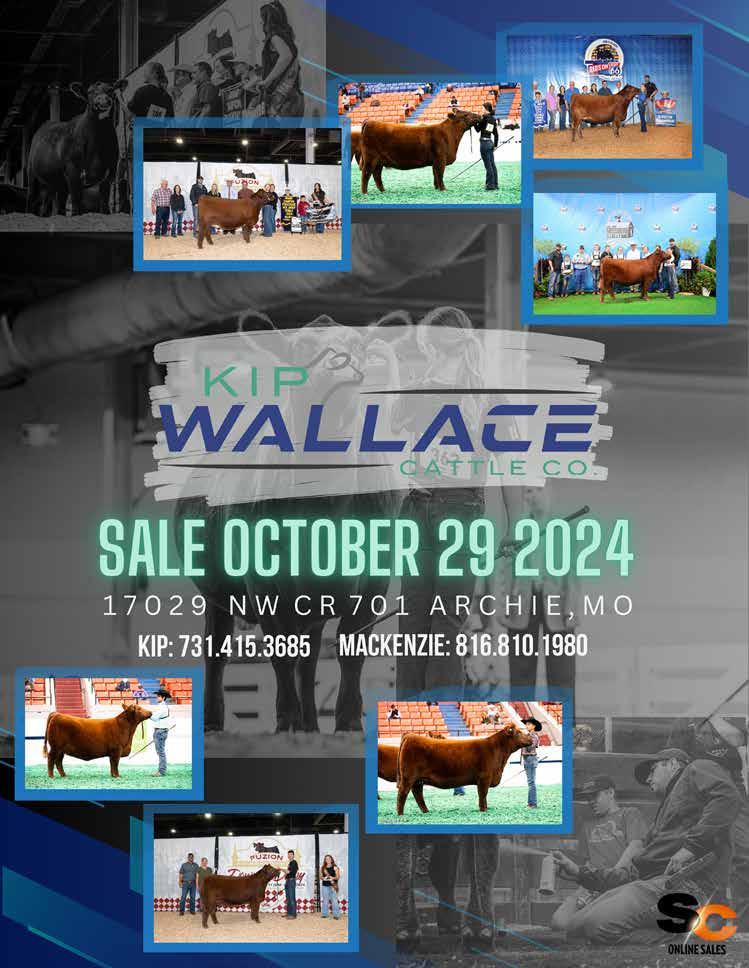
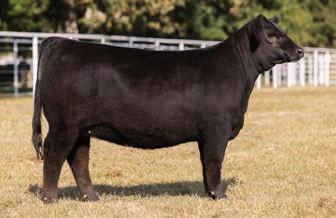
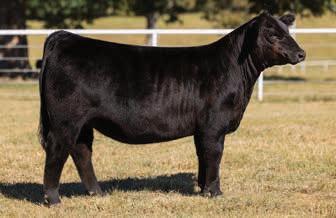

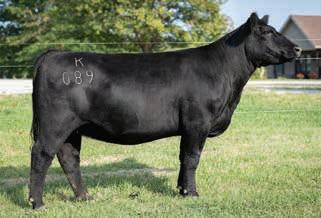




Health & Reproduction questions answered and explained.
contributed article by Dr. Vince Collison Collison Embryo and Veterinary Services, Rockwell City, Iowa collisonembryoservices.com
his is the time of year where producers are starting to work calves, but usually will wait until November through December to pregnancy check and work cows. We get more requests to do pregnancy exams every year with an ultrasound. Here are a few tips to get the most out of using ultrasound for pregnancy diagnosis.
One of the best benefits of ultrasound is that you can have the fetus aged. When selling bred heifers, fetal aging is a procedure that will add a lot of value. Most ultrasound units have a fetal aging table incorporated into the programming that allows the fetus to be measured for its days of age. This is best done in the first 120 days of pregnancy. At this point the fetus is small enough to fit on the screen for measurement.
In the first 120 days, we use the body diameter and find this is fairly accurate. There can be some variation as the fetus gets older. We have found that as the fetus grows it can occasionally measure up to 10 days later on known AI dates. Also, after 120 days we have to rely more on eye socket measurements due to the fetus dropping out of range of
the viewing screen. We have found that the eye socket measurements on these older fetuses are not quite as precise as the trunk diameter on younger fetuses.
One of the other benefits is that the sex of the fetus can be determined. This is best done between 60 and 90 days of pregnancy. If we try to sex fetuses after 90 days, it can be done, but many pregnancies drop down far enough that the fetus cannot be positioned to visualize the sex. After 120 days it is usually impossible to visualize the sex. If fetal sexing
is important, make sure it is done in this 60-to-90-day range.
The viability of the fetus can be determined. Early embryonic loss occurs occasionally in the first 60 days of pregnancy and ultrasound can determine the viability of the fetus via the heartbeat. If the fetus is not viable, a prostaglandin can be given to help the cow expel the fetus and prevent complications. Also, we have found severe birth defects on ultrasound such as two-headed calves and calves with Schistostomas reflexus.
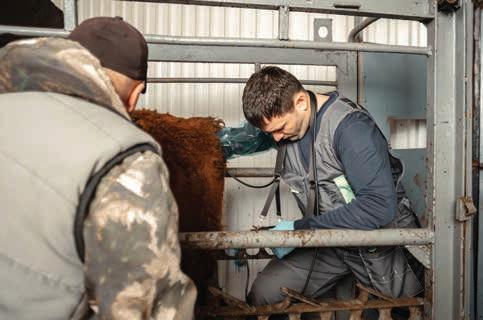
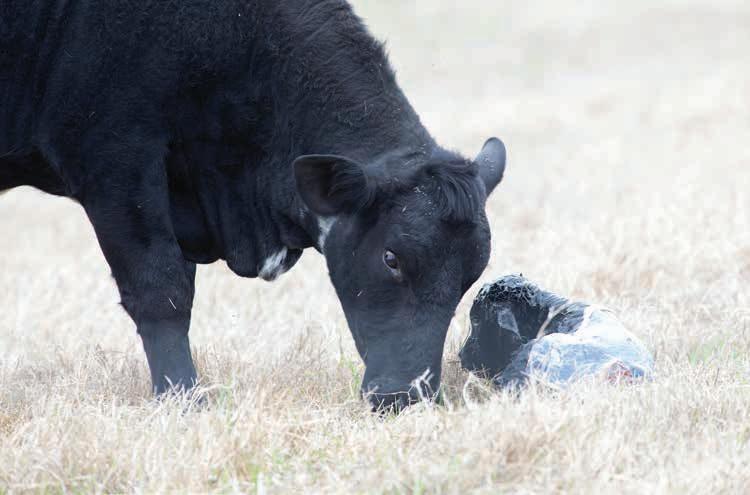
Twins can be diagnosed. If there are twins, they can often be identified.
All these things can be helpful for managing the calving season. Many producers will put tags in the ears that are color coded according to a range of calving dates. Also, when selling bred heifers or cows it is a great marketing tool to have confirmed AI dates and subsequent calving dates if bred to the bull.
To get the most from ultrasound, many producers will need to move the pregnancy exam time frame up earlier. If producers wait until the
normal November/December time range, most of the pregnancies will be too far along to measure the fetuses or identify the sex. Most of the ultrasound pregnancy checking we do is in the late July through October time frame.
Also, at this time we often are pouring the cows with something for fly and parasite control. We recommend using something that has zero withholding at this time. This makes it a lot easier so that all cows can be treated and culling decisions can be made at a later time. Also, cows destined for the sale barn as culls can accidentally get poured and this eliminates any withholding issues.
As a final note, pregnancies need to be a minimum of 28 to 30 days along to identify with ultrasound. If bulls are still running with the cows at the time of pregnancy exam, then any identified as not pregnant will need to be rechecked after being pulled from the bulls for 30 days.
learn more collisonembryoservices.com
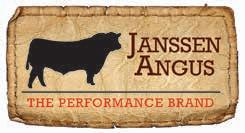

JON & MARADITH JANSSEN 515-468-8221 janssenangus1477@gmail.com 36251 Hull Ct, Earlham, IA 50072 JANSSEN ANGUS SALE HEADQUARTERS

JANSSEN MADAME PRIDE 7059
Marvelous maternal sister to the record-valued Janssen Madame Pride 8028 by SAV Sensation 5615, sells bred to Coleman Mendoza 271, with a heifer calf by SAV Northlander 1058.
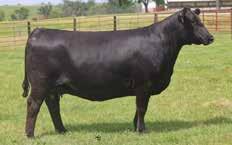
JANSSEN MADAME PRIDE 1075
Two-year-old daughter of Janssen Madame Pride 8028 by DB Iconic G95, with a heifer calf ZWT Declaration 1551 and frozen embryos by Ellingson Prosper.
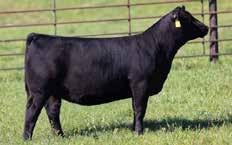
JANSSEN MADAME PRIDE 4122
Breed gem from the record-valued Janssen Madame Pride 8028, sired by Coleman Glacier 041.
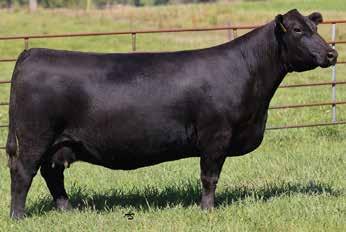
JANSSEN EMBLYNETTE 7123
Exquisite daughter of SAV Pedigree 4834 stemming from seven consecutive generations of Emblynette Pathfinder® Dams, bred to Coleman Platinum 2622.
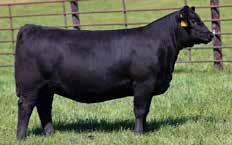
JANSSEN BLACKCAP MAY 4010
Powerful descendant of the all-time world-record income-producing SAV Blackcap May 4136, sired by Crawford Guarrantee 9137
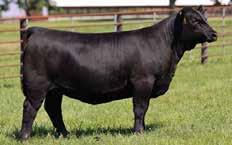
JANSSEN EMBLYNETTE 4003
This dynamic daughter of Coleman Rock 7200 sells along with her Pathfinder® Dam SAV Emblynette 3930.
For nearly a solid decade, leading commercial and registered cattlemen from across North America have
successful
and before,
with
along with several Pathfinder® Dams. Featuring the progeny and service of the
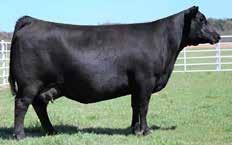
COLEMAN DONNA 057
Full sister to Coleman Glacier 041 by SAV Renown 3439, bred to Coleman Platinum 2622, with a heifer calf by Hummel Argentine and embryos by Coleman Rio 2526.
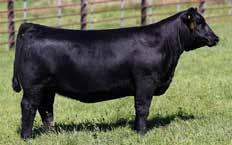
JANSSEN EMBLYNETTE 4012
From the first calf crop by the Janssen Genex calving-ease sire Coleman Below Zero 2106, backed by the Emblynette family.
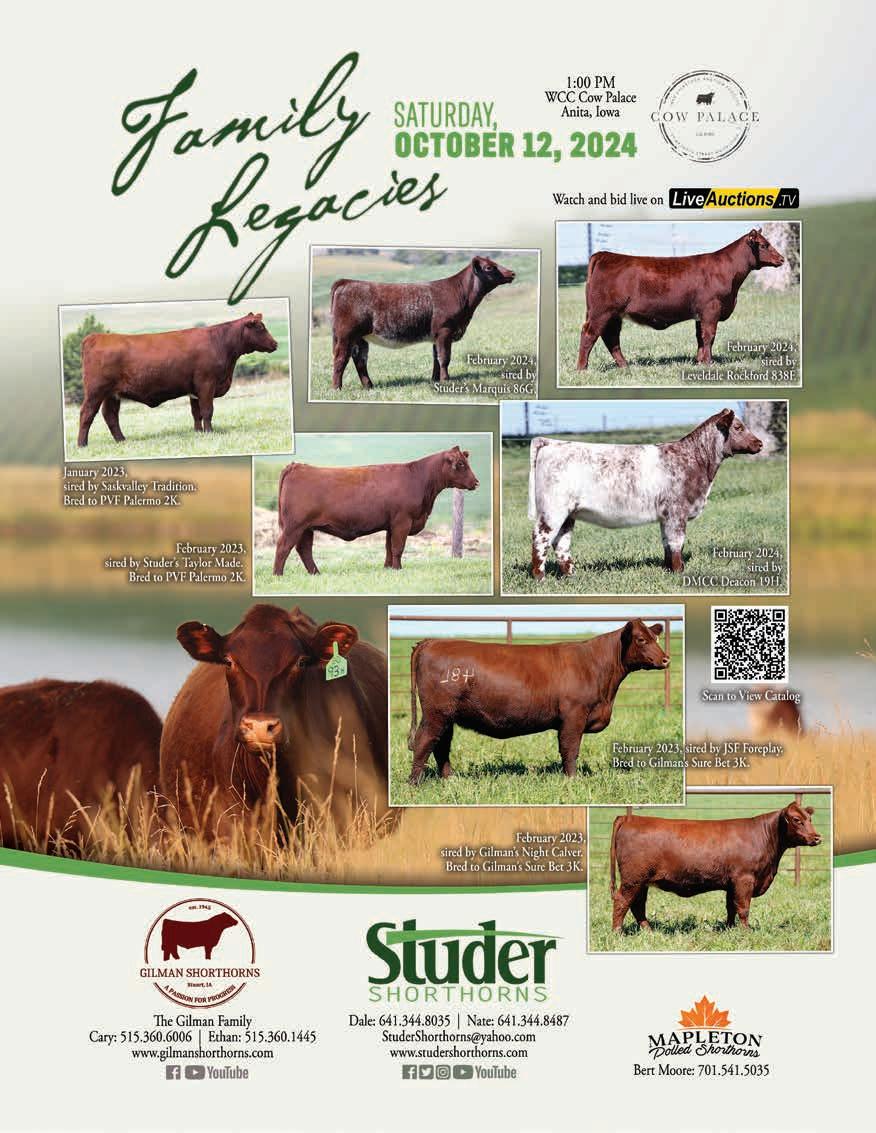
•
•
•
•
•
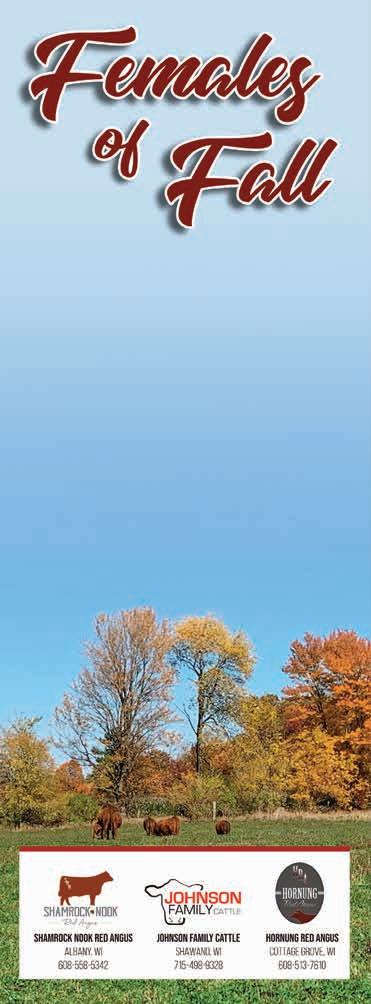

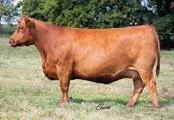





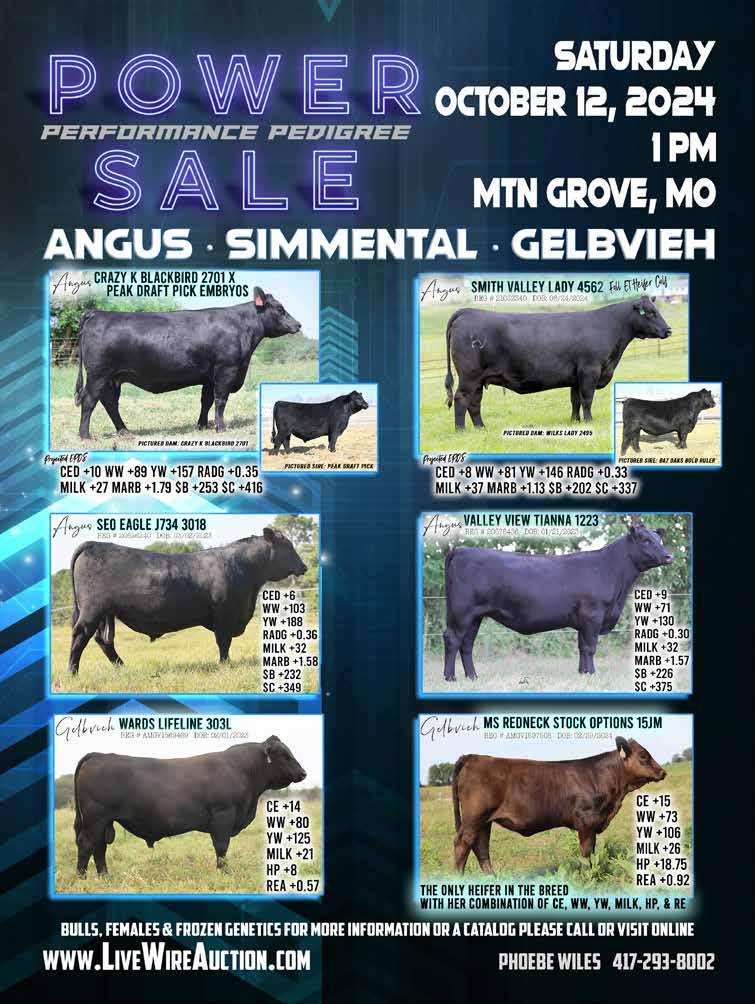
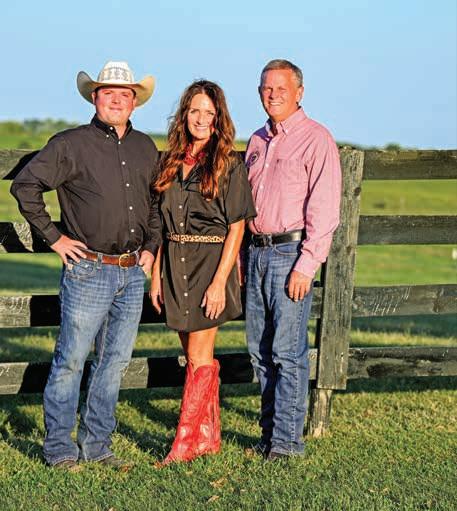
In the kitchen with

With my husband, Jack, and son, Carter, we own and operate Ward Brothers Livestock. We run 60 plus cows with the purpose of raising Angus show heifers. Our ultimate goal is for them to be competitive nationally. Our buyers compete on all levels, and we are proud that they choose our
What is your least favorite job in the kitchen?
My least favorite job in the kitchen is dealing with the mess I made. I try to clean up as I go so the stack of pots, pans, and cutting boards isn’t too overwhelming at the end. A close second is coming up with something to cook each night for dinner.”
I am still getting ideas and suggestions from my mother. I’m so lucky that she is a great cook and is a phone call or text away to discuss new and old recipes. I like recreating dishes that we have had in restaurants or meals that are not common to our part of the country. Finding a new side dish that my friends and family will enjoy at my house is
Ward Brothers Livestock - Plattsburg, Mo.
In the past year, my friends and I have started a wine club. We all love coming up with pairings and trying new things we normally wouldn’t make for our families. Watching everyone in our group explore new recipes has been rewarding. The camaraderie is a bonus. This time of year, I am cooking in bulk. We have many people around to help with sale preparation. It’s great! I love entertaining.
Cowboy approved recipes used by our favorite country cooks.
What is your favorite cooking tip/trick?
The friend or family member who is a good cook is a great person to connect with. It is just like everything else in life - keep learning and pushing yourself to expand and change. It makes life more interesting, and your cooking skills will profit.”
What is your most requested dish?
A side dish that I make is my family’s baked corn (It’s a secret family recipe). Even people who don’t like corn enjoy it, both kids and adults.”
Saturday, November 2, 2024
4:00pm - Plattsburg, Mo.
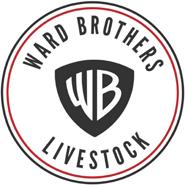

MaryAnn Ward
5 lb. bag of golden potatoes
½ block cream cheese
4 T. butter
8 oz. sour cream
1 T. onion salt (more to taste)
½ tsp. pepper milk (as needed)
Sharp cheddar cheese (shredded)
Step 1: Peel, cube, boil, and drain potatoes. Mash potatoes with hand mixer. Step 2: Add and blend into the mashed potatoes the cream cheese, butter, sour cream, onion salt, pepper and a little milk if needed. Step 3: Smooth mixture into a baking pan and top with shredded sharp cheddar cheese. Step 4: Cover and refrigerate overnight or bake right away. Bake at 350 degrees Fahrenheit until the potatoes are hot and the cheese is well melted.

MaryAnn Ward
Bowl full of fresh green beans (whole or halved with ends cut)
1 lb. bacon
1 small onion (diced)
MaryAnn Ward
Sauce Ingredients:
½ c. BBQ sauce
2 T. brown sugar
*(add to BBQ sauce)
2 garlic cloves (minced)

Toppings:
1 red bell pepper (sliced)
¼ c. red onion (sliced)
olive oil (a dash)
rotisserie chicken (chopped)
1 c. mozzarella
Parmesan cheese (grated)
2 flatbreads
Step 1: Preheat oven to 375 degrees Fahrenheit. Step 2: Sauté red bell pepper and red onion in a dash of olive oil. Step 3: Add flatbreads to a large baking sheet. Spread BBQ sauce mixture on flatbreads, then add red bell pepper, onion, and chicken. Top with mozzarella and Parmesan chees- es. Step 4: Bake on center oven rack for 10 to 15 minutes until bread is browned and cheese is melted.

4 chicken bouillon cubes
1 c. water
salt and pepper to taste
Step 1: Cut bacon into pieces. Then sauté bacon and onion together until bacon is cooked and onion is golden. Step 2: Add a cup of water and 4 chicken bouillon cubes to the bacon and onion. Mix well into a glaze. Step 3: In a stock pot, add green beans and glaze, then add enough water to cover the green beans. Step 4: Cook green beans until tender but not overdone. Add salt and pepper to taste.
Note: This is great for wine night!
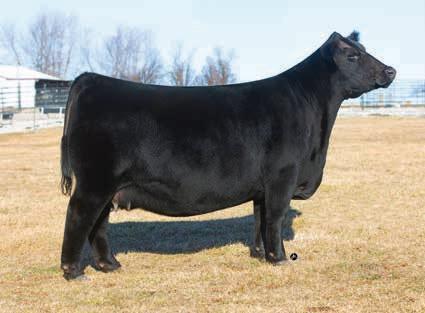

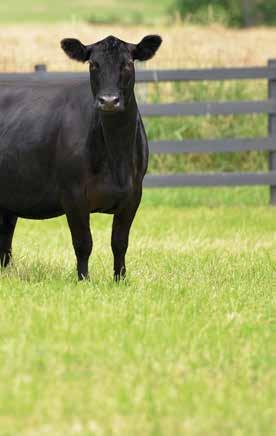
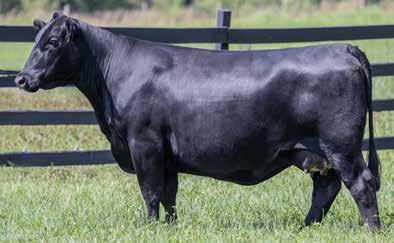
+361 $C
Reg. +*19995830 • Sire: *Connealy Clarity • Dam: +*G A R Ashland 988
CED +8, BW +2.2, WW +89, YW +163, MILK +25, CW +73, MARB +1.59, REA +1.17, $B +224, $C +361
One of the great young females to sell this fall! A cornerstone female in the Bloom program that not only has the look but has the paper to back it up. Sells with a heifer calf at side with a $430 $C.
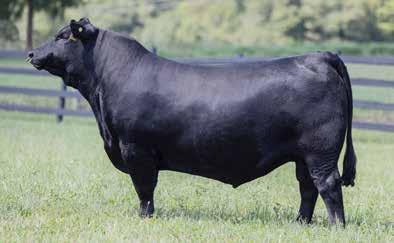
+337 $C
Reg. *20689479
Sire: +*HPCA Veracious • Dam: *Car Don Elba 123
CED +8, BW +1.7, WW +83, YW +146, MILK +40, CW +70, MARB +1.39, REA +1.19, $B +201, $C +337
The 2024 NJAS PGS Grand Champion Bull. One of the great breeding accomplishments of the late Don Bloom. This herd sire is loaded with body, mass, and three-dimensional shape with elite paperwork. He Sells!

DON BAD ROMANCE 180
The 2024 NJAS PGS Grand Champion.
CAR DON GAMMER 207 Reg. *20977774
Sire: *SG Salvation
Dam: *CAR Don Gammer 980 CED +10, BW +3.4, WW +88, YW +140, MILK +21, CW +75, MARB +1.27, REA +.96, $B +214, $C +355
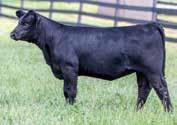
+355 $C
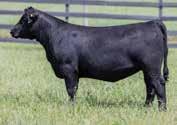
+378 $C
CAR DON MARCIA 198 Reg. *20977765
Sire: +*Poss Winchester
Dam: *Car Don Marcia 151 CED +5, BW +1.5, WW +83, YW +150, MILK +25, CW +71, MARB +1.30, REA +.89, $B +199, $C +340
CAR DON ELBA 200
Reg. *20977764
Sire: *Poss Deadwood
Dam: +*AcombAcres GLC Elba 205
CED +10, BW +.1, WW +81, YW +154, MILK +27, CW +76, MARB +1.65, REA +.99, $B +237, $C +378
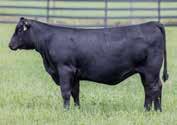
+340 $C

SELDOM REST BARDOT 5016
Reg. +*18197663
Sire: +*EXAR Classen 1422B
Dam: +*Seldom Rest B F Bardot 9051 CED +4, BW +3.6, WW +55, YW +91, MILK +24, CW +32, MARB +.67, REA +.43, $B +134, $C +206

CAR DON ISABEL 163
Reg. *20162123
Sire: +*Deer Valley Growth Fund
Dam: +*CAR DON Isabel 203
CED +2, BW +2.8, WW +98, YW +178, MILK +35, CW +100, MARB +.55, REA +.92, $B +191, $C +293
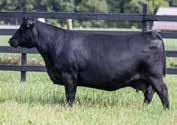

+259 $C

CAR DON MUTUAL FUND 166
Reg. +*20471570
Sire: +*Deer Valley Growth Fund
Dam: +*CAR Don Blackbird 935
CED +12, BW -.6, WW +90, YW +165, MILK +33, CW +61, MARB +.52, REA +.85, $B +143, $C +259
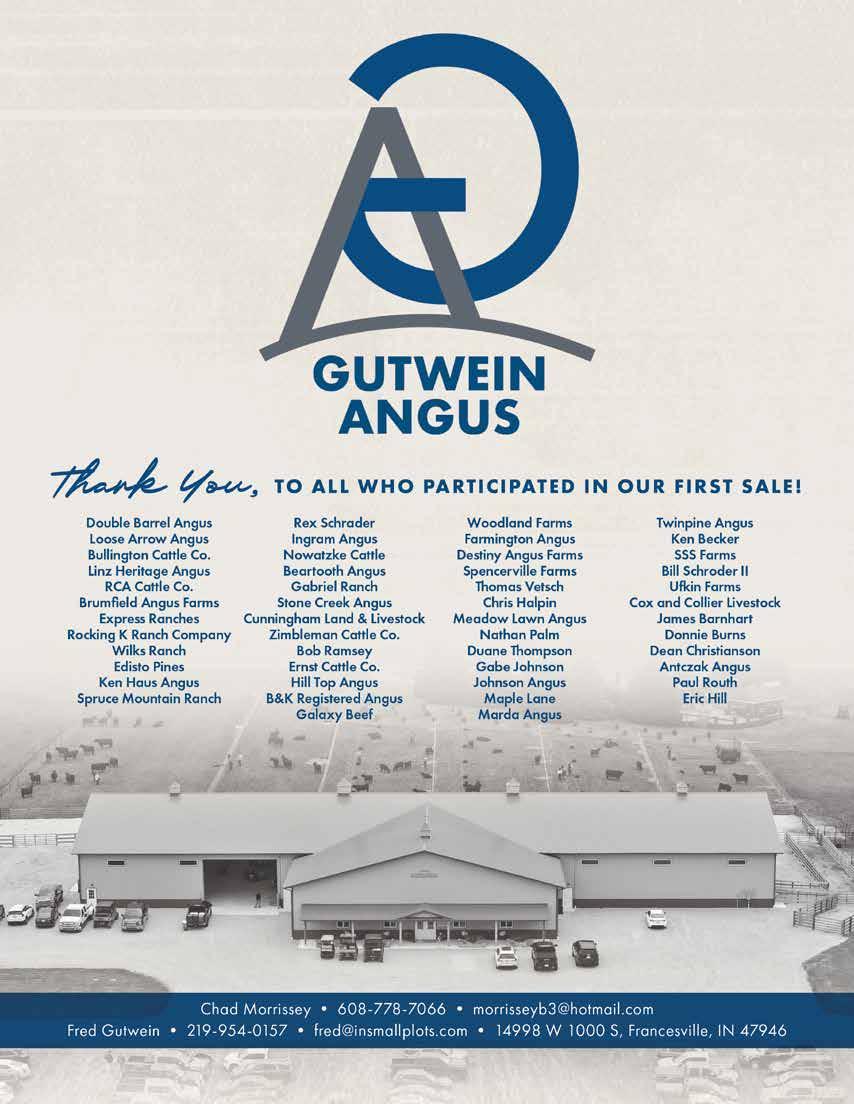
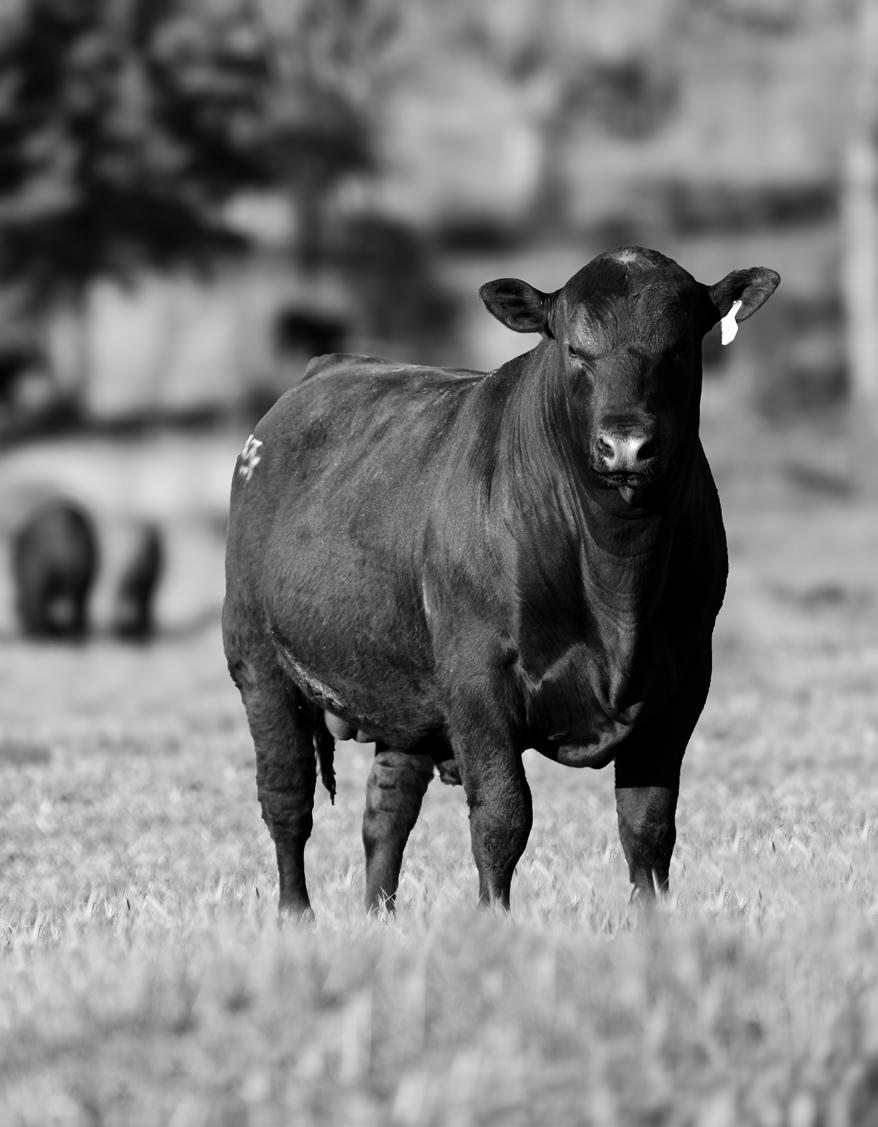
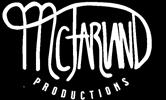
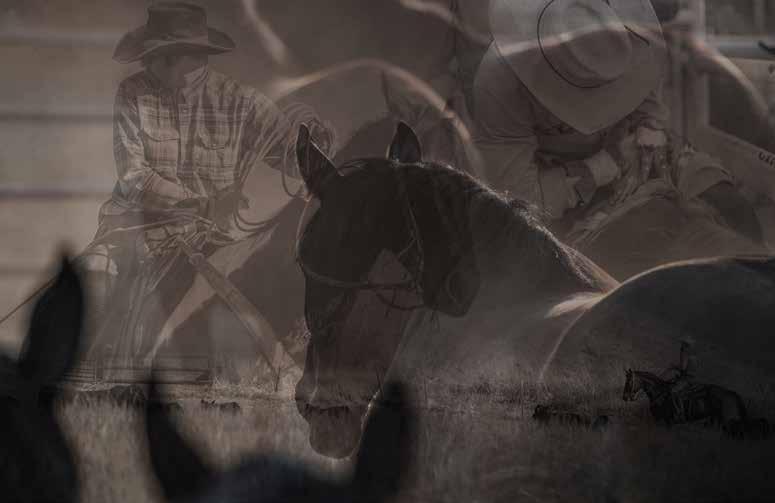
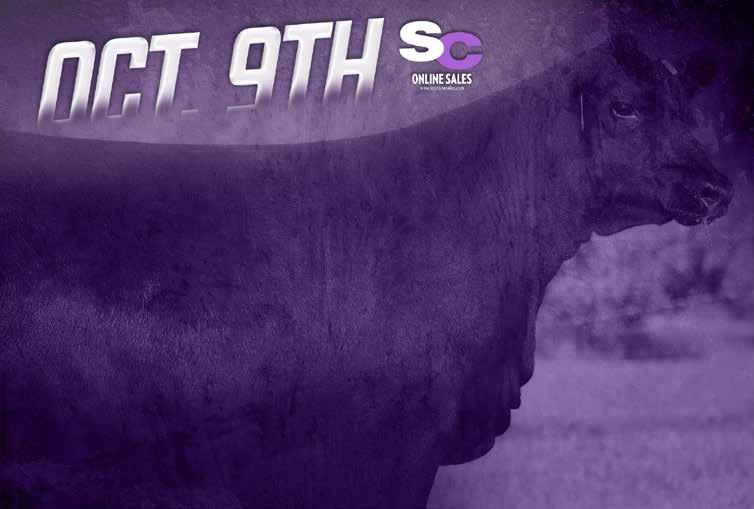

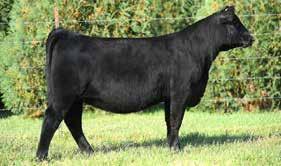


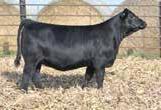



s I wrote this article, we have received our first snowstorm of the winter and my four little ones could not wait to throw on their snow pants and go play in the white stuff! Me on the other hand, not so excited about leaving the warmth and comfort of my office. It is because they are looking forward to joy and fun and I am dreading frozen waters and/or sick cattle. Either way, it is safe to say that winter is upon us!
A review of the current cattle market.
this fat cattle deal to continue an upward trend going into the new year and into spring. How high we can go, that is the million-dollar question!
contributed article by Kirk Lynch Lynch Livestock Inc. and Humeston Livestock Exchange, Humeston, Iowa humestonlivestockexchange.com
ver the past couple of weeks my travels have taken me through large parts of the Midwest. Outside of my home base in Iowa and Missou ri I have been through Wisconsin, Minnesota, Nebraska, South Dako ta, and Wyoming and it is safe to say harvest is in full swing and it looks like it is going to be a boun tiful one. There should be plenty of feed out there for the next year and beyond. Which is always a positive to keep cost of grains and feed bills in check. With that being said, we have seen lower markets across the board due to economic issues and PR scares. Let us look at what we have been seeing in the barns.
Now to look at some of the market reports that we have been seeing in the barns. The fat cattle market has been on a hot streak for several weeks, until this past week, when we experienced a slight dip in the market. We have seen some highs in the mid to high forties, but these have been some extremes. Most cash cattle in the country have been trading at forty level or slightly higher the past couple of weeks. I expect there to be a few bumps in the road, but I expect
The higher fat cattle market is driving a higher price for the feeder cattle market as well, even with the higher feedstuff inputs. We have seen some front end big strings of 800 pounds bringing well into the sixties and some 600-pound cattle bringing into the seventies and eighties. Once again these are some extreme tops. We have been trying to fill up our own lots as fast as possible, as I am not sure the feeder cattle are going to get any cheaper. We have been able to find cattle at cheaper prices than that and so when we do projects they are in the black.
The cull cow and bull market has lagged the fat market, as from all reports there have been around six
Kirk Lynch, Lynch Livestock Inc., Waucoma, IA Kirk is the Beef Division manager for Lynch Livestock Inc. and oversees all aspects of their backgrounding and cattle feeding operations throughout Iowa and Kansas. He is also deeply involved in the newly reopened Humeston Livestock Exchange in Humeston, Iowa. In addition, Kirk and his wife Mary own and operate Heartland Simmentals in Northeast Iowa, which is a seed stock operation that consists of 500 registered Simmental and Angus cows. They have four children: Gabrielle (8), Brayden (7), Vivian (5), and Bianca (1).
The feeder market has taken a substantial hit when looking at the board. Luckily for producers, the cash market in the barns has not been as substantial. While it has been lower, it seems to have steadied out as of lately. Seeing most class es and weights of cattle on average about $10 lower than they were a month ago. I expect feeders to be strong throughout the fall as there just is not the numbers out there.

Humeston, Iowa 641-877-6092


percent more last year, making supply of cows. down, which be into next year, cow and bull with the same market.
The breeding been up and cently, I heard commercial pairs $2,000 and then can buy all the I want for $1,200 are looking to now is the time reasonably priced with increased are going to be ply over the next Wishing everyone Christmas and

Fat cattle have been anywhere from $8 to $10 lower as well. As producers we have become our own worst enemy and understandably so. With cheap and plentiful corn and feedstuffs we continue to feed cattle longer and heavier. While we
and there is plentiful feed especial ly for cows and heifers throughout the country. Seeing most fall pairs being in the mid to high $2,000’s and depending on the quality and age of the stock some bringing in the low $3,000’s.
Wishing everyone a safe and bountiful harvest and fall and if there is anything you need just give me a call. Until next month!




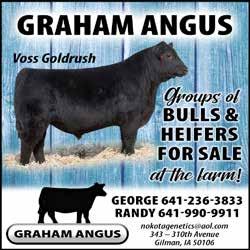


FOR IMMEDIATE RELEASE NEW TEAT AND UDDER RESEARCH EPDS AND REPORT RELEASED BY THE AMERICAN ANGUS ASSOCIATION AND ANGUS GENETICS INC.
New research EPDs add to the selection tools available to Angus producers prioritizing maternal traits.
The American Angus Association® and Angus Genetics Inc. (AGI®) released two new research expected progeny differences (rEPDs) on Aug. 22. The rEPDs characterize teat size and udder suspension traits and are based on phenotypic data collected by Association members, pedigrees and genotypes in a single-step genetic evaluation model.
Good udder structure plays an important role in beef production; contributing to calf survival, calf growth and cow longevity. Teat size (TEAT) and udder suspension (UDDR) rEPDs expand the suite of selection tools available to Angus breeders to improve maternal function and the productivity of their herds.
“We know these are two traits of interest to the membership and are excited to be releasing the research EPDs after a multi-year research project that would not be possible without member data,” said Esther Tarpoff, director of performance programs for the Association.
“Members have quickly embraced collecting these phenotypes, as evidenced by the number of records for each trait used to build the research EPDs.”
More than 148,000 phenotypic records for each trait were collected from 87,000 cows to contribute to the dataset for the rEPDs, with more to be added each calving sea-
son. The records are collected by members within 24 hours of a calving event. Females are given an individual score for both teat size and udder suspension using scales from 1 to 9. Detailed scoring guides can be found on angus.org.
“Over the past several years, we have been focused on validating the Angus breed’s impact as the matriarch of the US beef industry, as it has been historically known as,” said Kelli Retallick-Riley, president of AGI. “From an AGI perspective, it means objectively characterizing maternal traits of economic importance, so the users of Angus genetics have the selection tools needed to make genetic change.”
Submitted scores range from 1 to 9, representing the entire scoring scale. Analysis of the nearly 300,000 records showed overall good udder structure among reported Angus cows. The average score was 6.6 for both traits indicating intermediate to small teats and intermediate to tight udders. Additional results of the TEAT and UDDR research are available on angus.org in the full report.
“We know the pace of genetic change is moving faster than
ever with the frequent changeover of sires in many seedstock operations,” Retallick-Riley said. “In some cases, young bulls are being replaced before most of their daughters are in their second year of production. Because of that, maternal traits like udder conformation become even more important to ensure we are promoting sound breeding decisions.”
The release of TEAT and UDDR follows that of the Functional Longevity (FL) rEPD, which measures the ability of a cow to produce a calf year after year. The three rEPDs are currently available to members that have been a part of early phenotypic data collection for the respective traits, allowing rEPDs to come to fruition. A list of AI sires for each of the rEPDs is available to members on the corresponding research pages on angus.org.
The three rEPDS are anticipated to be released as weekly production EPDs during the annual evaluation updates in late spring of 2025. Research on how these three new traits should be incorporated into Maternal Weaned Calf Value Index ($M) is currently ongoing with potential updates to the index likely to be made during the spring update.

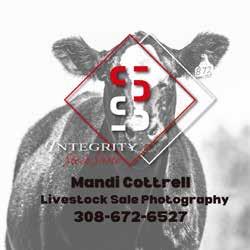
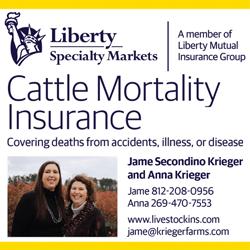









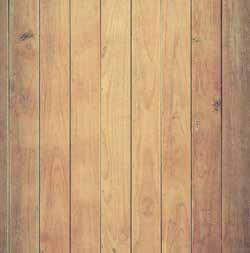
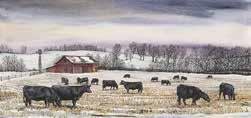
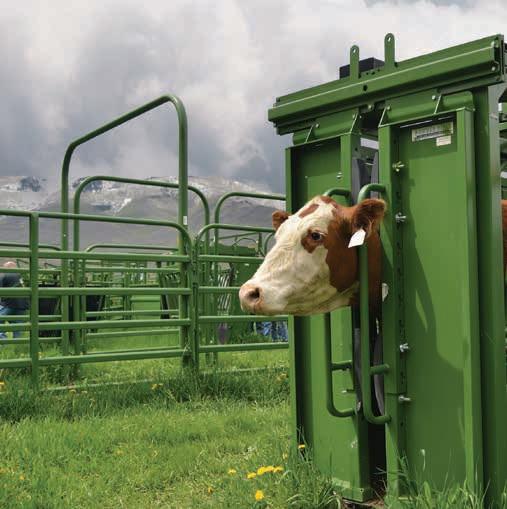

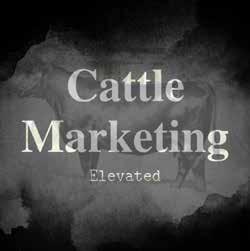












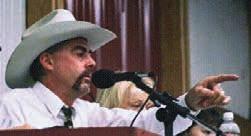




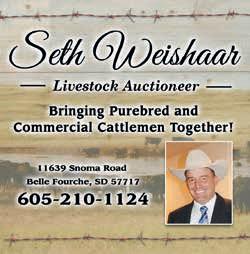
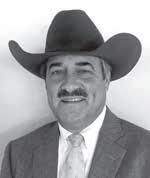

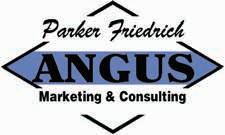
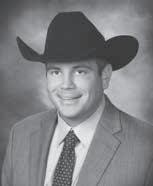
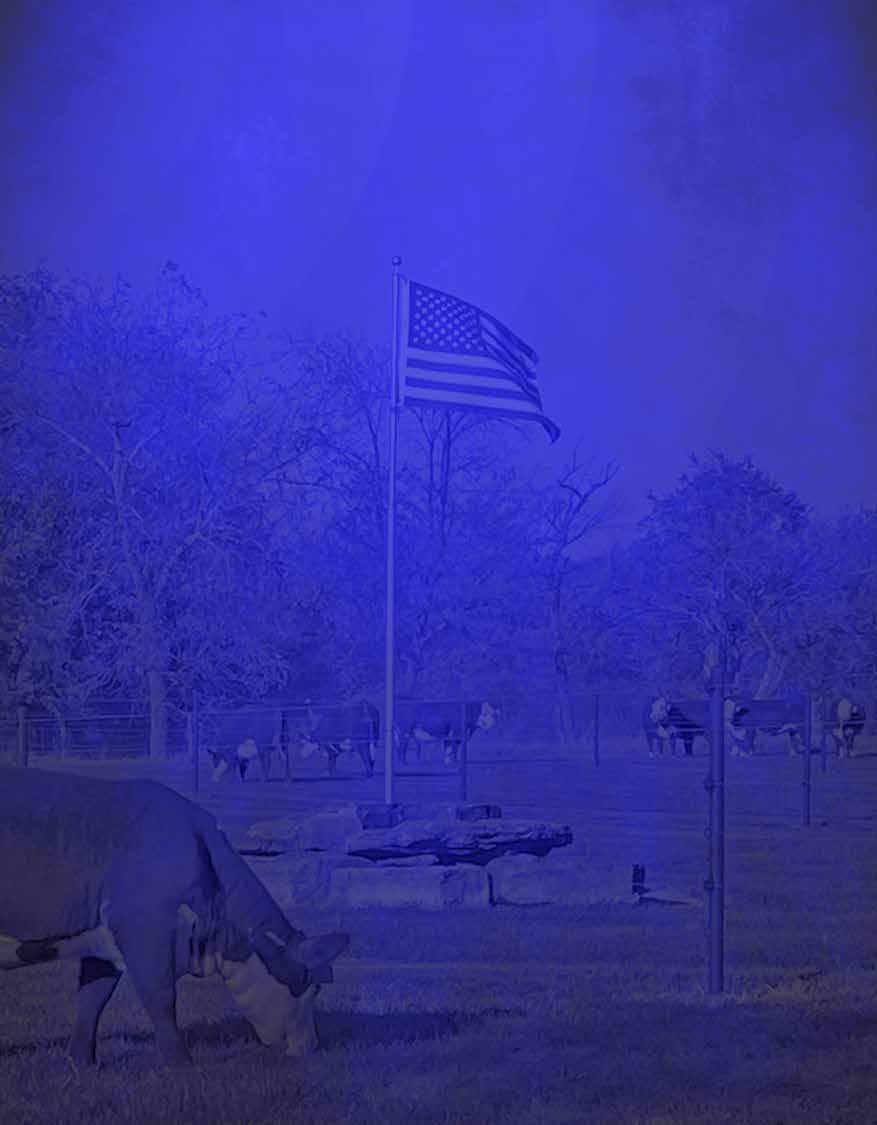

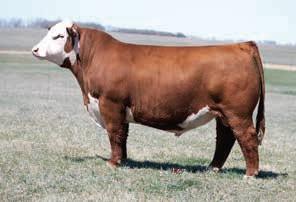
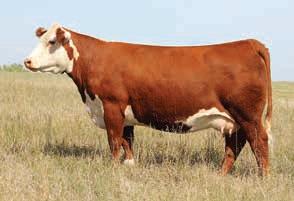
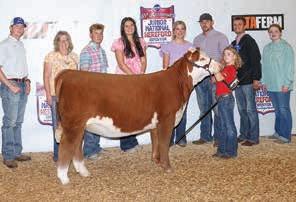
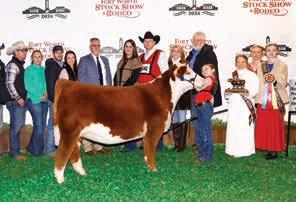
Bear Mountain Angus
Behlen Country
Bloom Angus Farm
Blue Lake Plastics
Cason’s Pride and Joy
Cattle Visions
Circle M Farms
CJ Brown Studios
Clear Springs Cattle Co.
Collison Angus
Connor AgriScience
Conover, Al
Conover, Jeanne
Crawford, Scott
CSL Auctions Inc.
Double B Angus
Family Legacies Sale
Fawcett’s Elm Creek Ranch
Females of Fall Sale
FERA Diagnostics & Biologicals
Friedrich, Parker
Gerloff Farms
Gilchrist, Kyle
Gold Buckle Cattle Services
Graham Angus
Gutwein Angus
Herbster Angus
Humeston Livestock Exch.
Integrity Stock Shots
J.J. Scheckel Angus
Janssen Angus
Jensen Bros. Herefords
Kip Wallace Cattle Co.
Lacy’s Red Angus
Layton, Dustin
Legacy Unlimited Sale
Liberty Mutual Insurance
Linz Heritage Angus
Lowderman, Monte
Lowderman Auction Options
Maternal Dreams Sale
Matthews Coach’s Corral
McFarland Productions
Mead Farms
Mid Continent Farms
Missouri Simmental Sale
Money Maker bull
Morgan Ranch
Muir Embroidery
Neil Farms
Nowatzke Cattle
Oakdale
Powder River
Power Performance Ped. Sale
Rawhide Portable Corral
Reds on the Prairie Sale
Renovo Seed
Safety Zone Calf Catchers
Schrag/Nikkel Show Cattle
Schroeder Angus
Sisco Brothers
Slate Group
Star G Ranch & Friends
Summit Ag Group
The Judge Source
TJB Gelbvieh & Balancer
Valley Oaks Angus
Vitalix Inc.
Volk Livestock
Voss Angus
Wall Street Cattle Co.
Ward Brothers Livestock
Weishaar, Seth
Westway Feed Products
Wilks Ranch
Y-Tex Corporation
ZWT Ranch


About the Stockman.

My cow herd is best described as a 4-H project that has gotten out of control. My parents gifted me a Hereford heifer and steer for my first 4-H project. My older brothers convinced our parents to take a family vacation to Ft. Worth to see the National Polled Hereford Show when I was in first grade. The following summer my brothers

showed at the first ever Polled Hereford Junior National in Nashville, TN. After attending those events I knew I always wanted to raise Hereford cattle.
Today with the help of my wife, Keely, and our grown children, Jackson and Hannah, we run 100 brood cows. Jackson lives in Sioux Falls, S.D., but does make it home frequently and Hannah moved back after being away for a few years. Each member of the family brings

their own unique contribution to our operation. When both kids started in 4-H, just as my parents did, we gifted them a heifer and steer, which was the start of their own herd and helped spark a love for Hereford cattle. Over the years, they purchased heifers to show, in return bringing different genetics into our herd which has improved and grown our family’s operation. We are blessed that both Jackson and Hannah express an interest in the operation. Hannah is involved with much of the day-to-day happenings, while Jackson living in South Dakota has taken a strong interest in sire selection and does most of the mating.”
What is your least favorite job on the farm?

I really do not like getting out of bed in the middle of the night and checking cows during calving. Thanks to barn cameras and everybody but myself having access to the cameras I leave that up to the rest of the family.”
What about the beef cattle industry excites you the most?

It excites me to see the next generation be so excited about the cattle industry. They are willing to put in the time and seek out the resources to help them be successful and excel.”
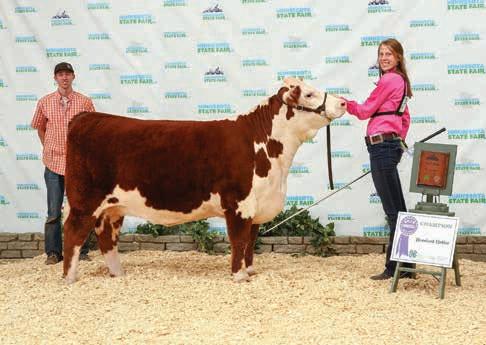
Which animal (any species) has left the greatest impact on you?

Jackson and Hannah purchased a heifer calf from Kevin and Sheila Jensen in 2011. Her first calf was reserve champion at AK-SAR-BEN and her first granddaughter was champion at the Minnesota State Fair in 2016. The kids have done very well with this cow family, they have had the opportunity to sell both bulls and females over the years, which helped get them through college. Unfortunately, “Brenda” left the farm this spring and I can honestly say I did shed some tears on my way home from the sale barn. However, her legacy still lives on, my favorite cow on the farm today is a granddaughter.”
What is the most used tool on your farm? How old is it?

Even though I didn’t think we needed a 4-wheeler 9 years ago, it has become a game changer on the farm. It makes chasing and checking on cows a lot easier, there isn’t a day that it does not get used. Our 2015 Polaris Sportsman 550 is nothing fancy but gets the job done.”
Describe your best and worst day.

I always say the best day of the year is when the cows go to pasture, and we quit feeding hay. The worst day is taking one of those special cows to the sale barn.”
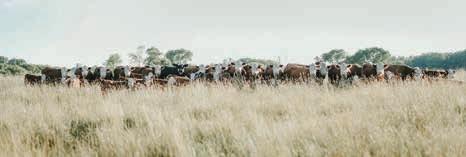

Your go-to sorting apparatus?

I’ve become a big fan of my sorting sticks.”
Your favorite non-farm activity to do in your free time?

I enjoy going to high school sporting events.”
The most important lesson you’ve learned in this business?

The most important lesson I’ve learned is to be honest and have integrity. Reputations are hard to rebuild.”
UPCOMING SALE: Monday, October 7, 2024
Sale on Smart Auctions
*Open House October 5-6, 2024
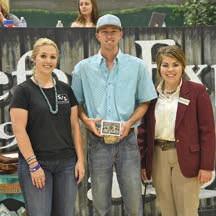
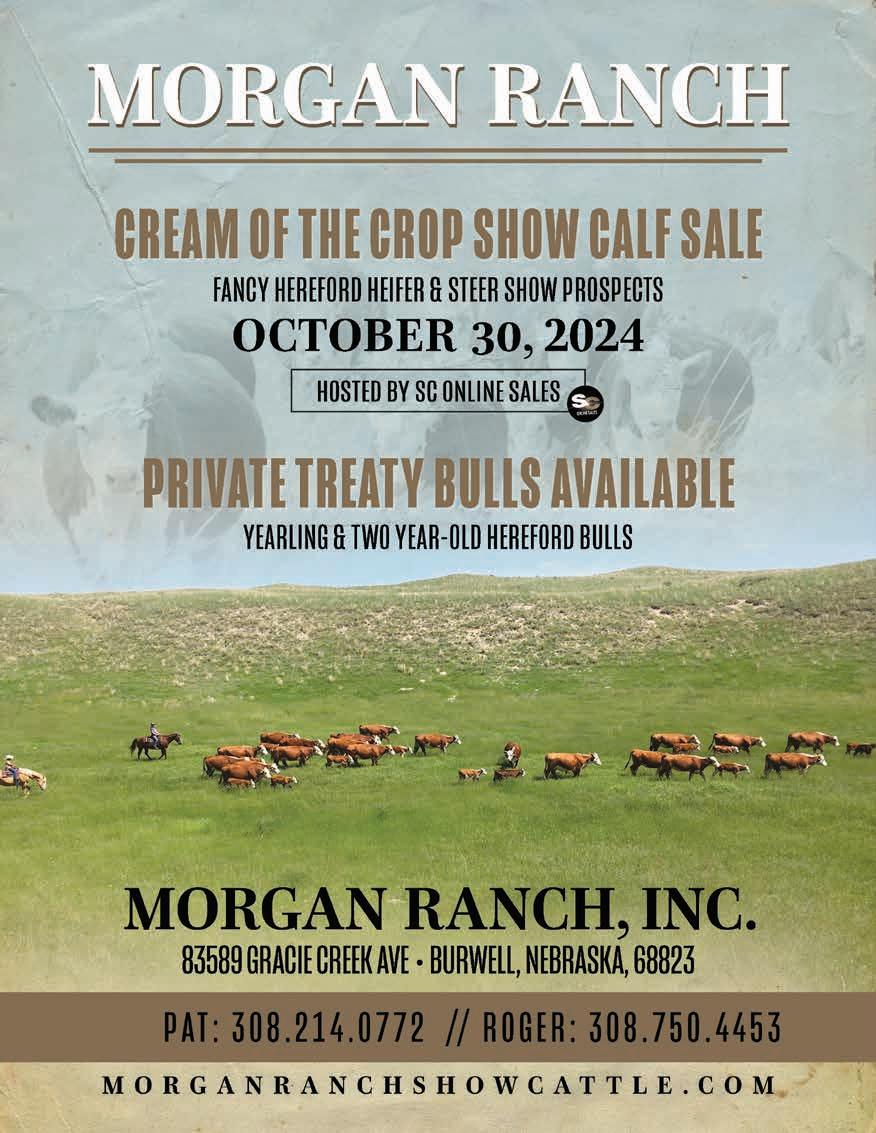
CASON’S MISS TABITHA L8D
PB SM • Sired by KBHR BOLD RULER H152
ASA#4336990 • Bred to Hooks Galileo 210G

CASON’S MISS GLADUS L95DW
PB SM • Sired by RUBYS GUARDIAN 107J
ASA#4313298 • Bred to GCC Night Owl 3104L

CASON’S MISS CAITLIN L10D
3/4 SM • Sired by GLS DECLARATION D611
ASA#4388917 • September Show Prospect
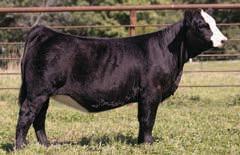
CASON’S MISS SOPHIE M13F
PB SM • Sired by HOOK`S EAGLE 6E
ASA#4388922 • February Show Prospect
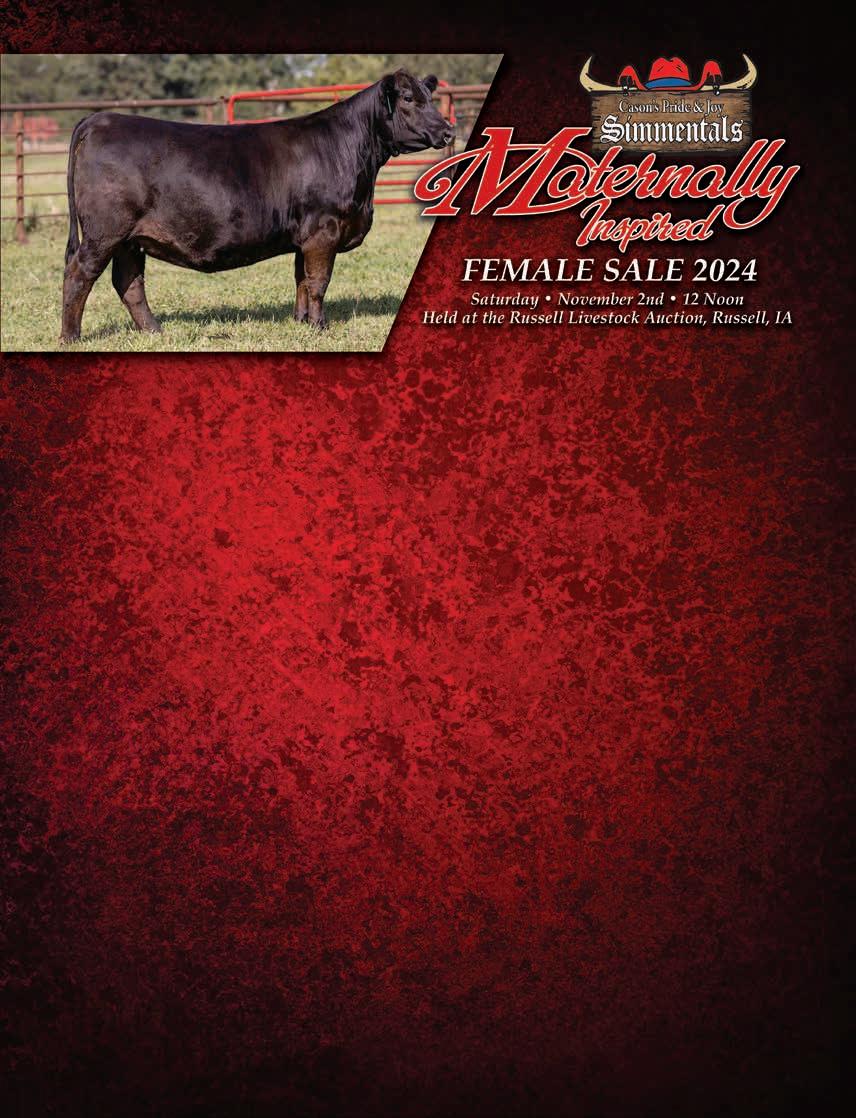

CASON’S MISS ZELDA L8761 1/2 SM • Sired by TSN EAGLE G618 • ASA#4336983 • Bred to Hooks Galileo 210G
ELITE LOTS WILL SELL ON NOVEMBER 2ND!

CASON’S MISS LILIANA M37
PB SM • Sired by LCDR RESERVE 210J ASA#4388921 • March Show Prospect
or

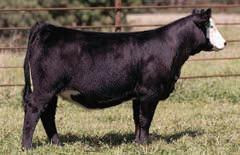
CASON’S MISS FAITH M37F
PB SM • Sired by LCDR RESERVE 210J
ASA#4388923 • January Show Prospect Spring Fancy Show Heifers Powerful Fall Open Heifers Elite Spring Bred Heifers
